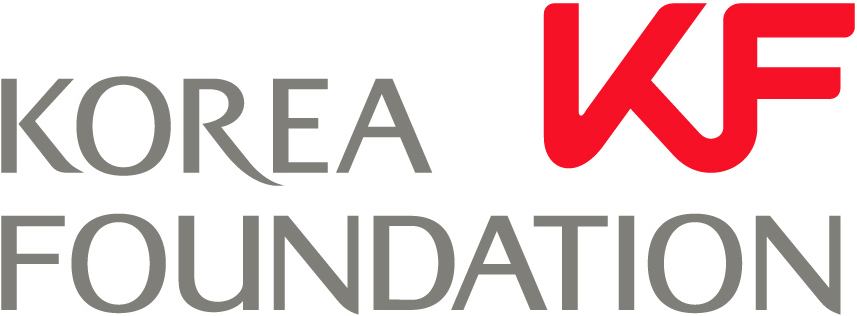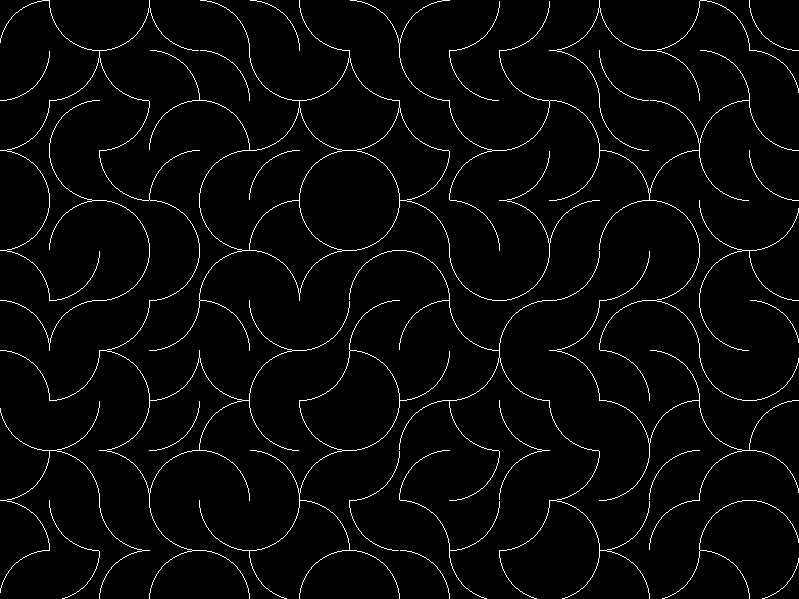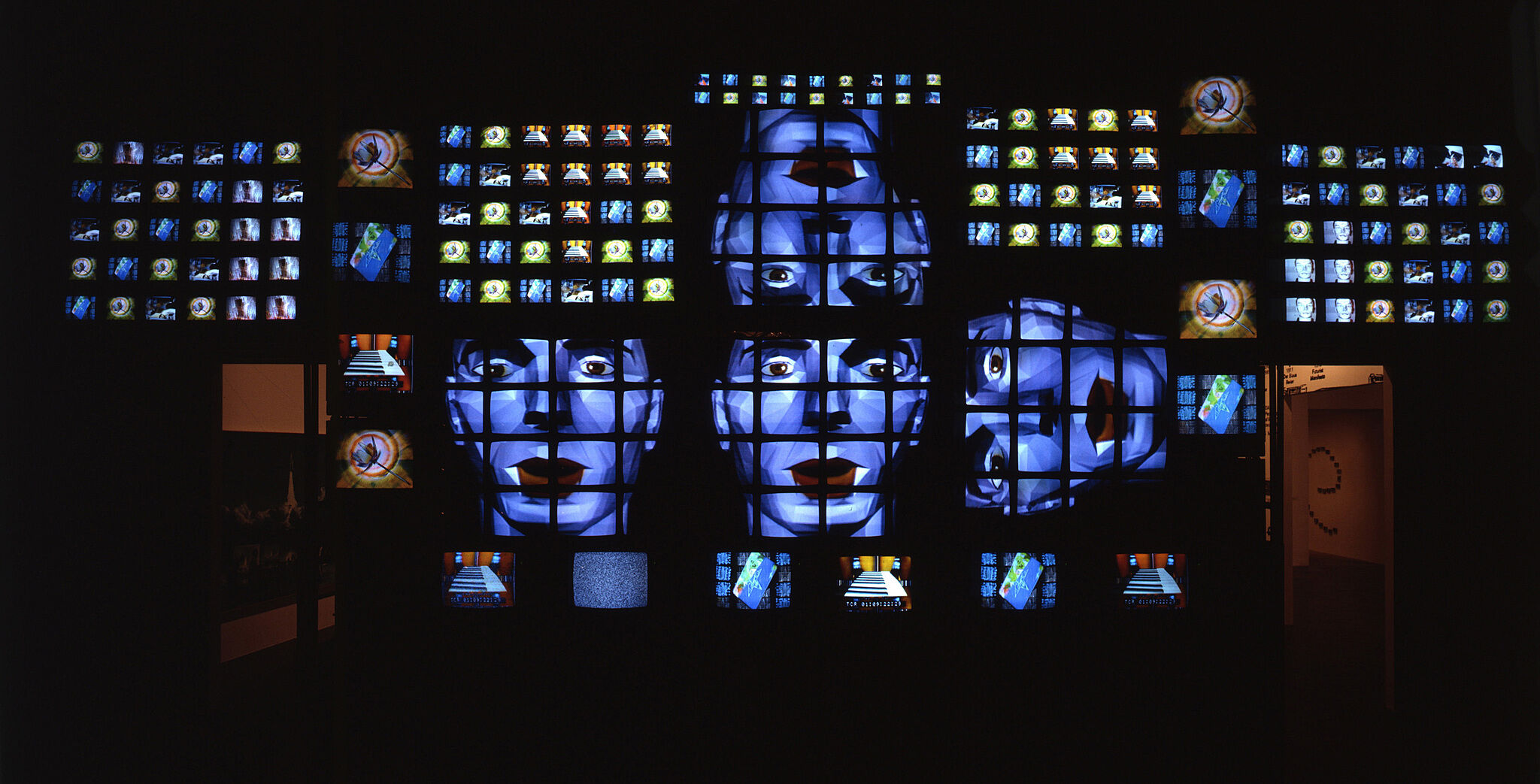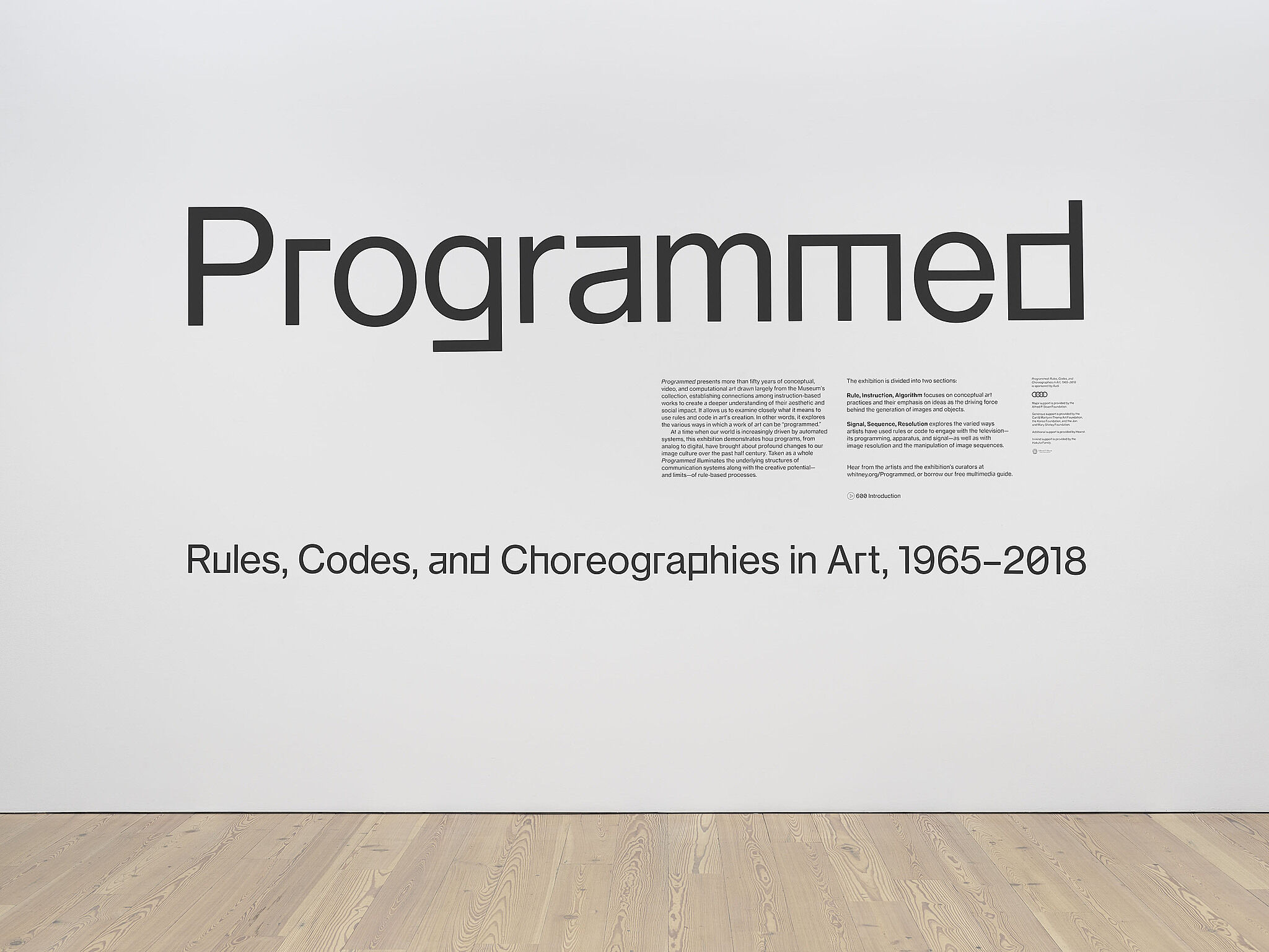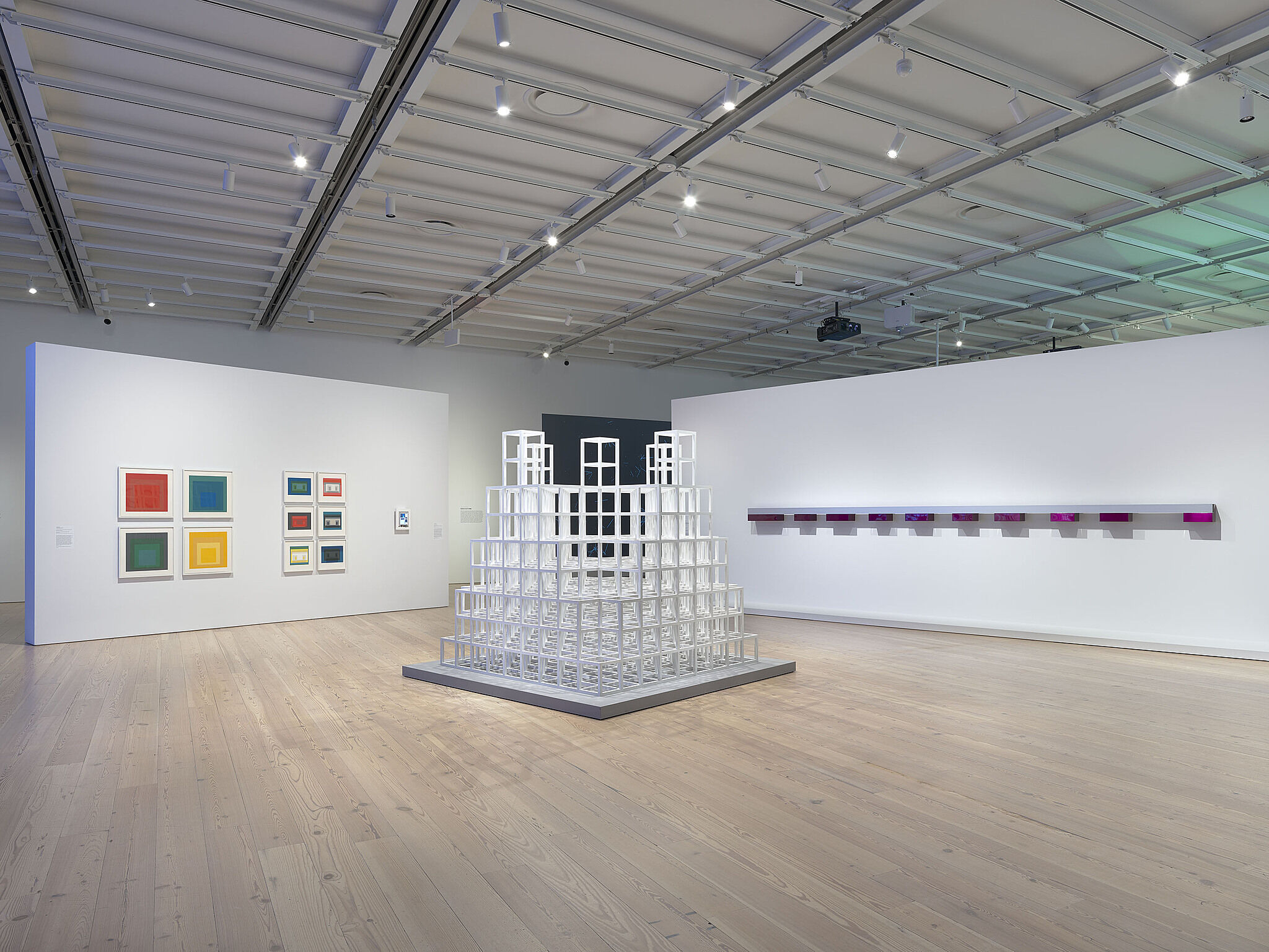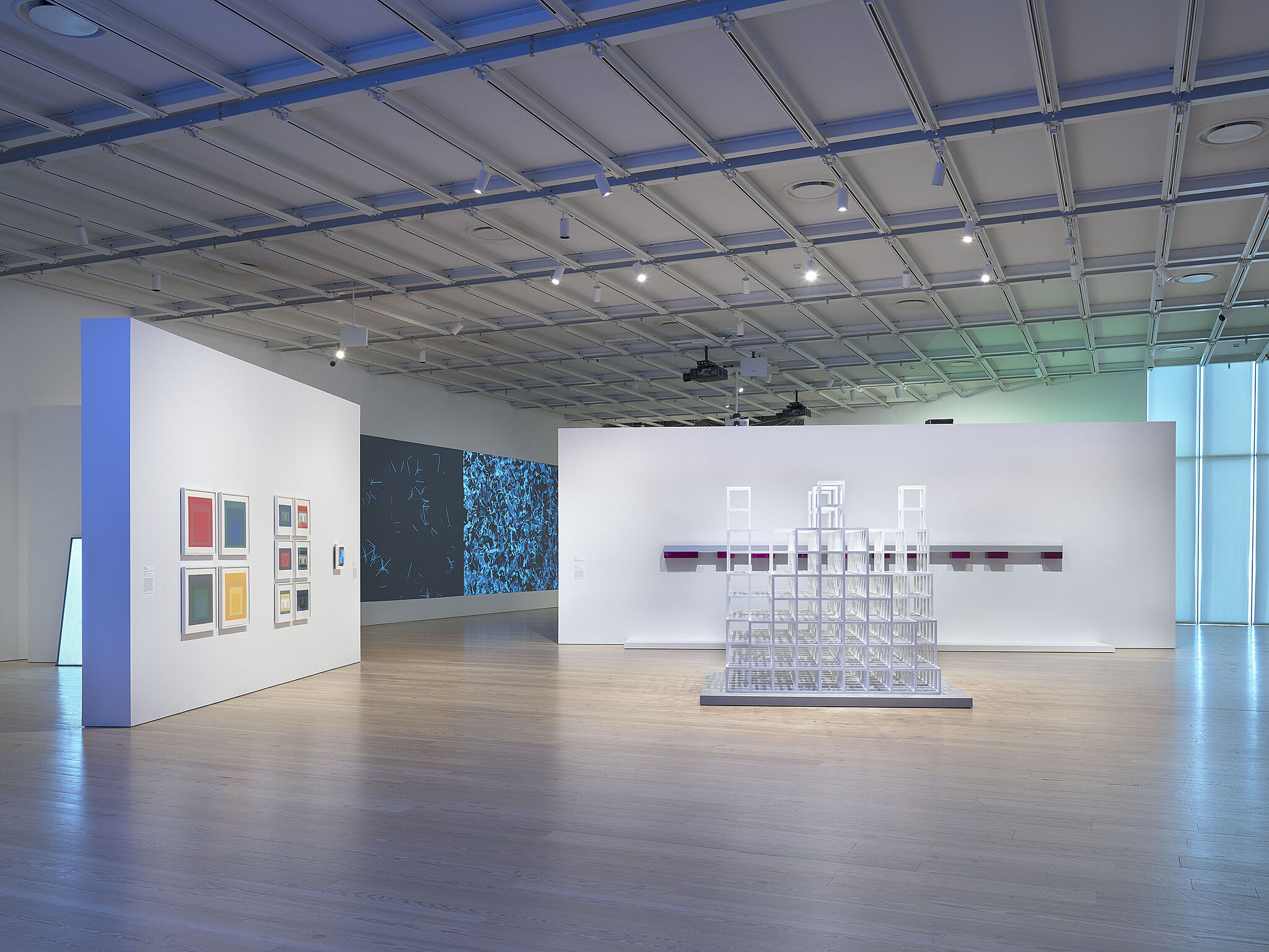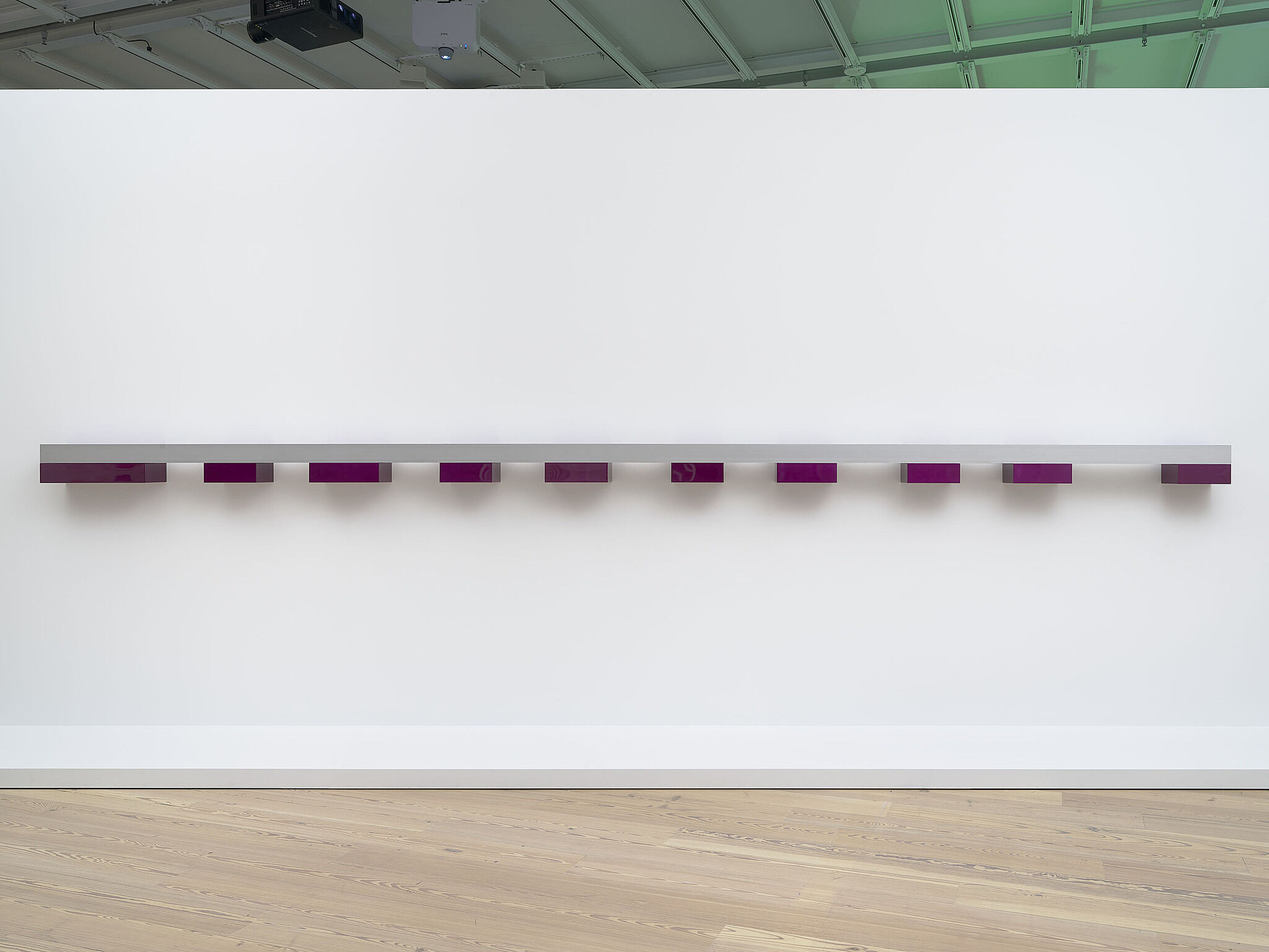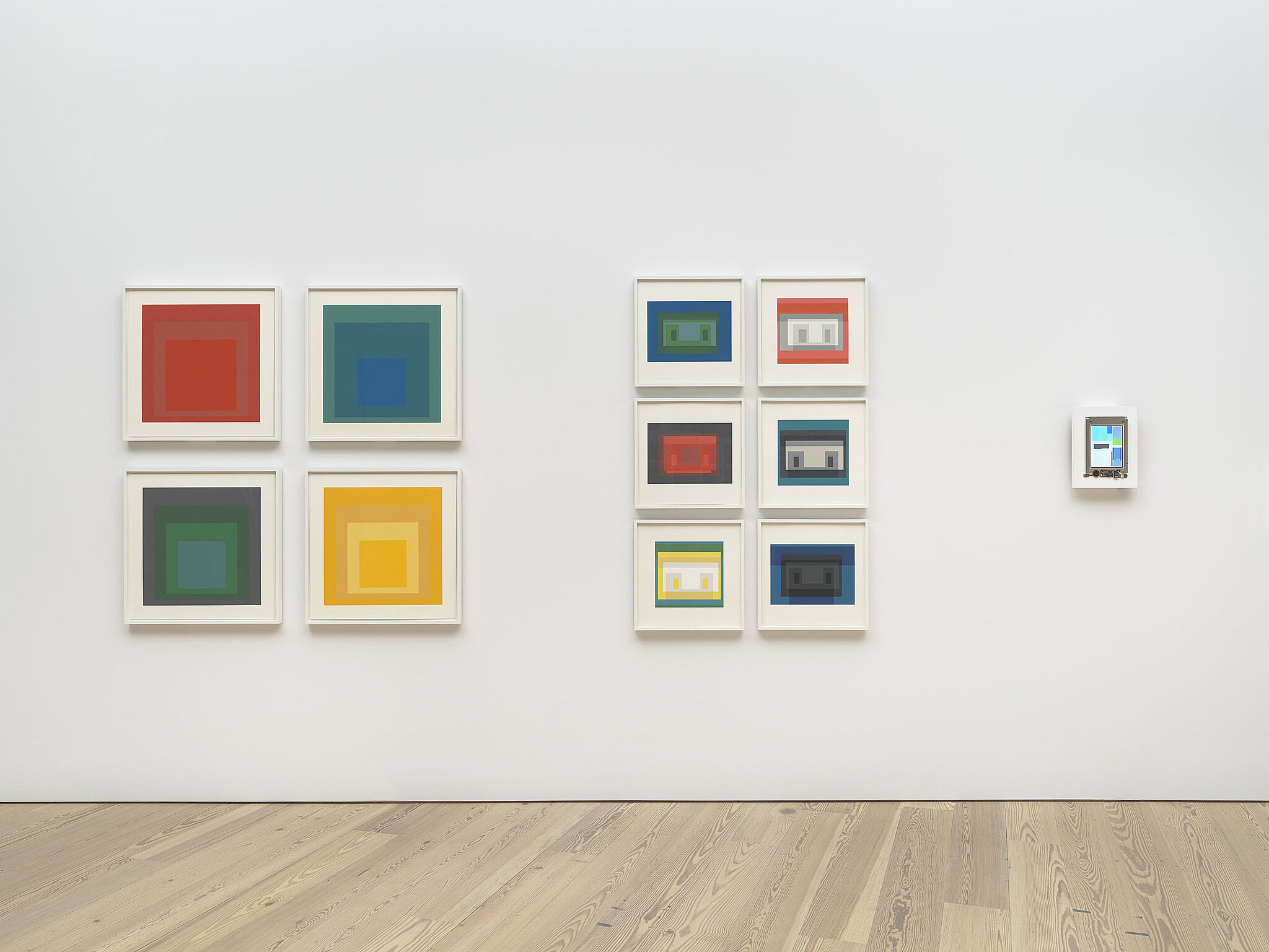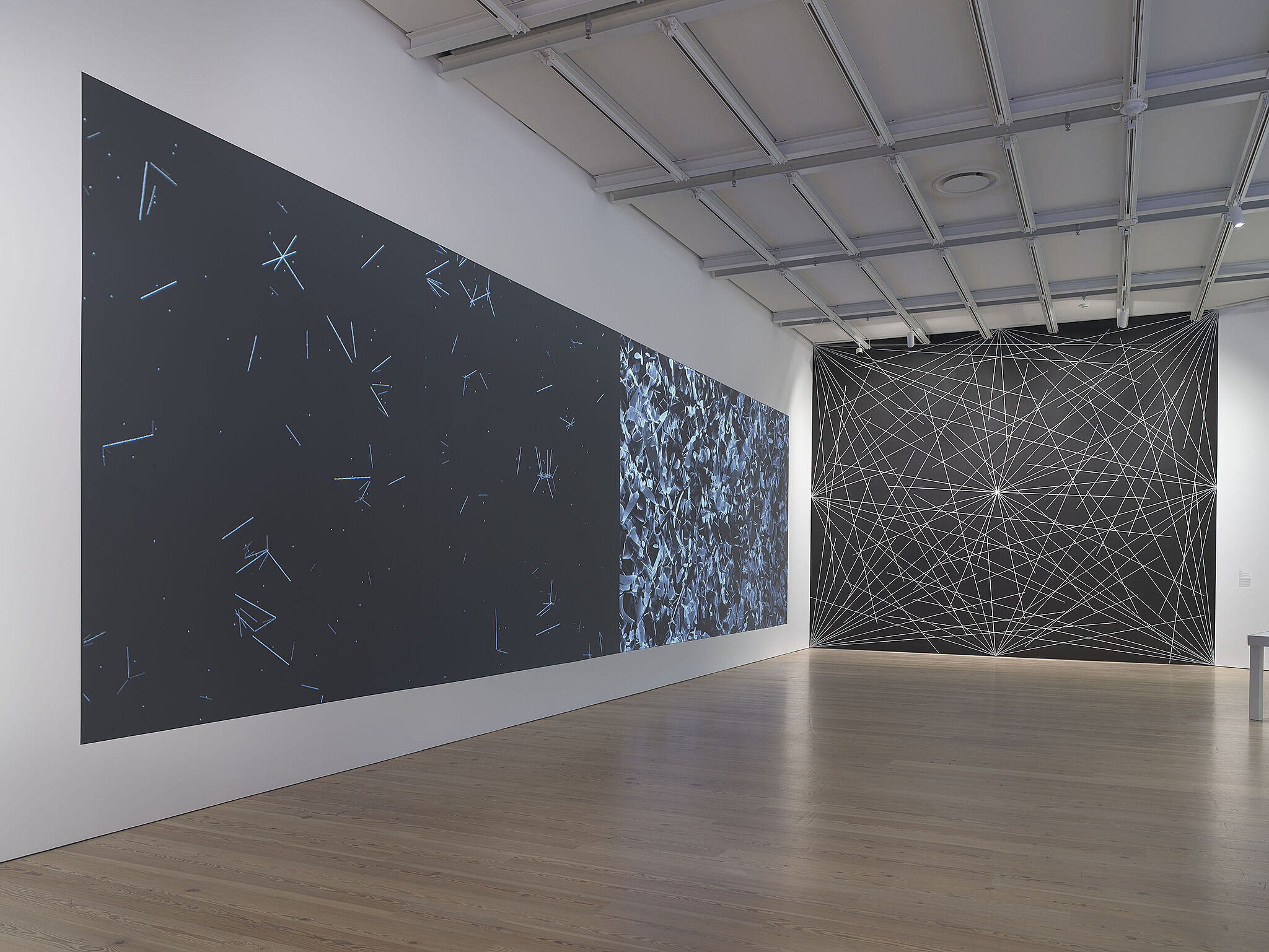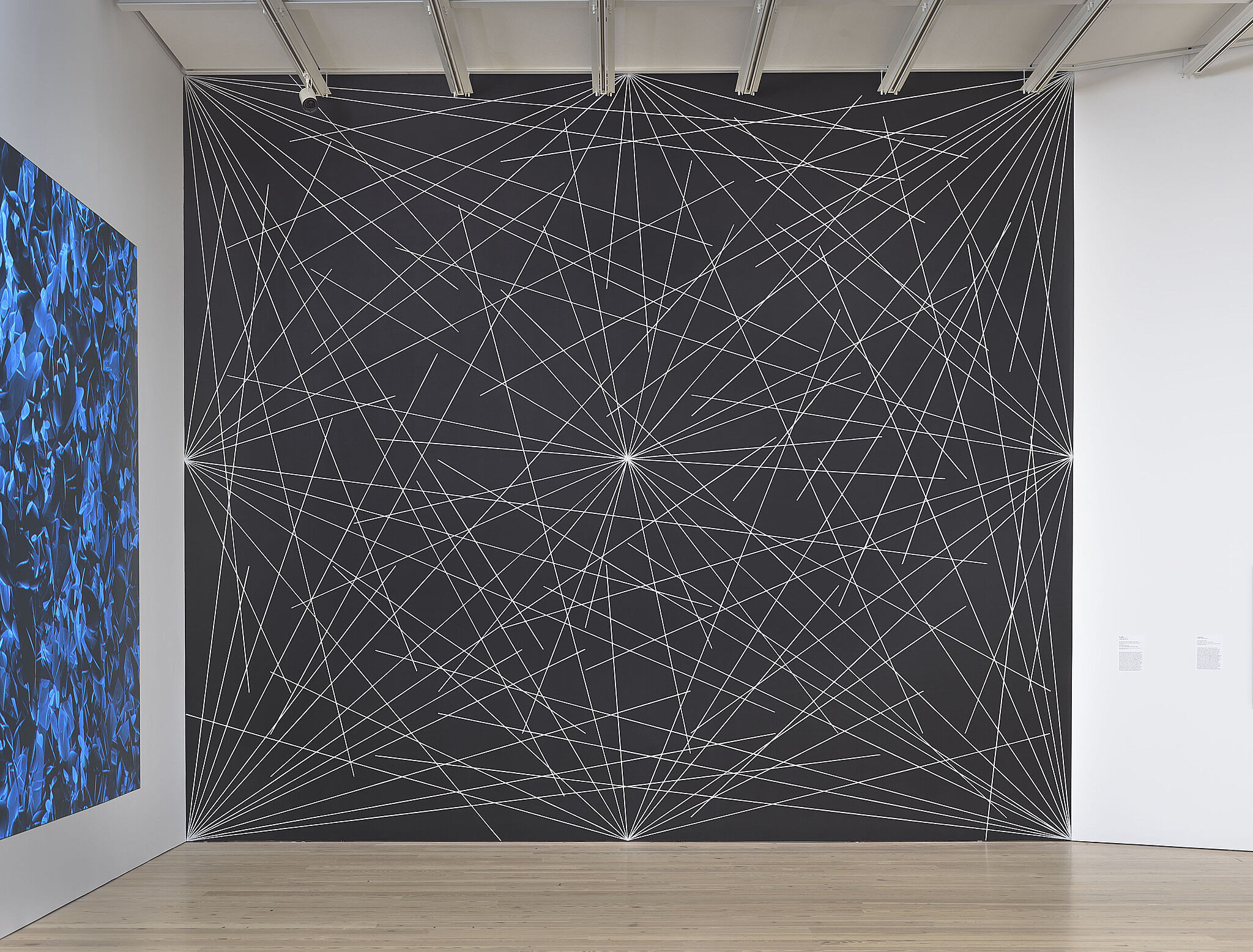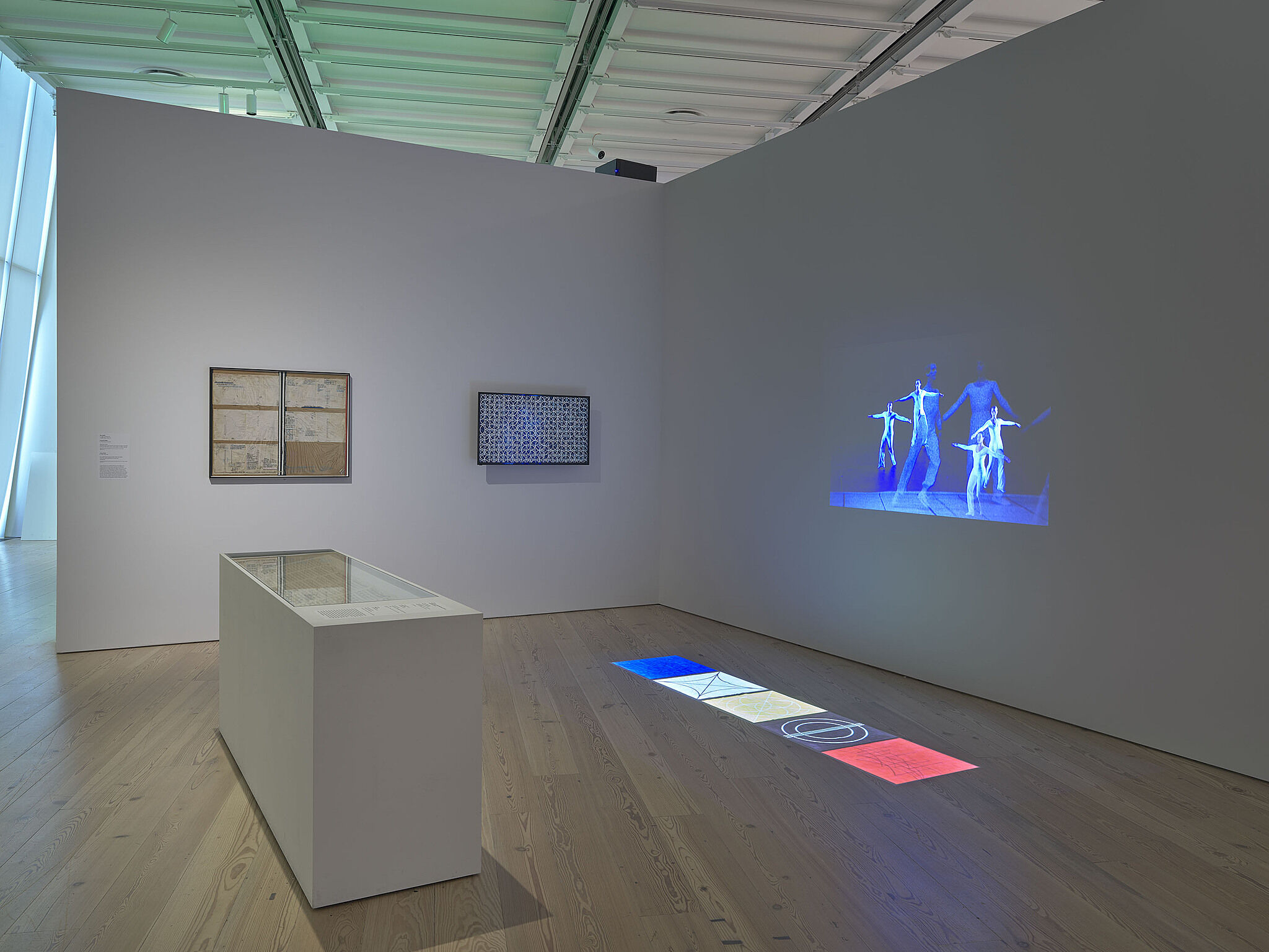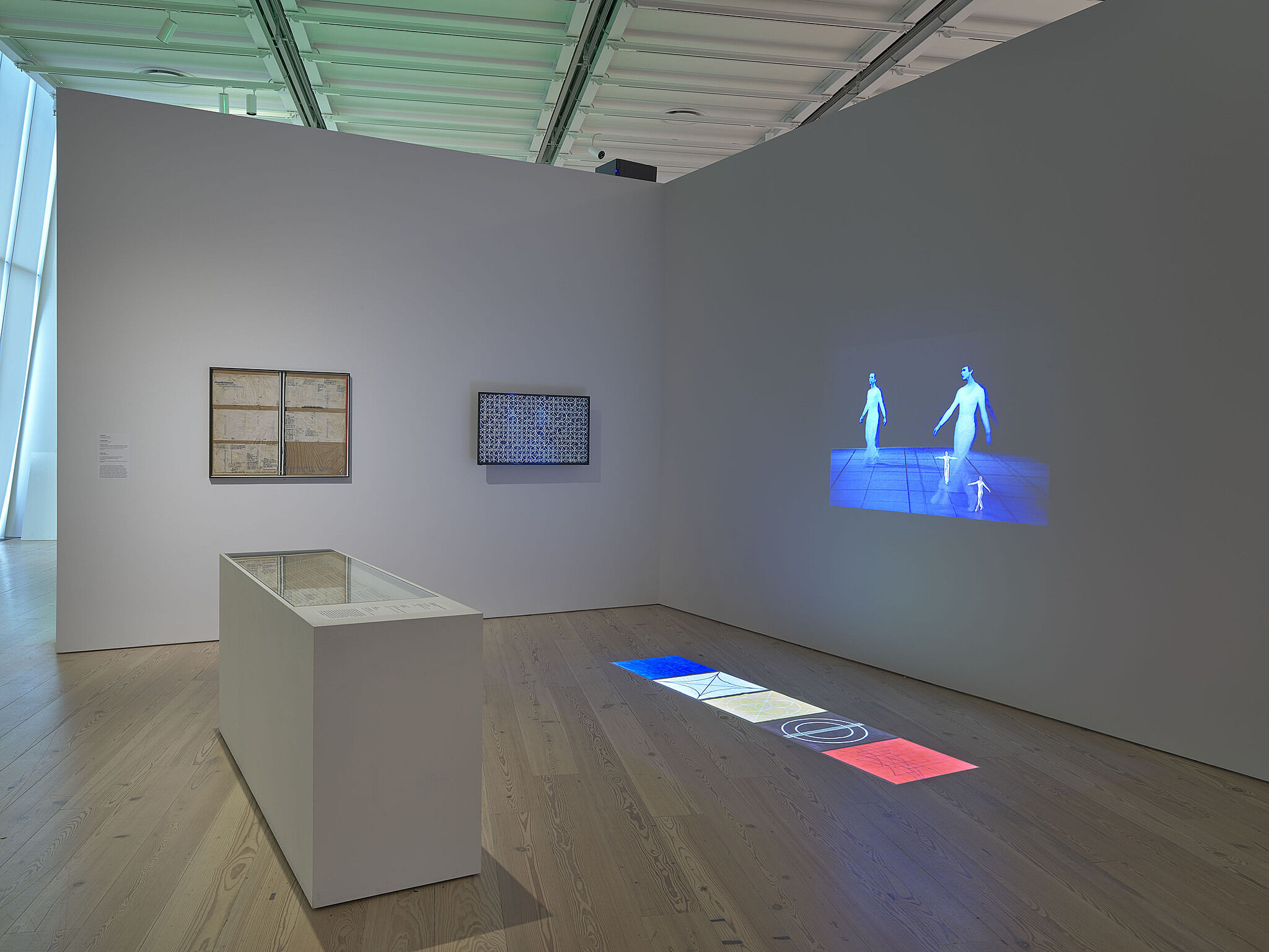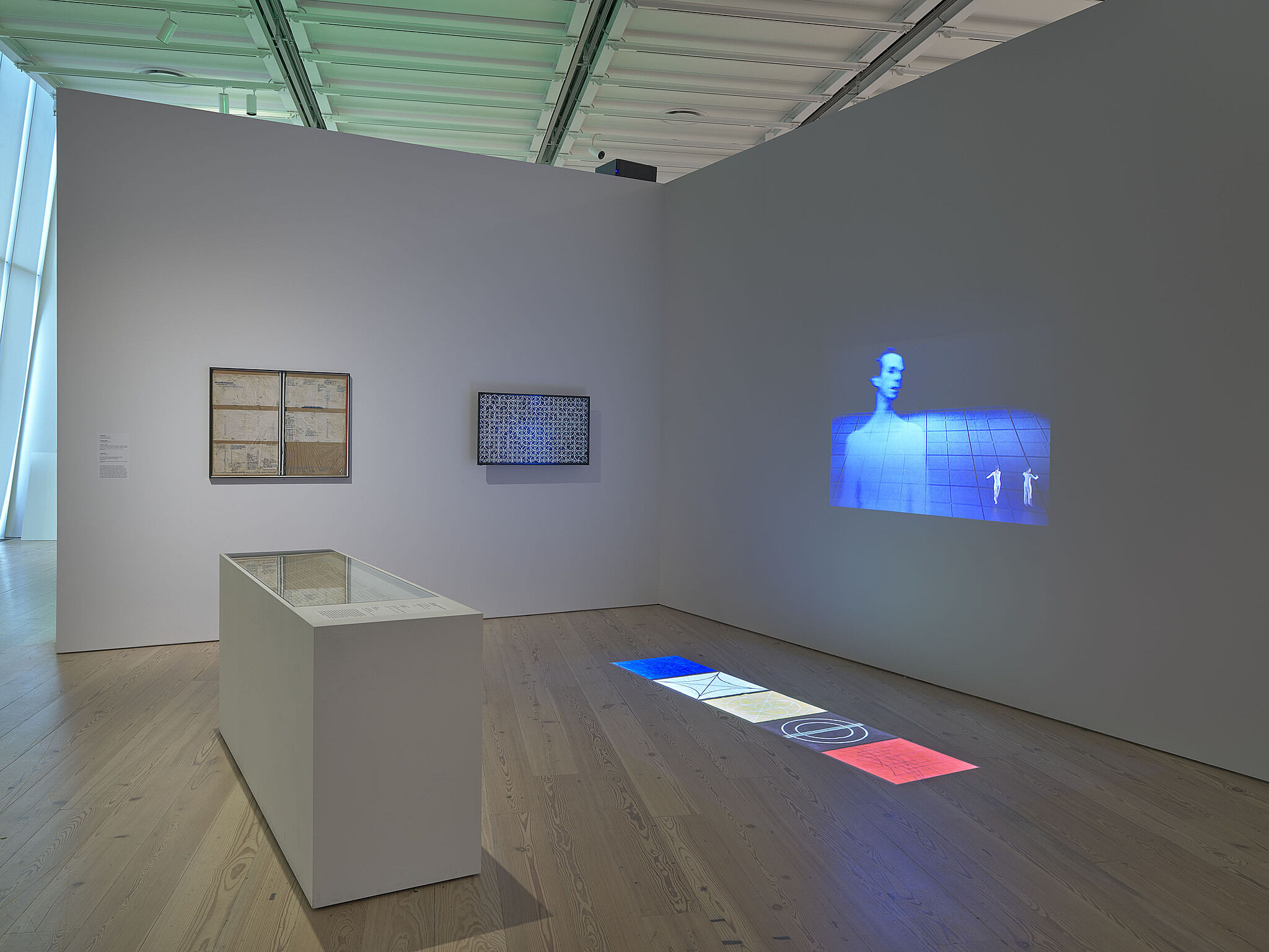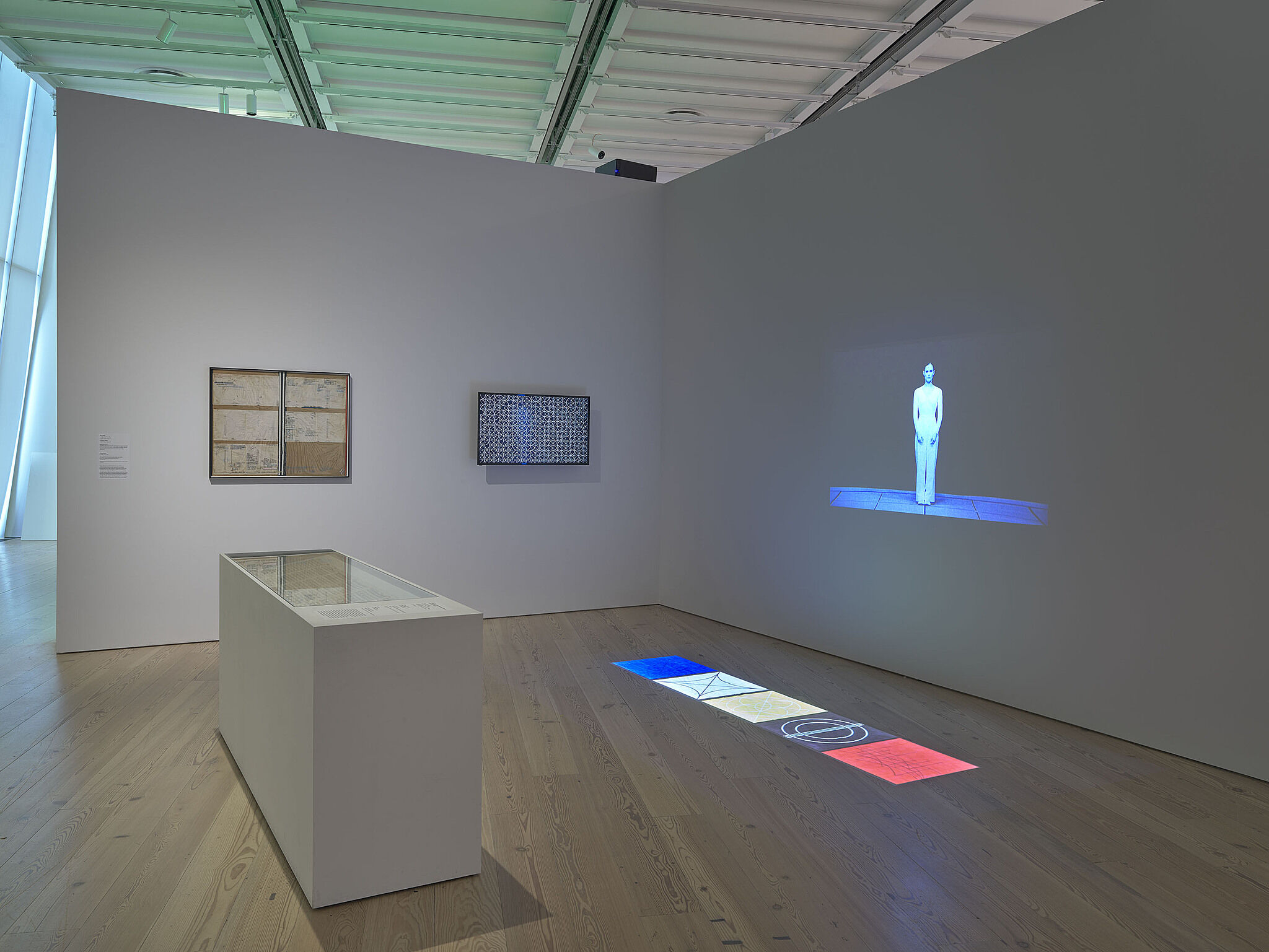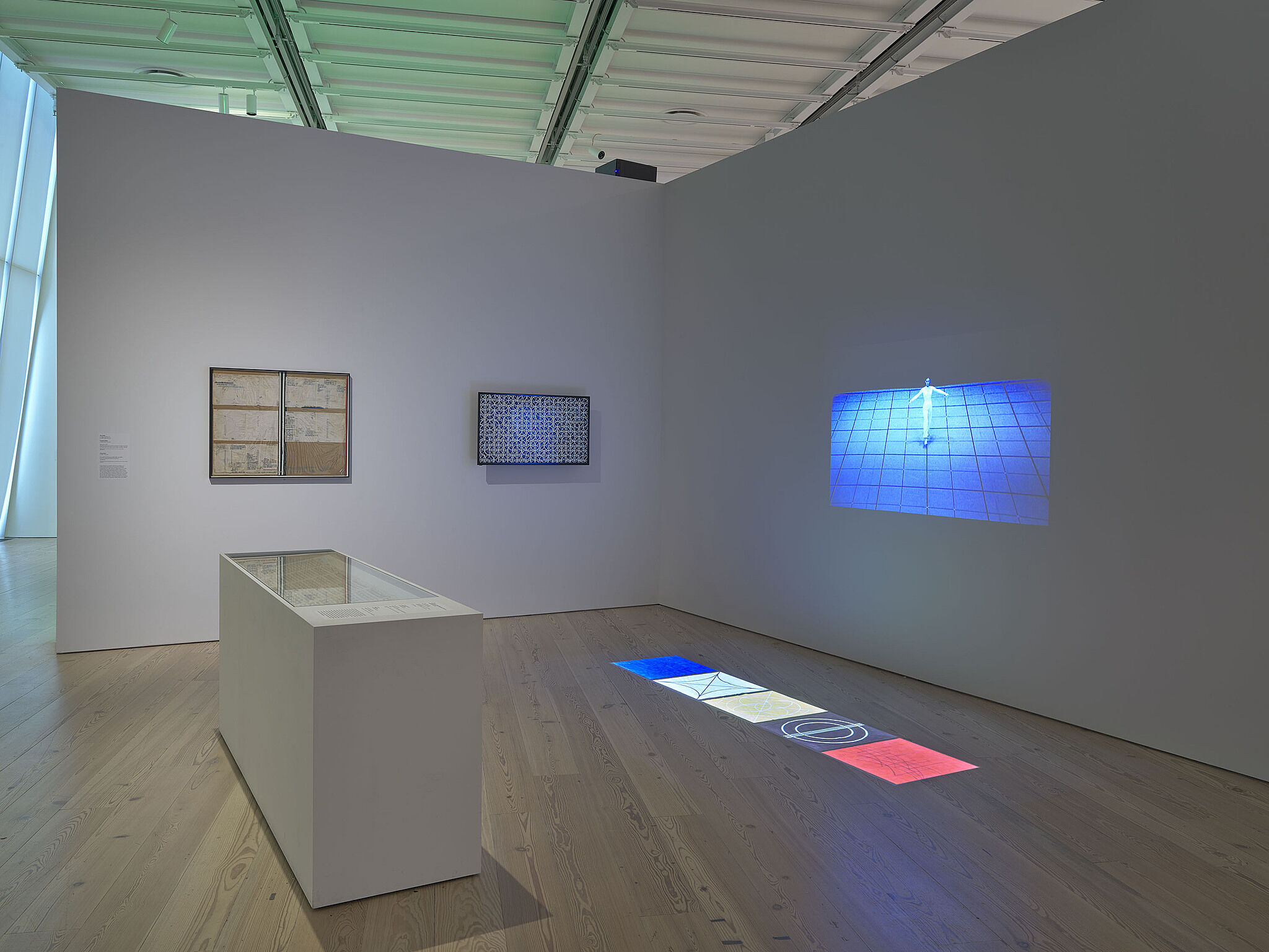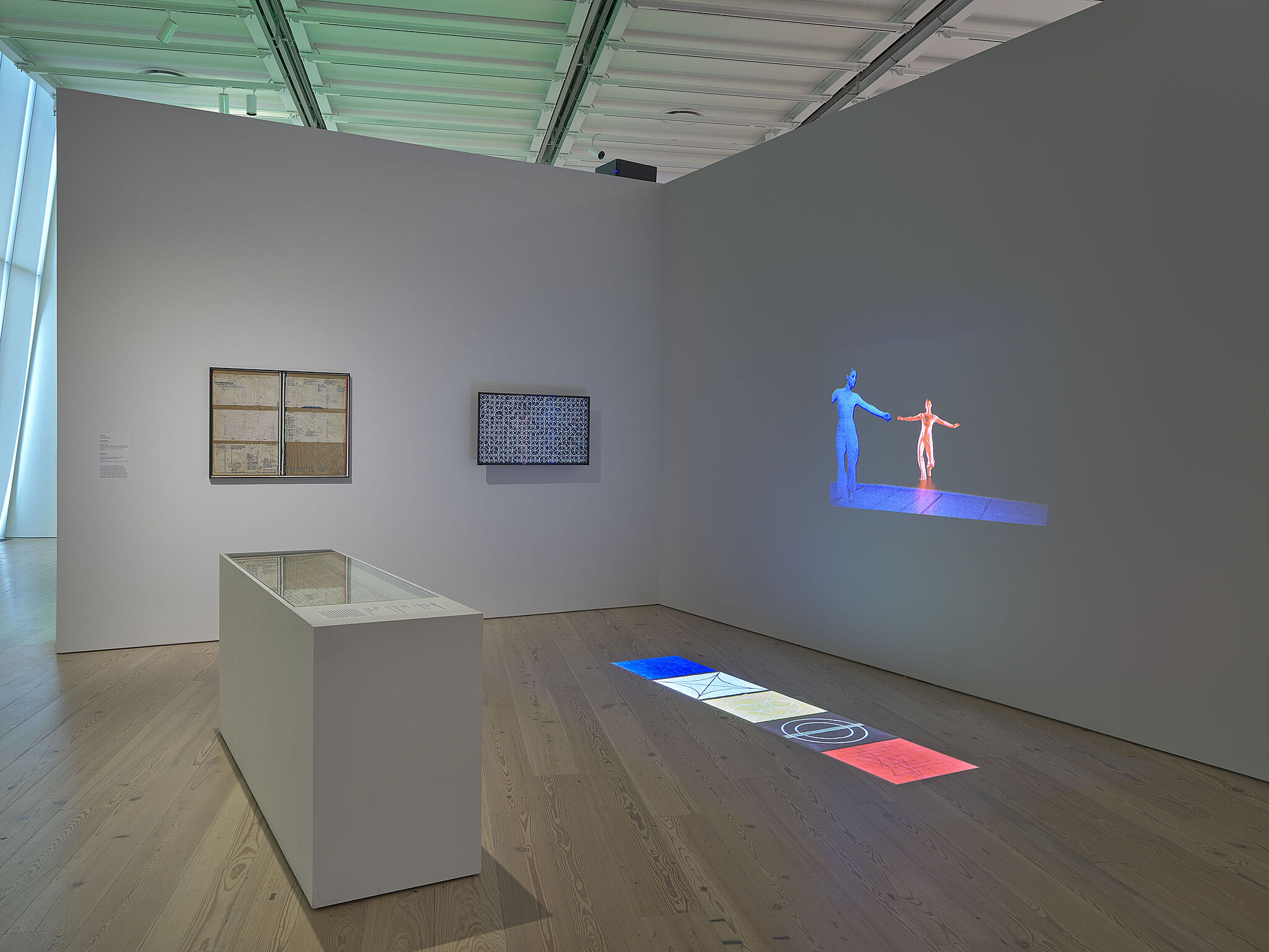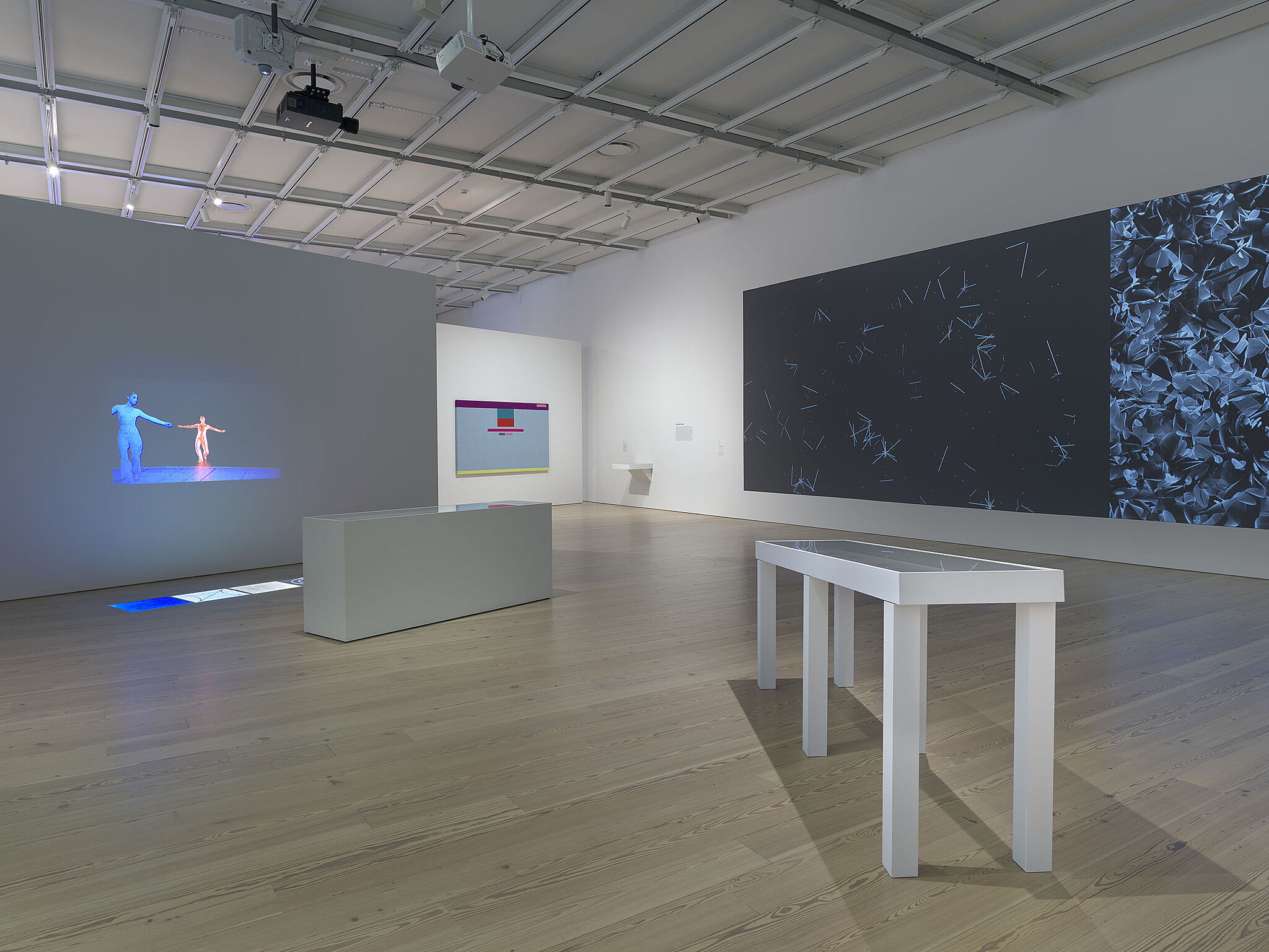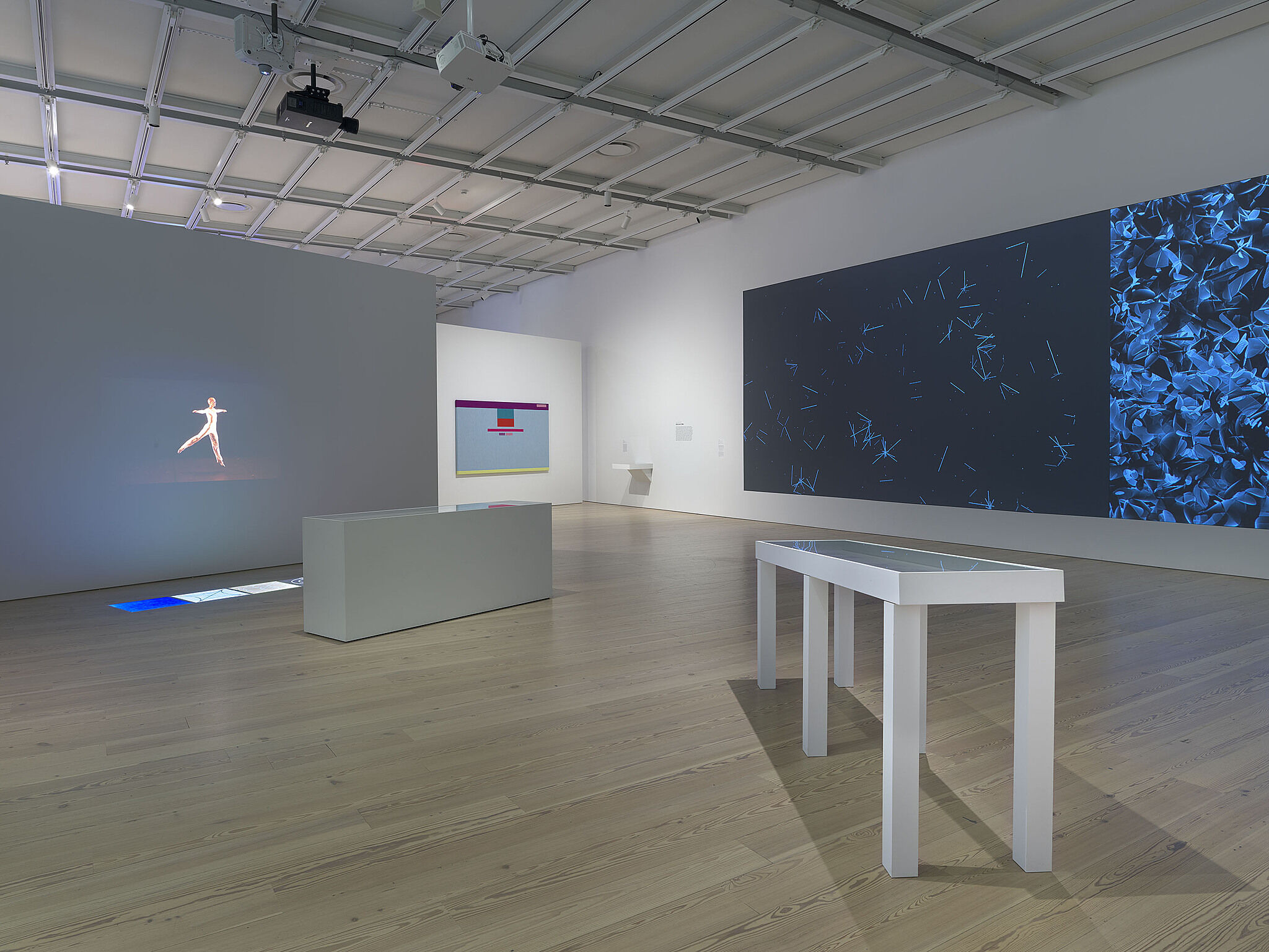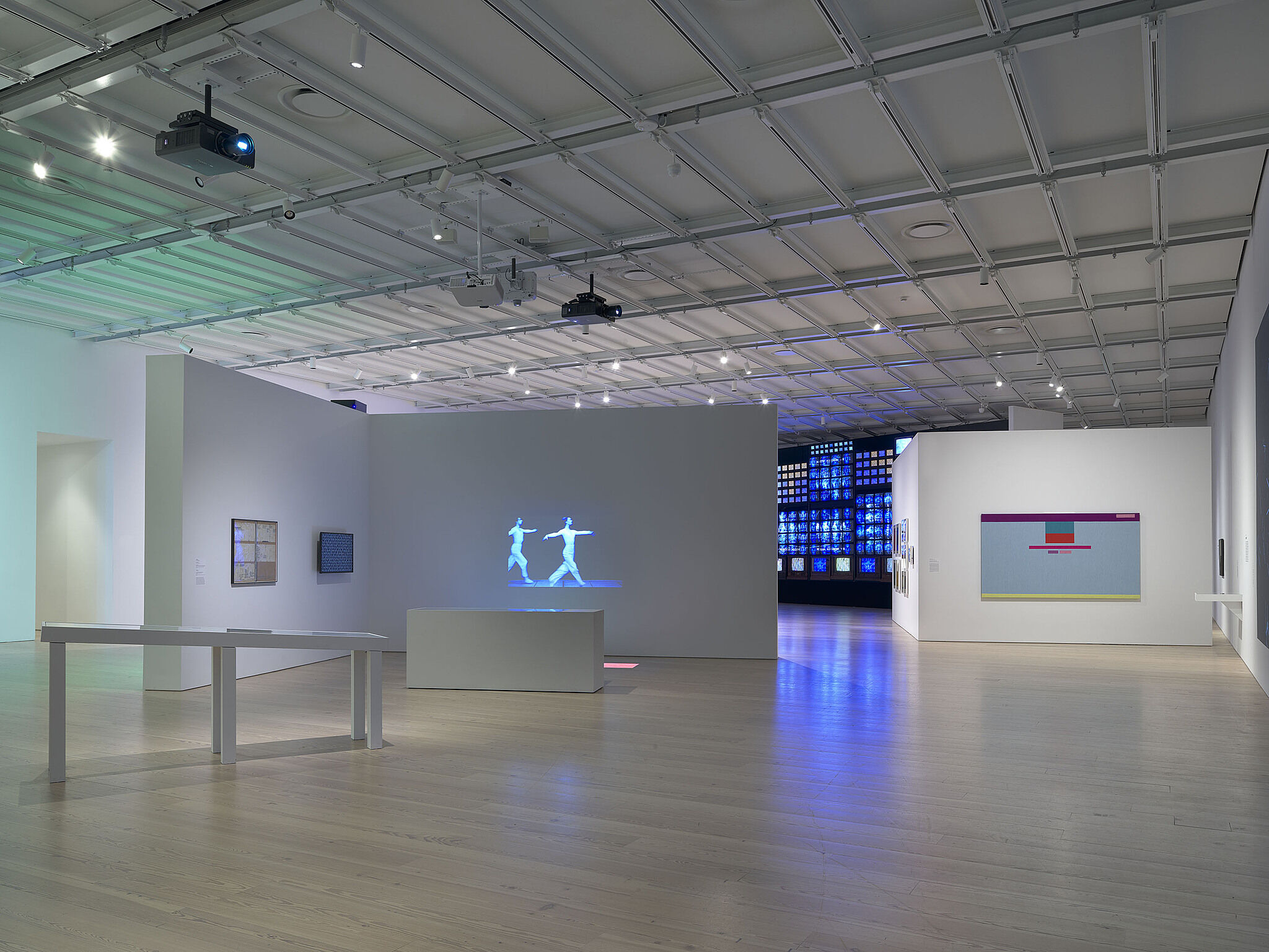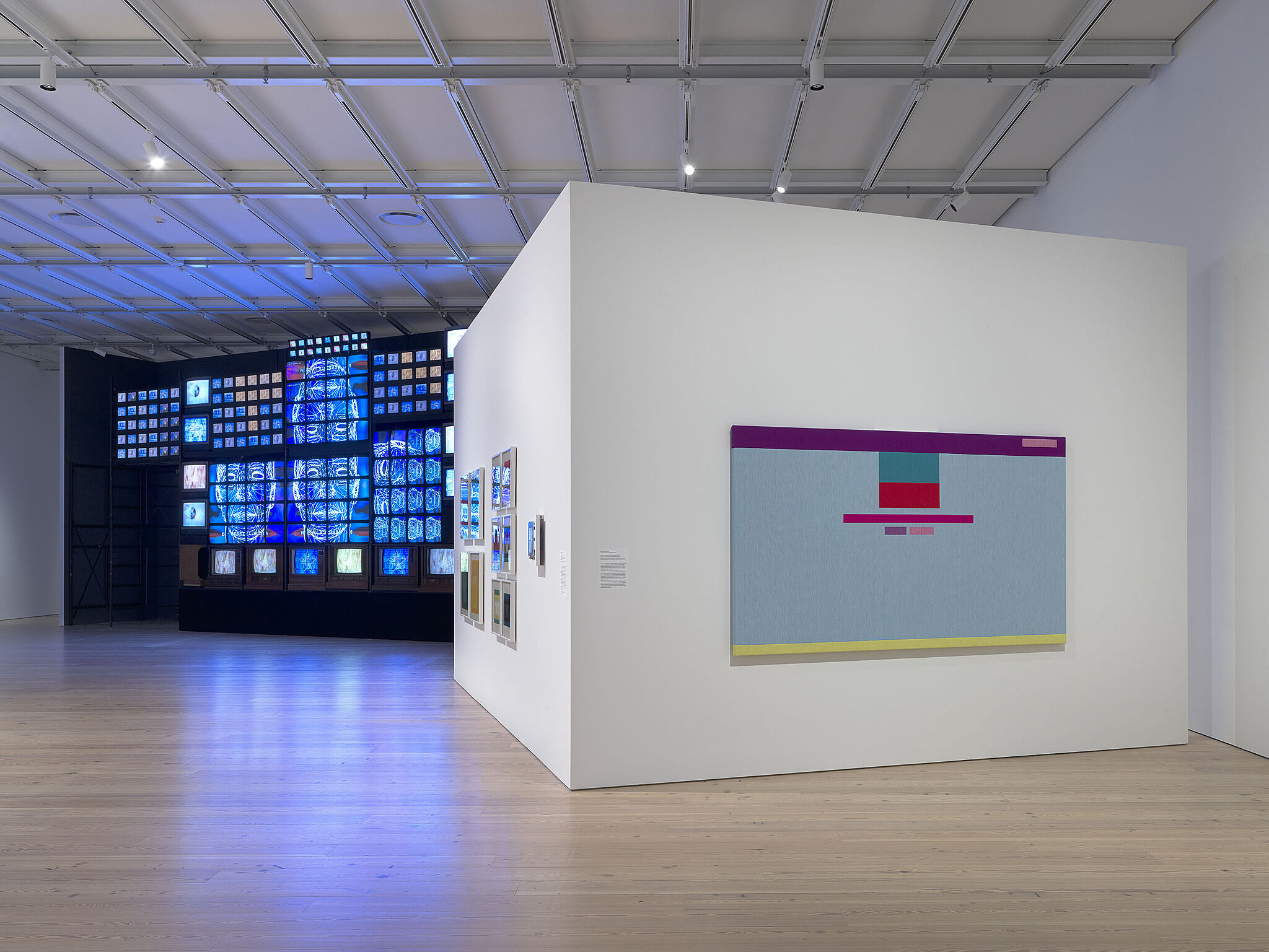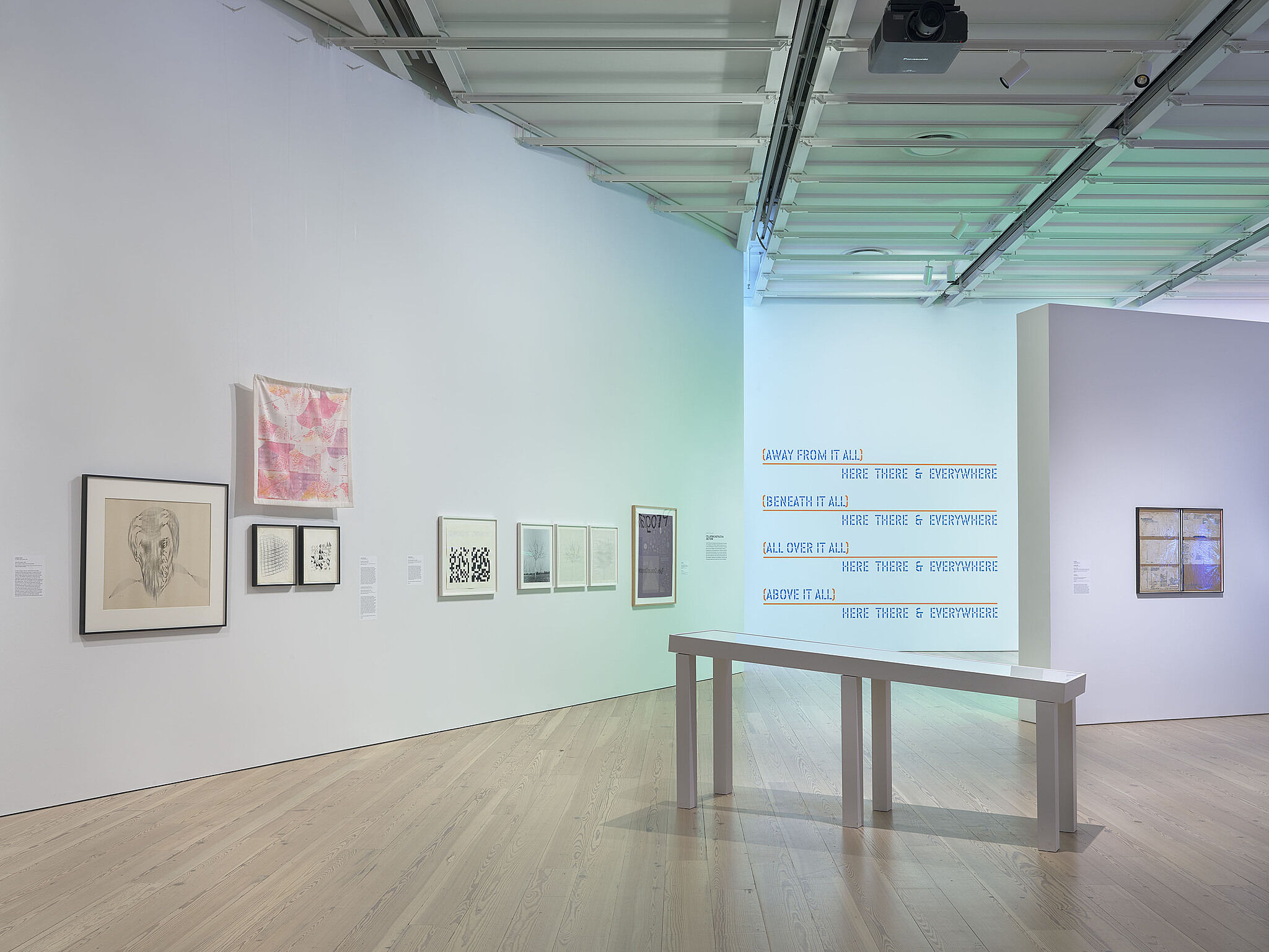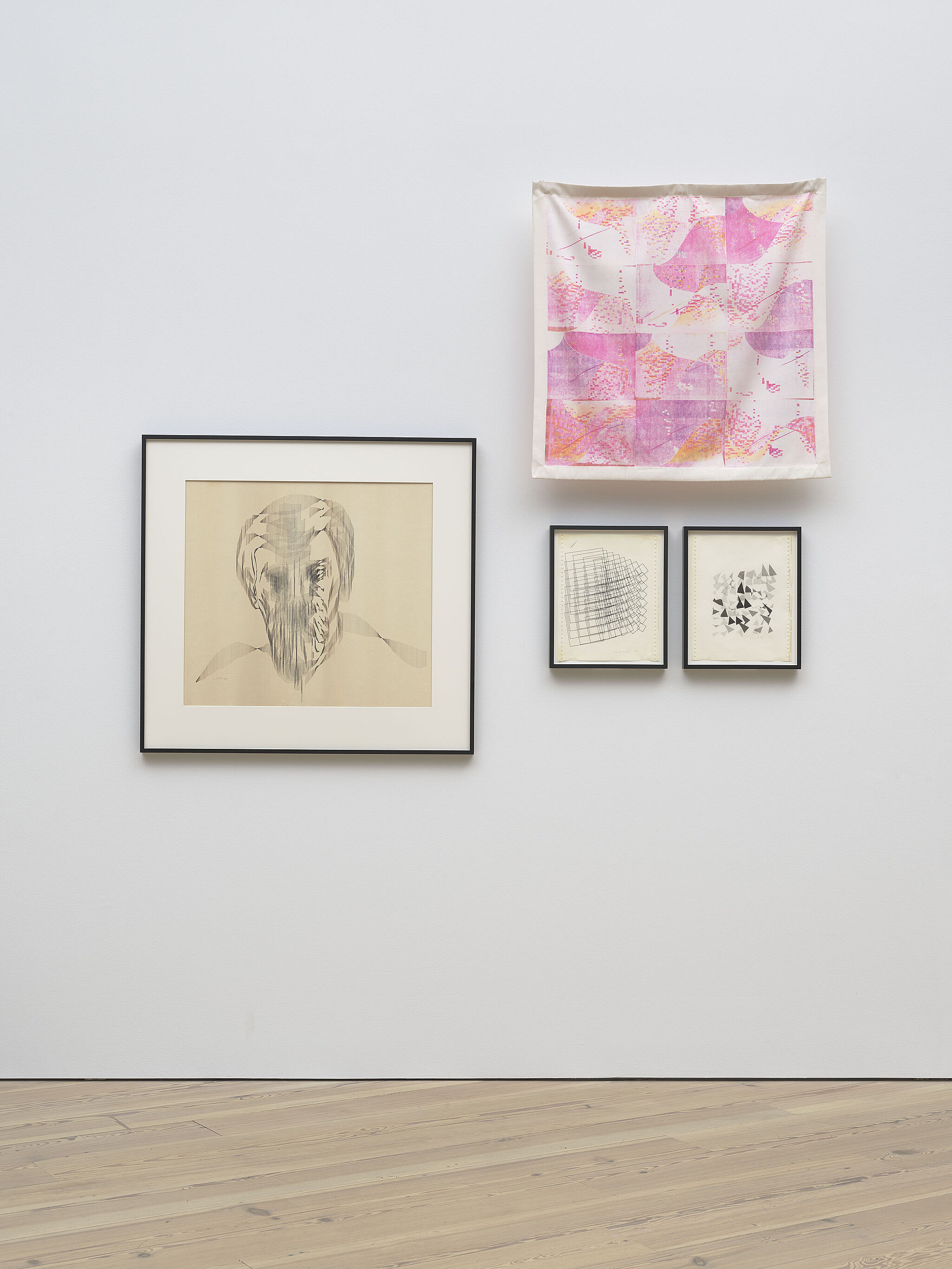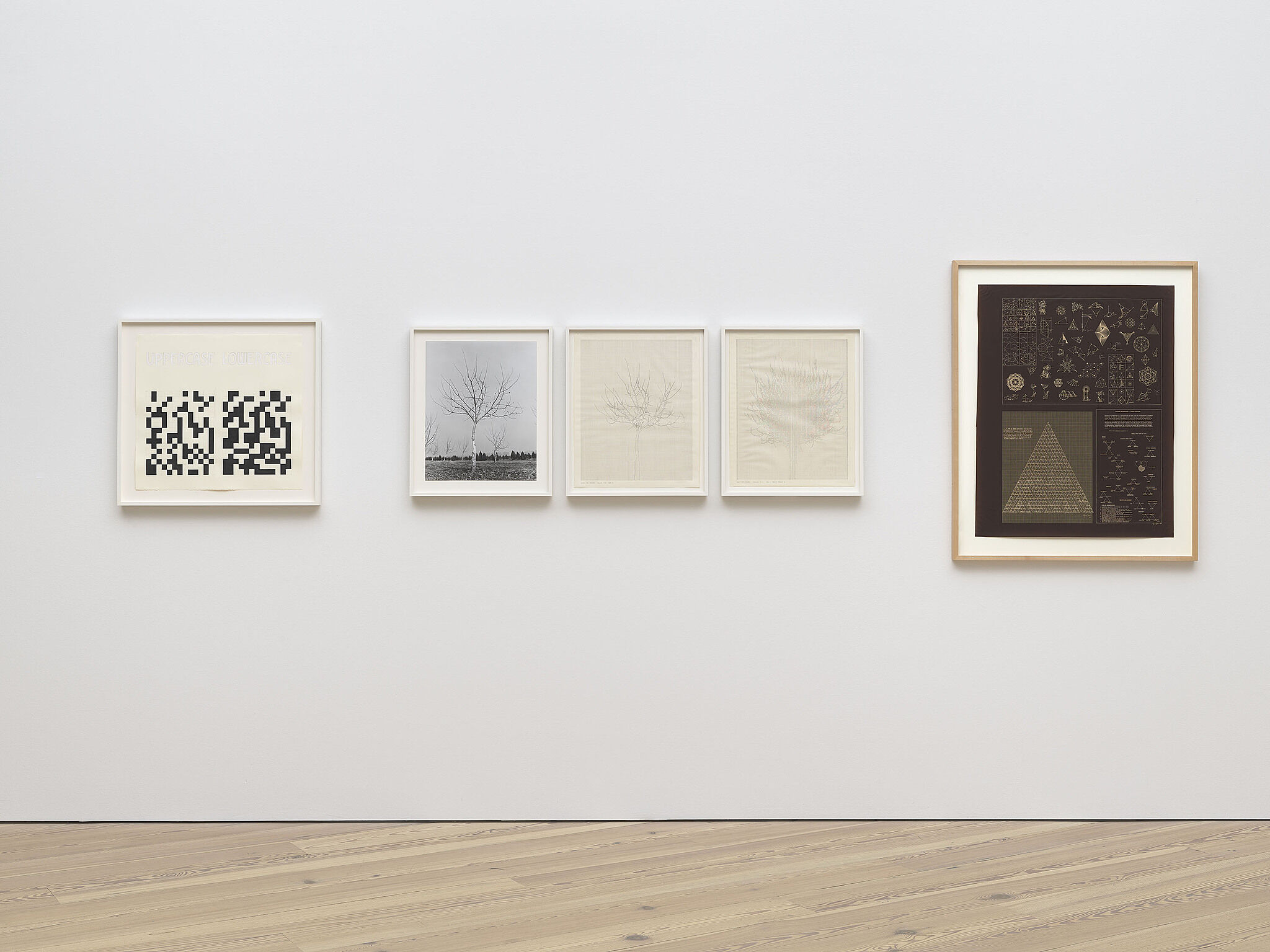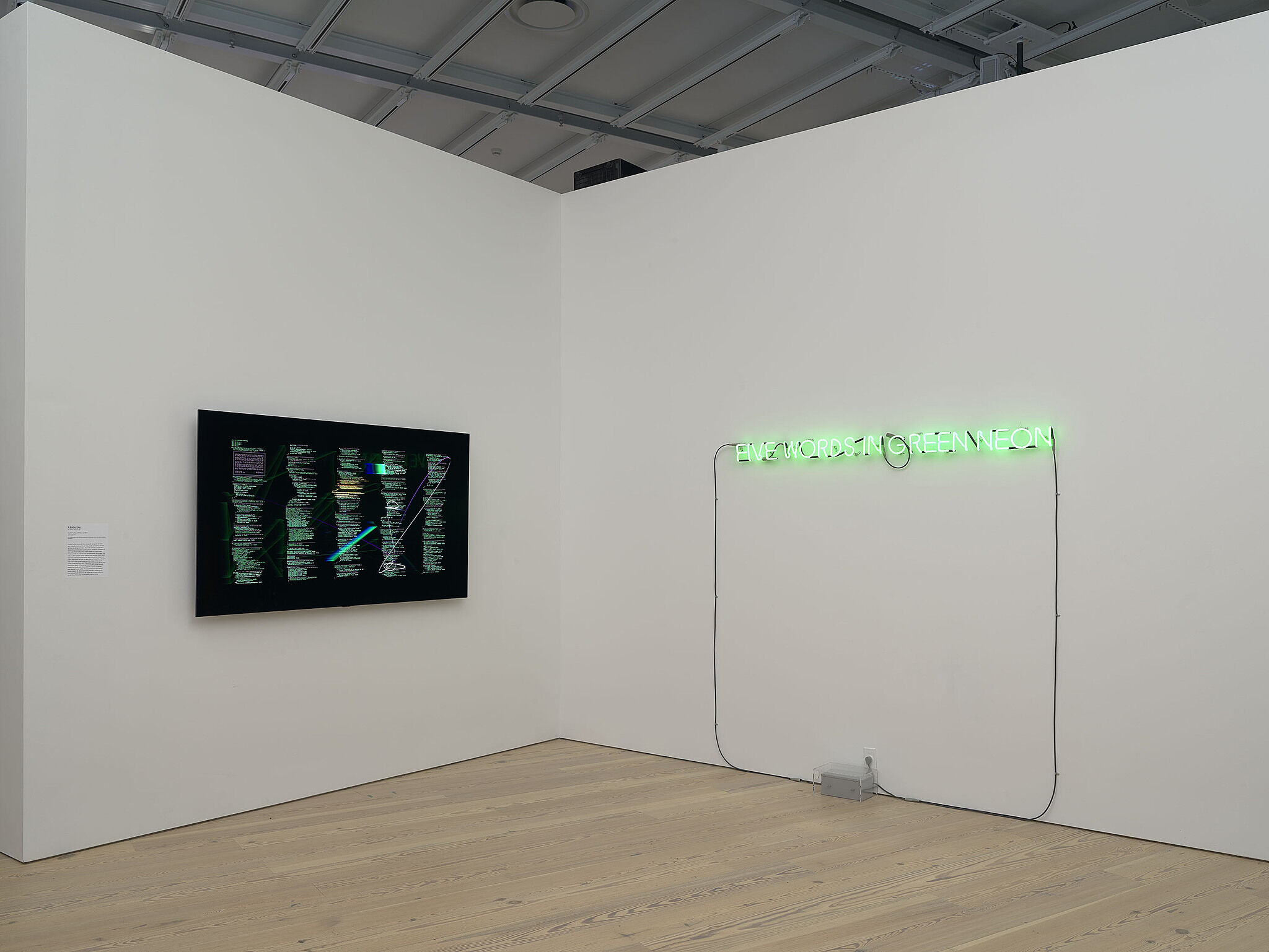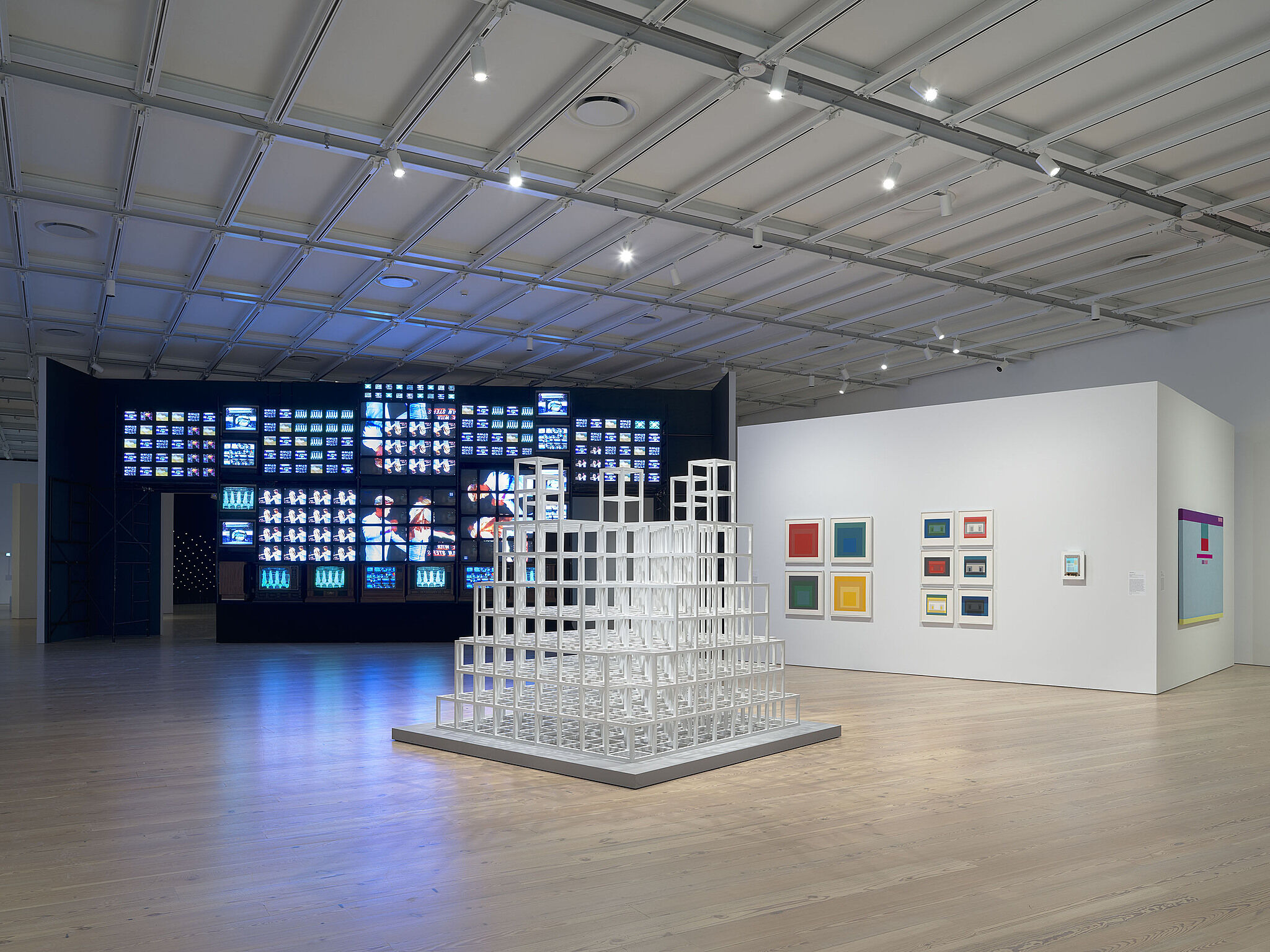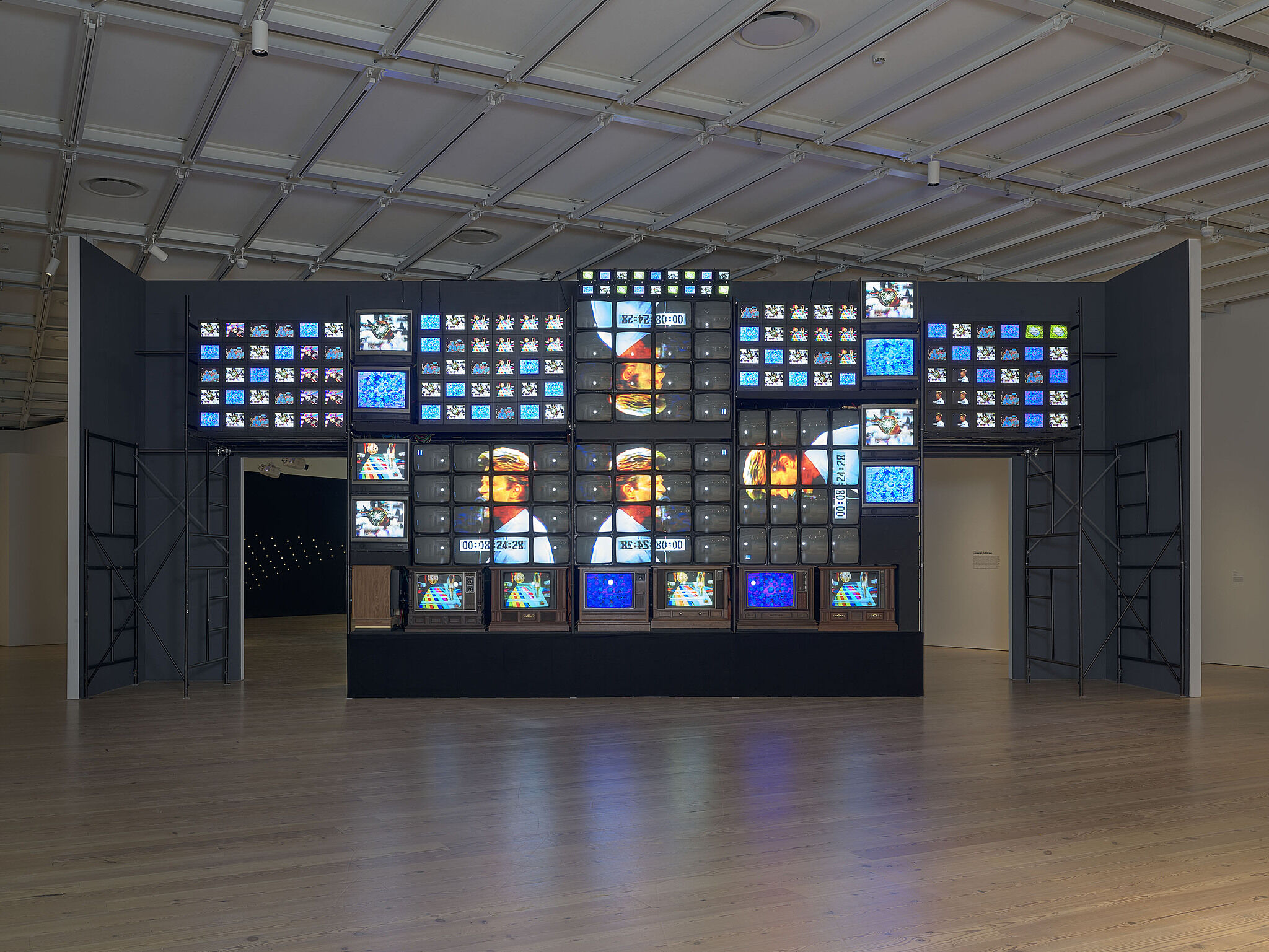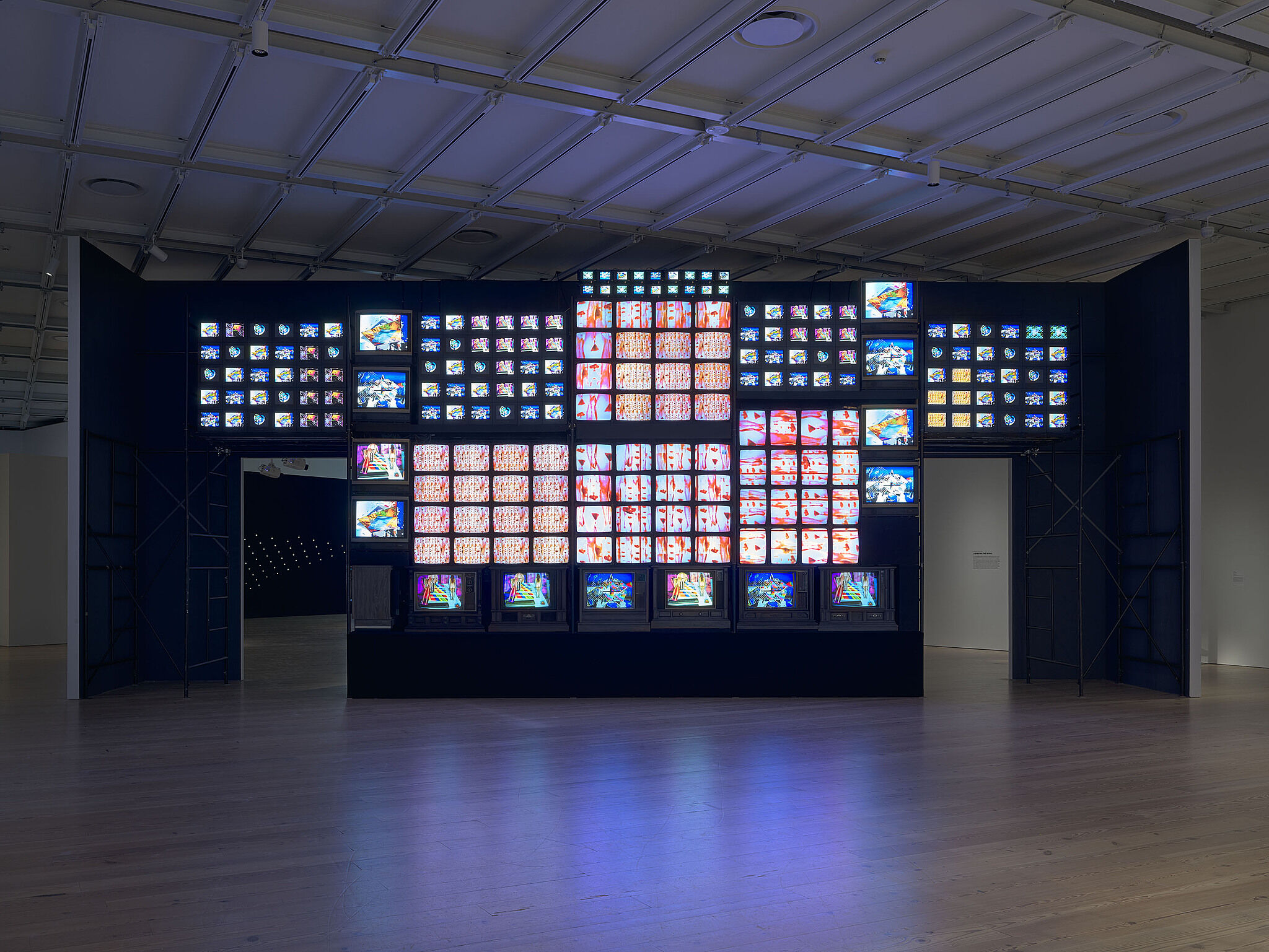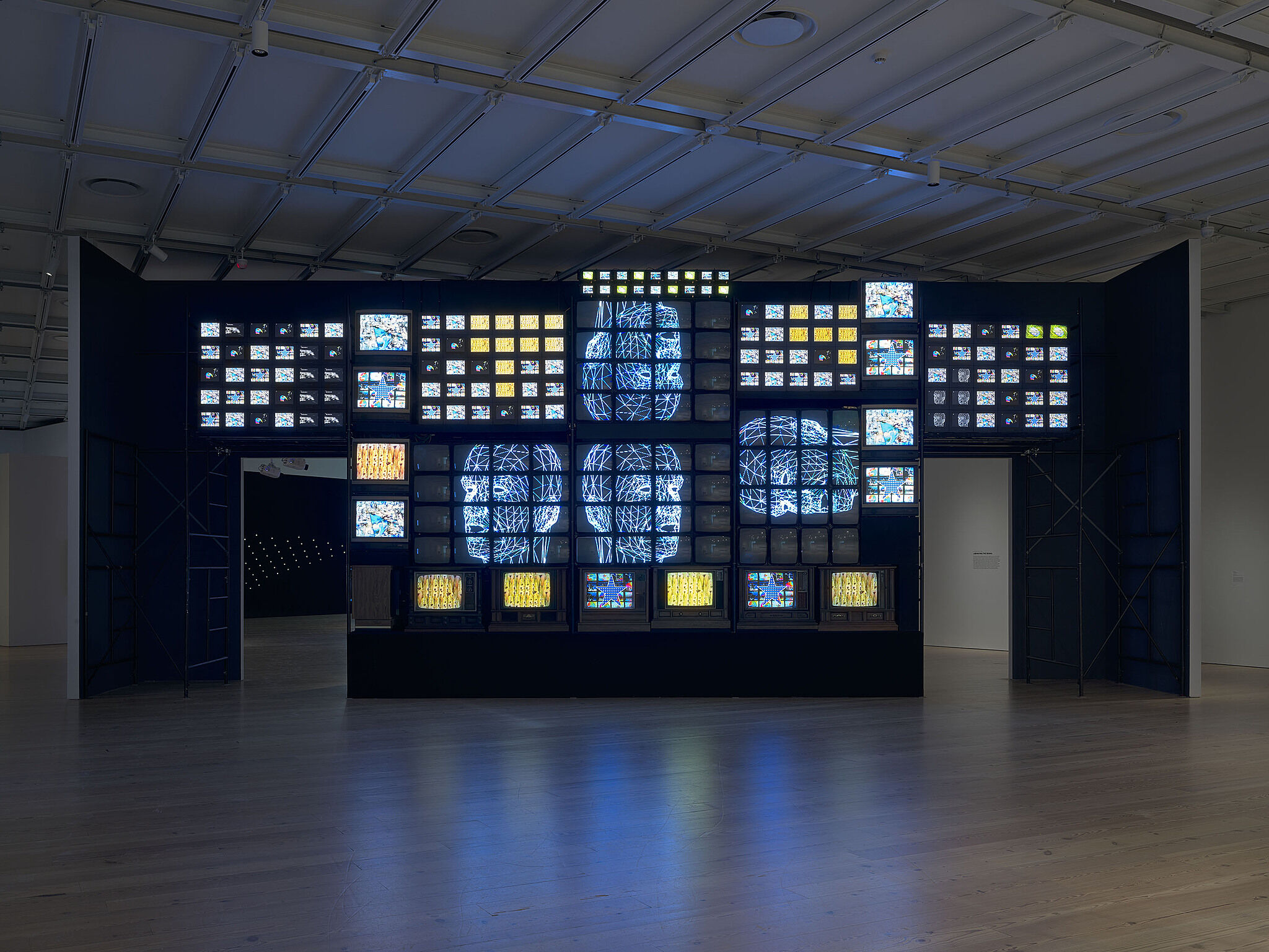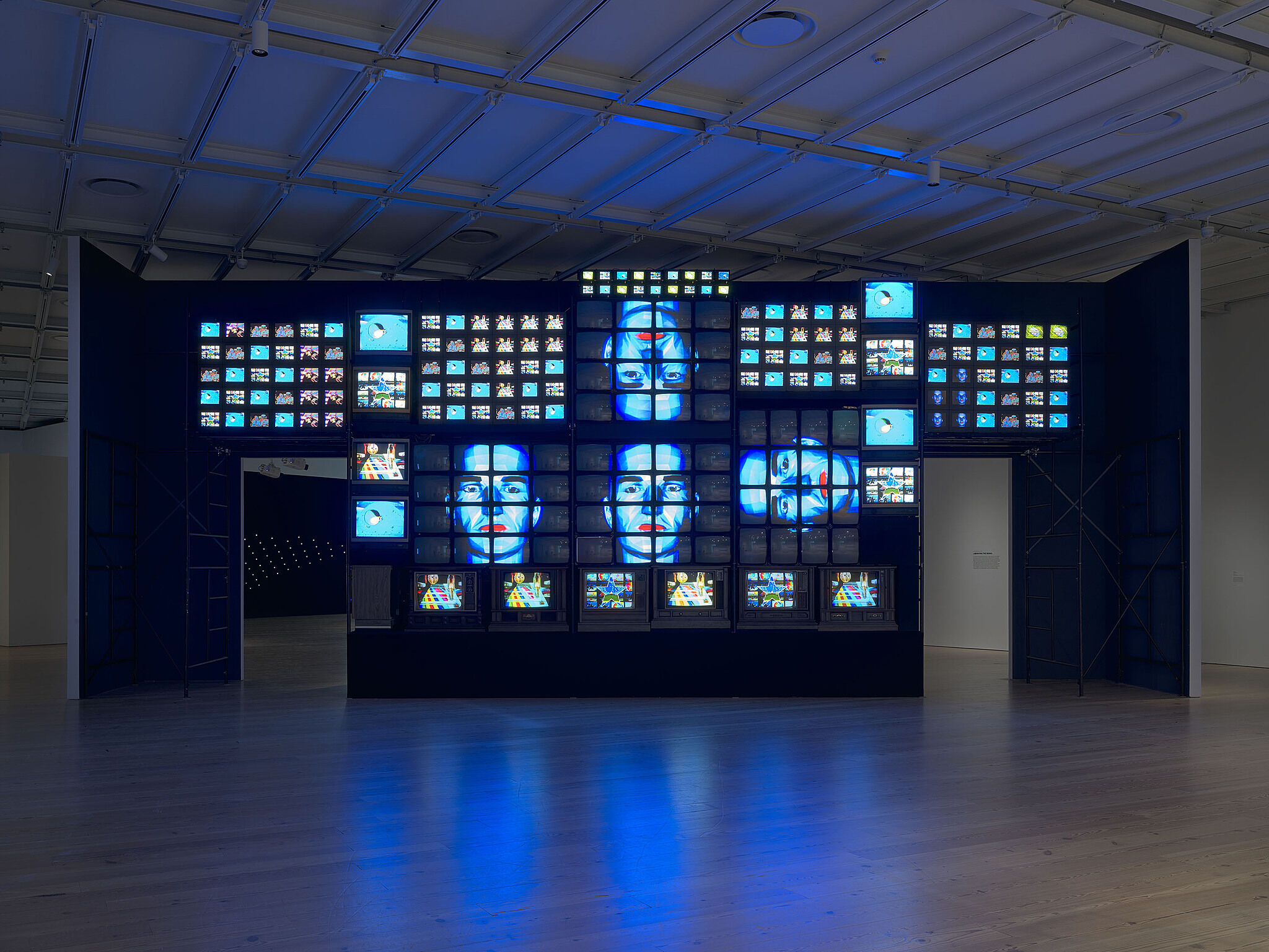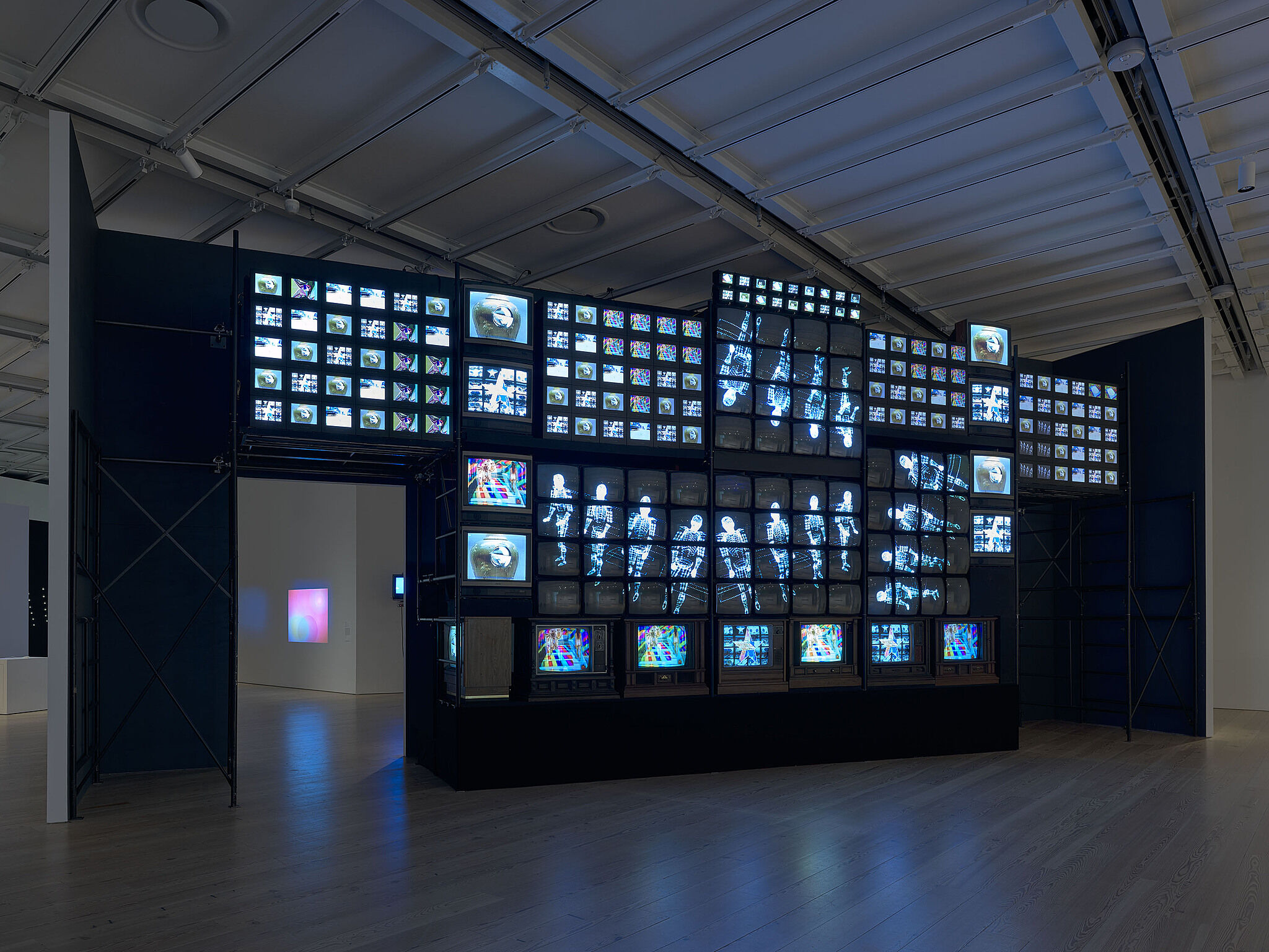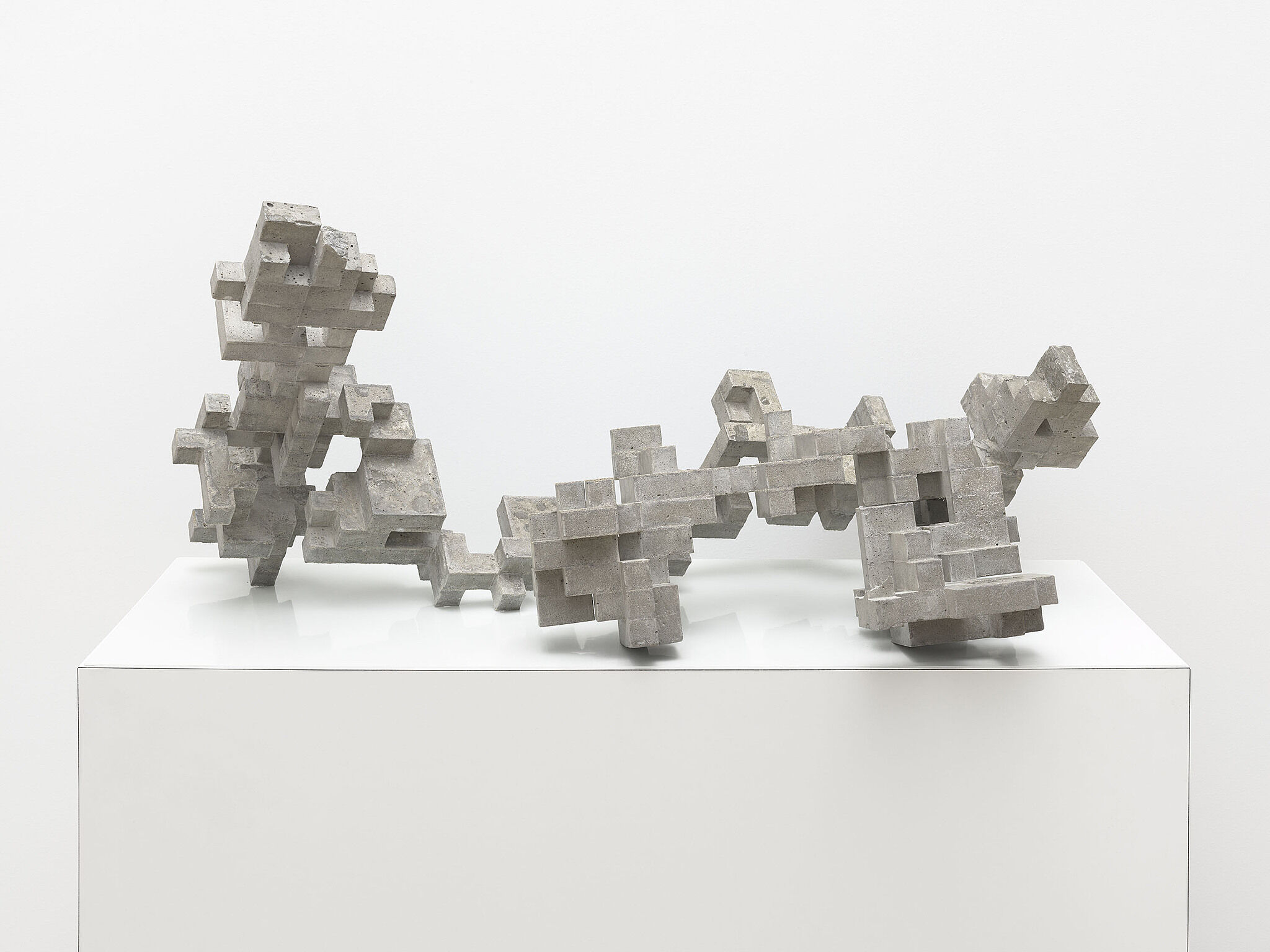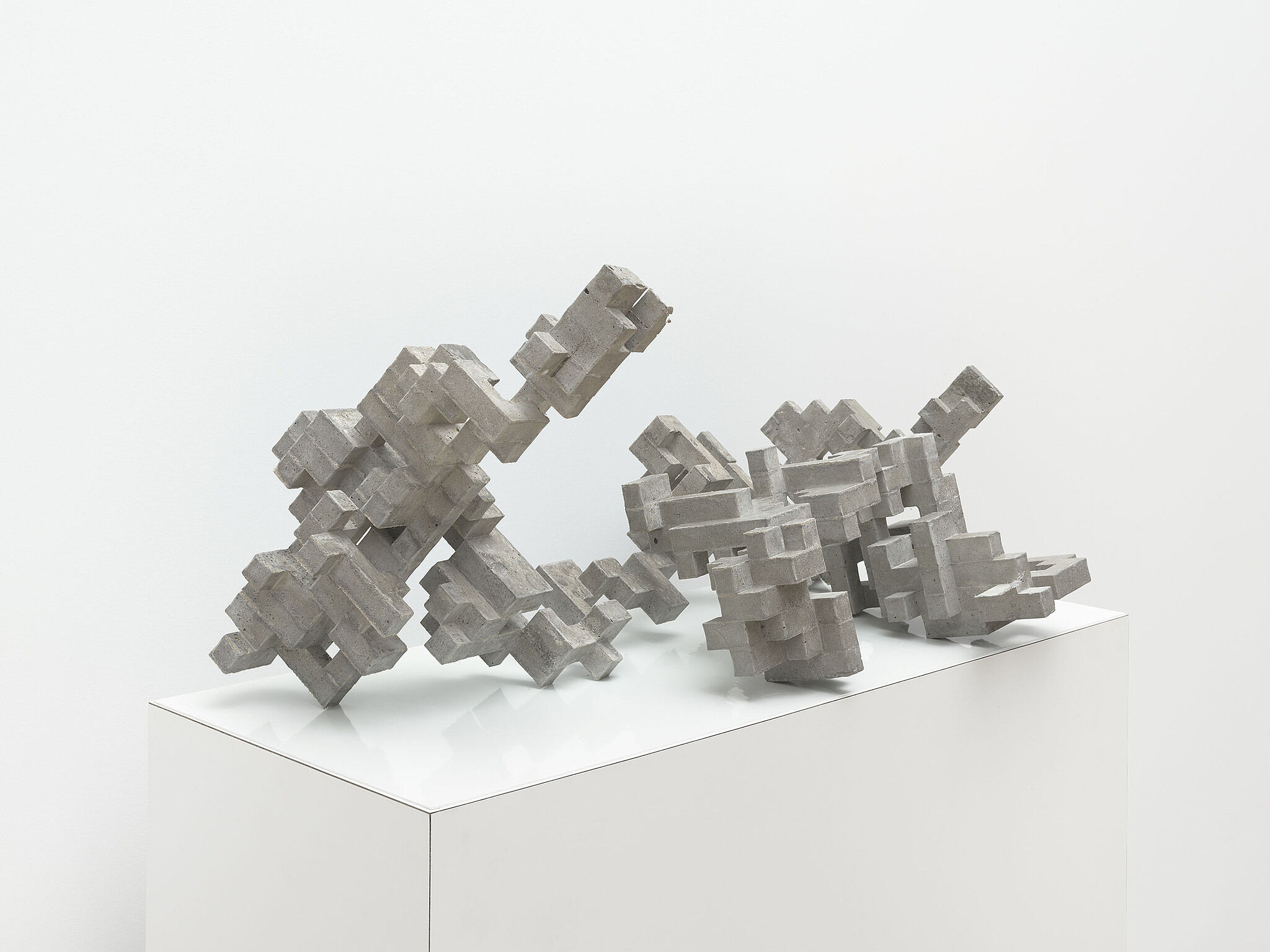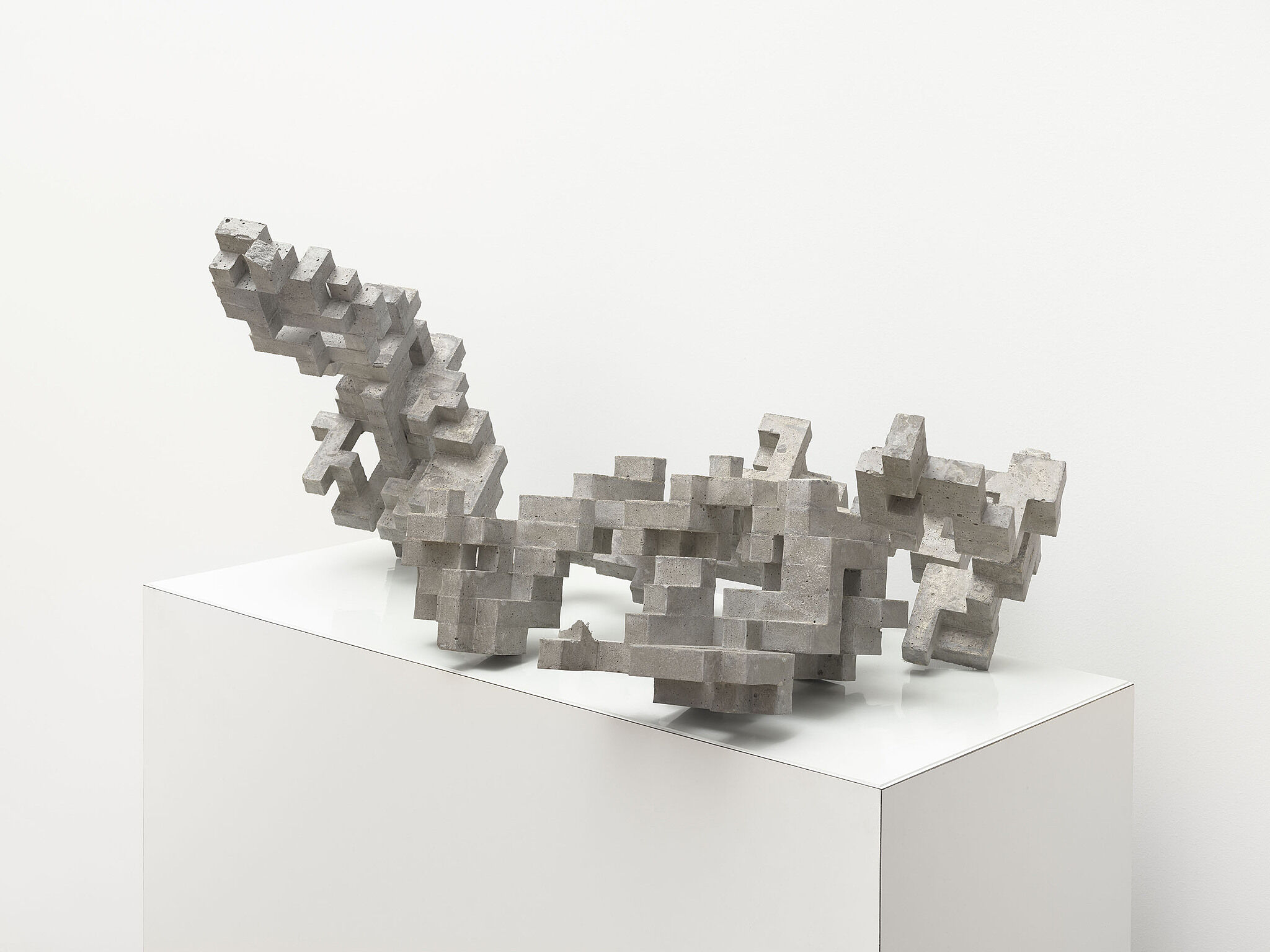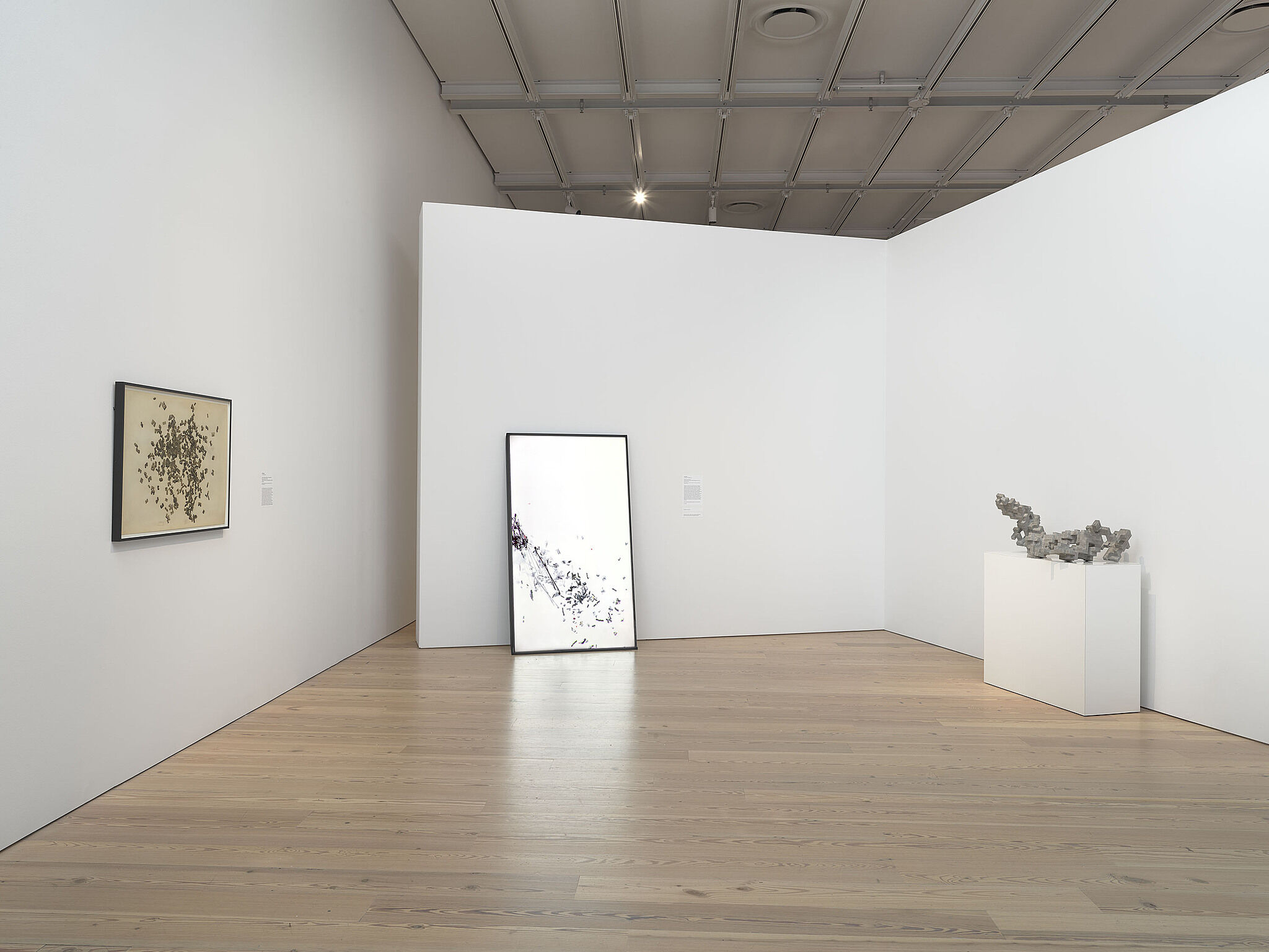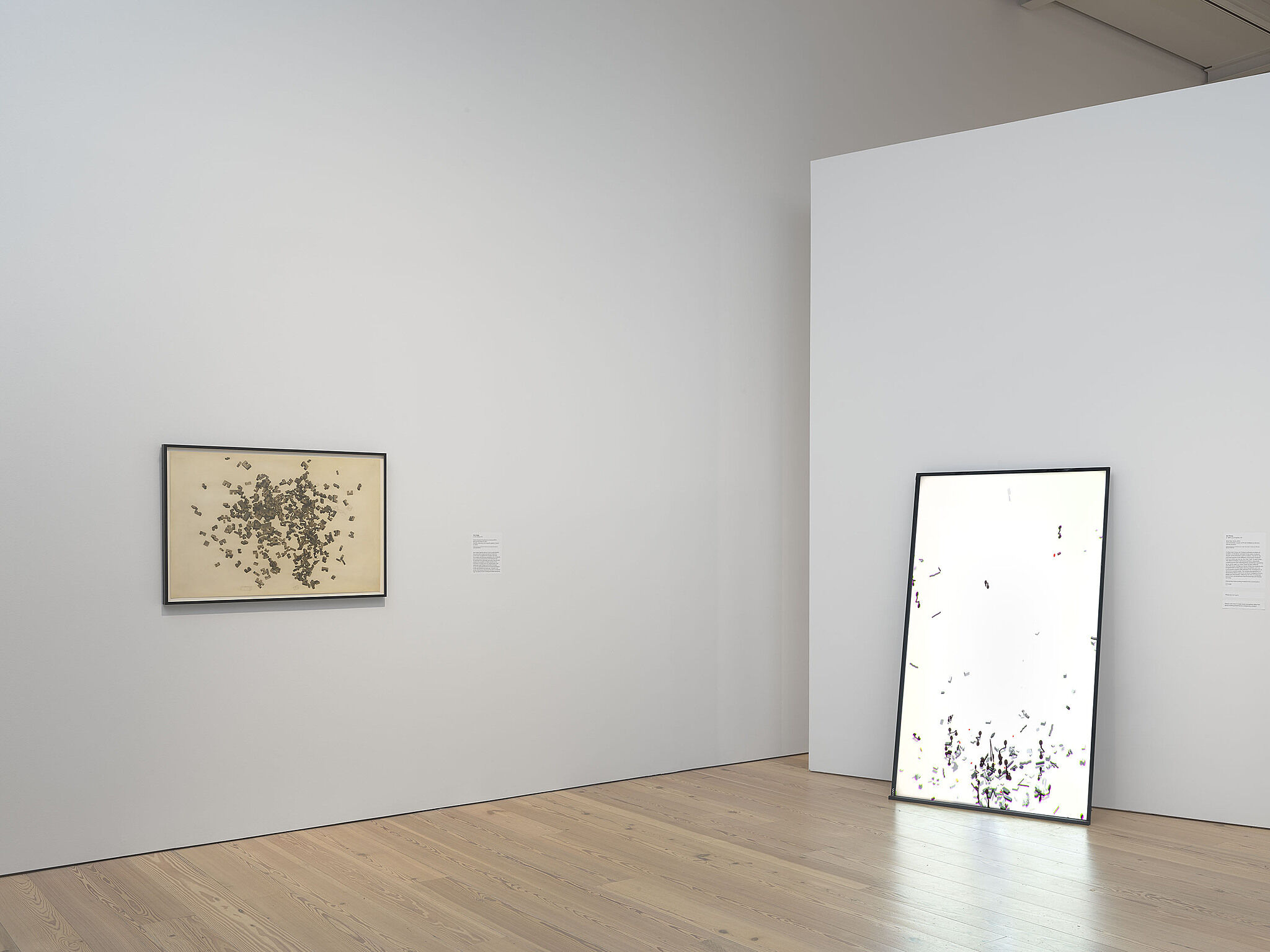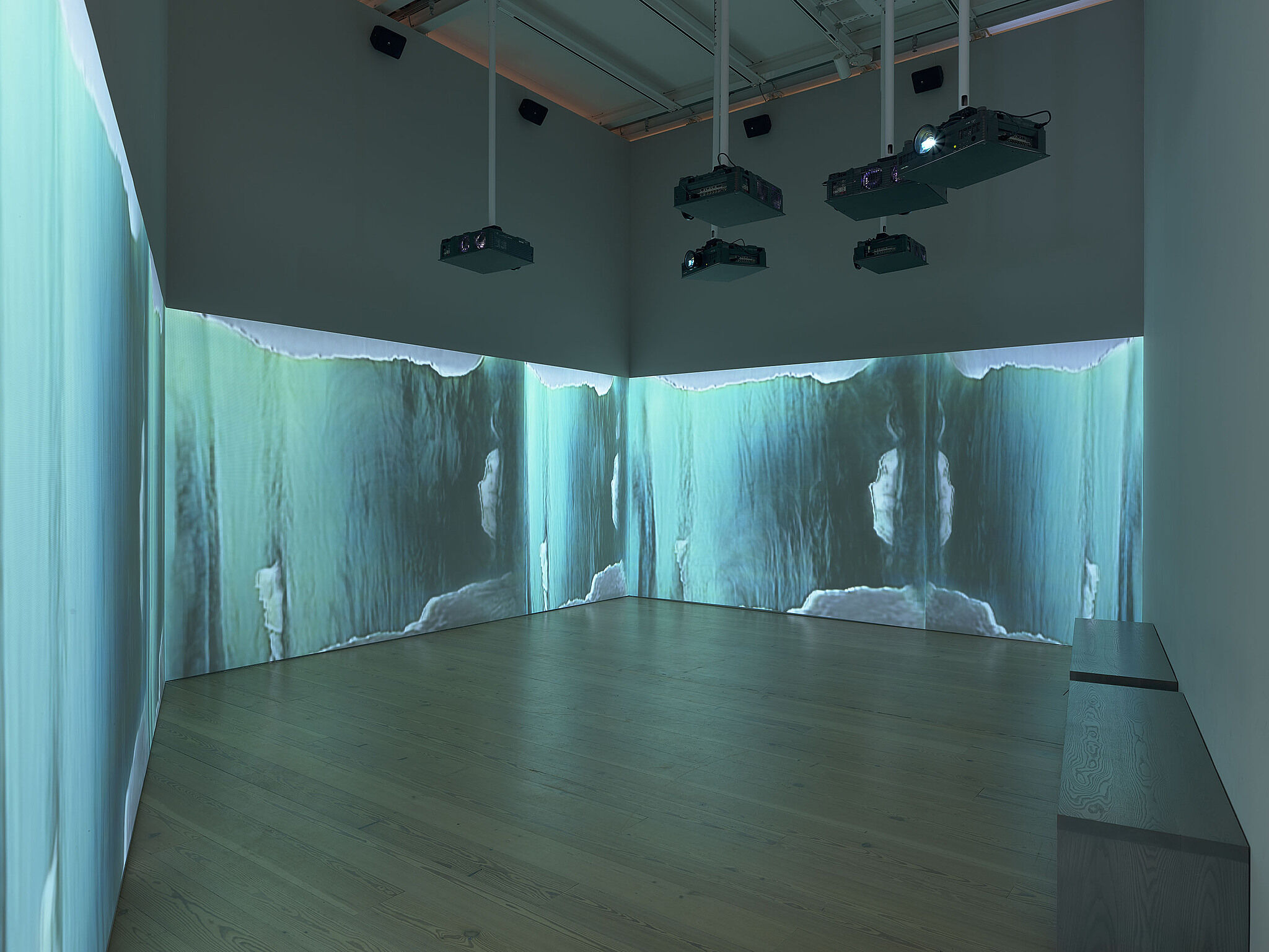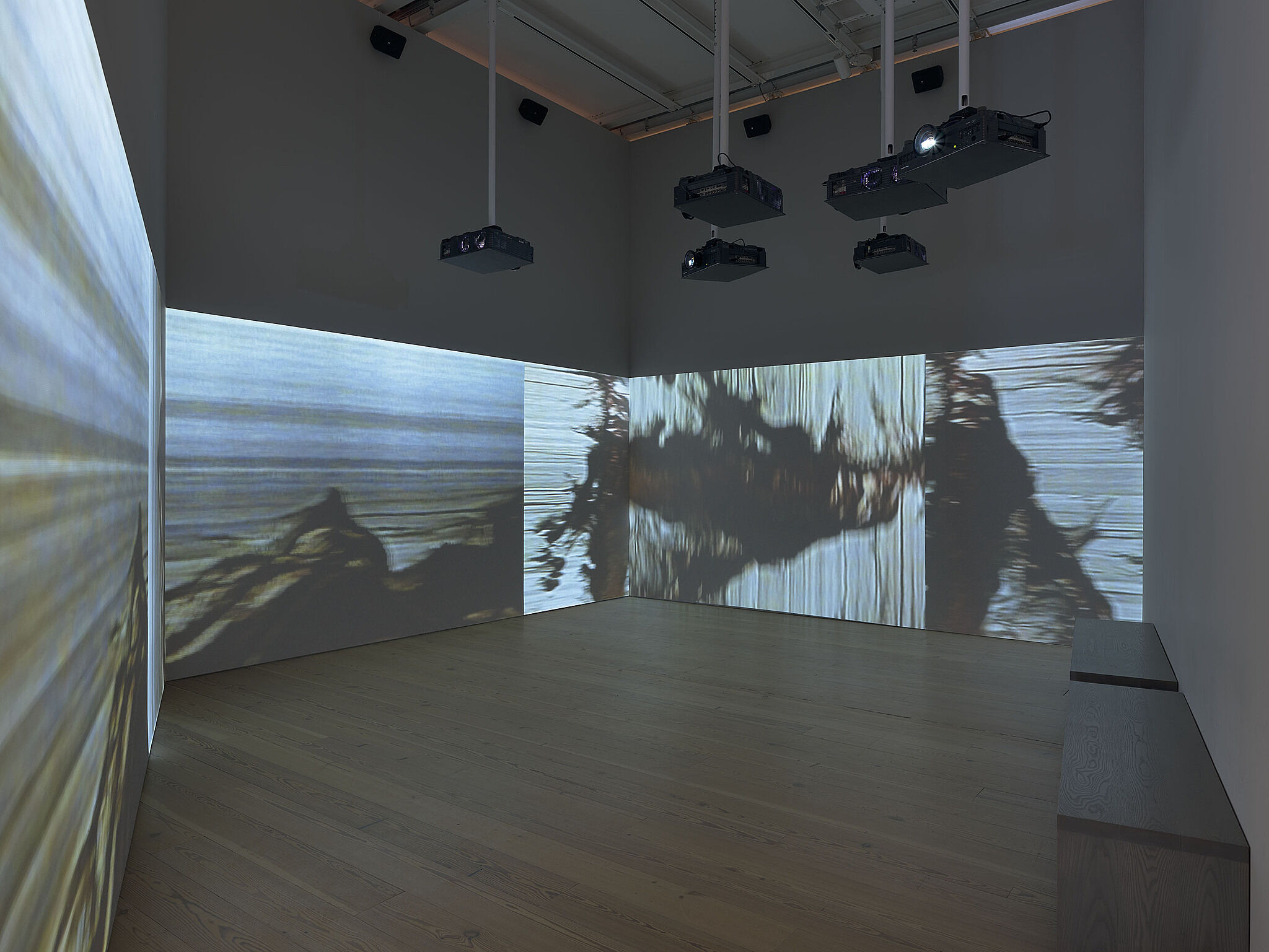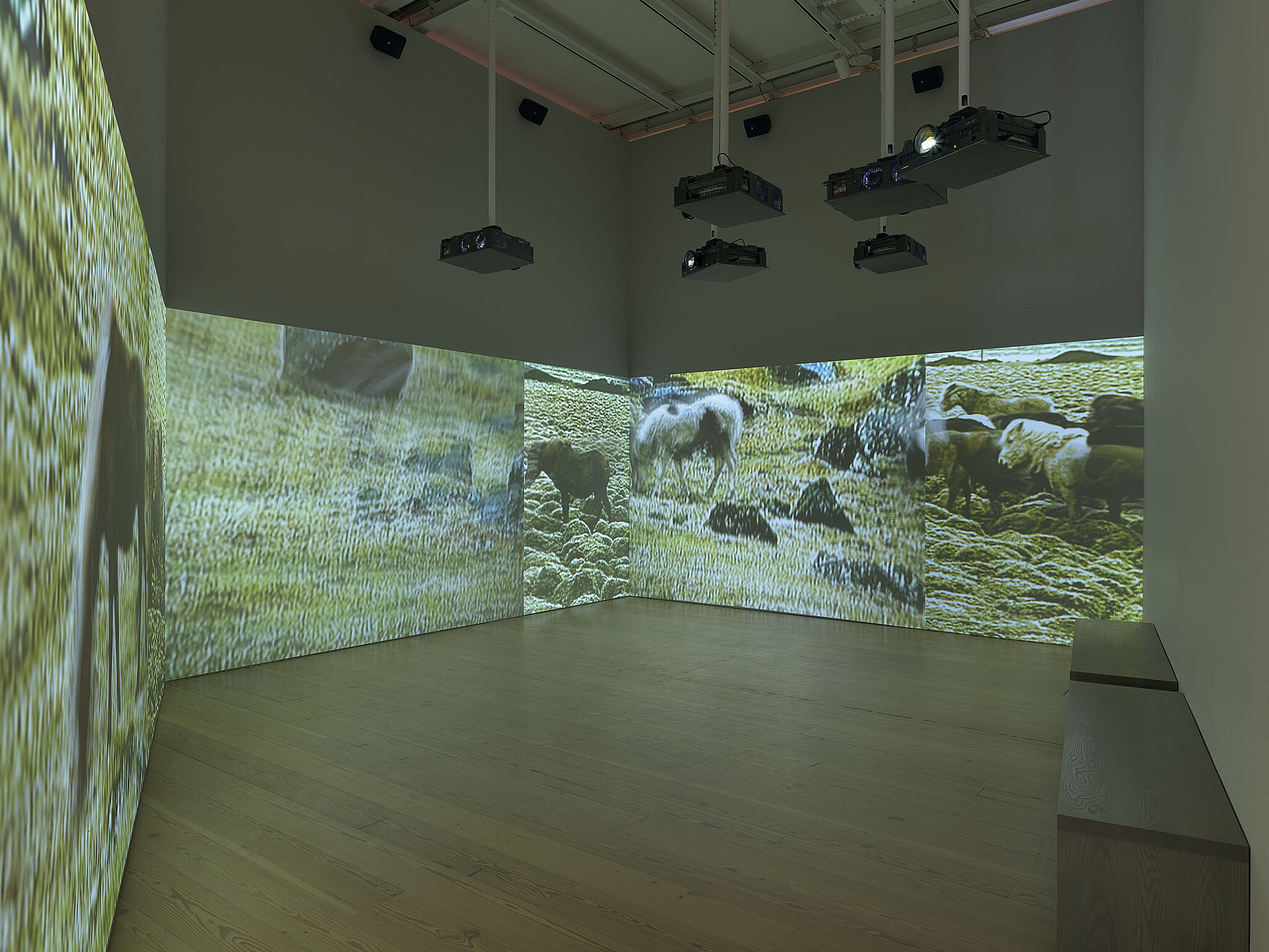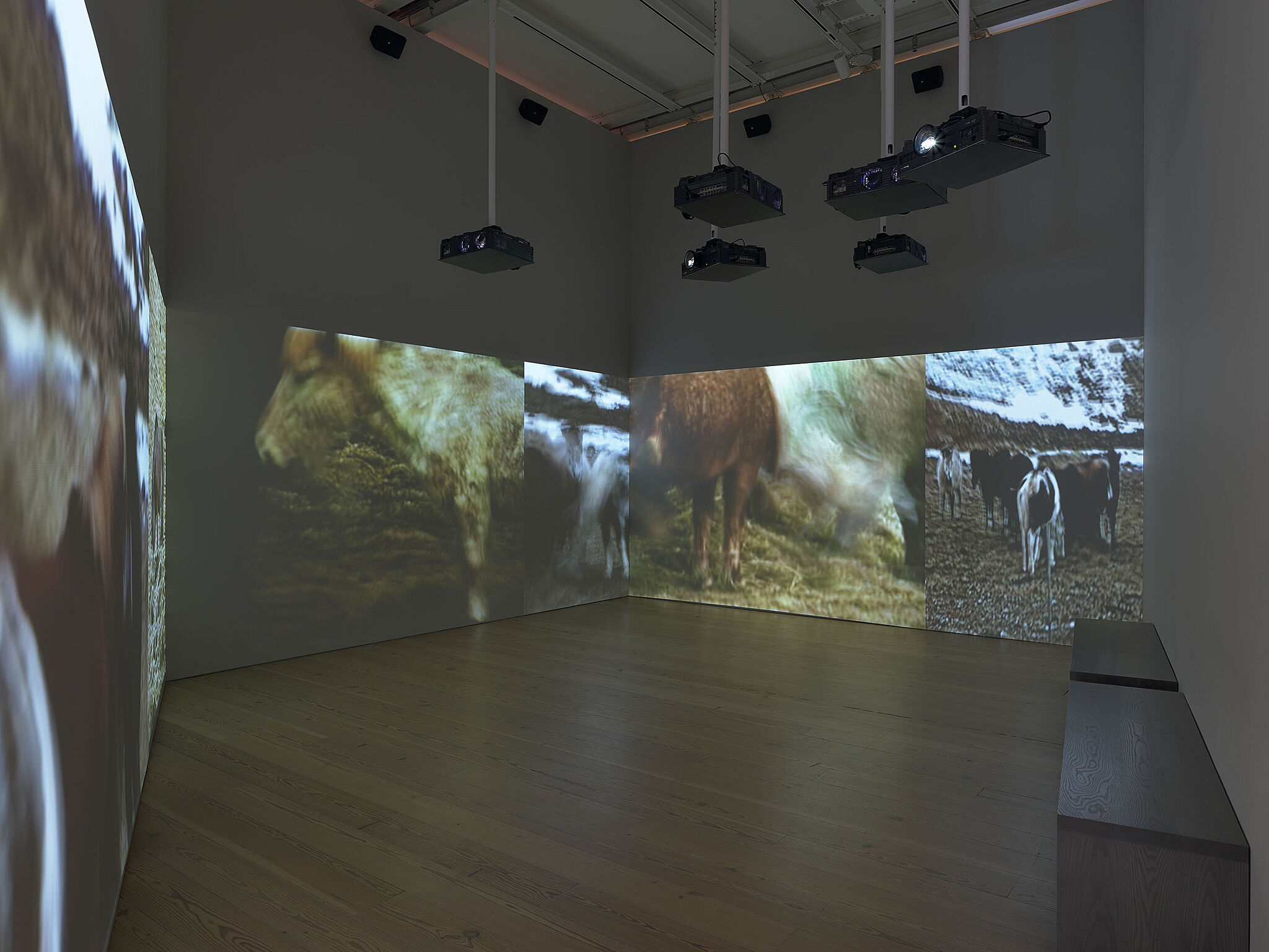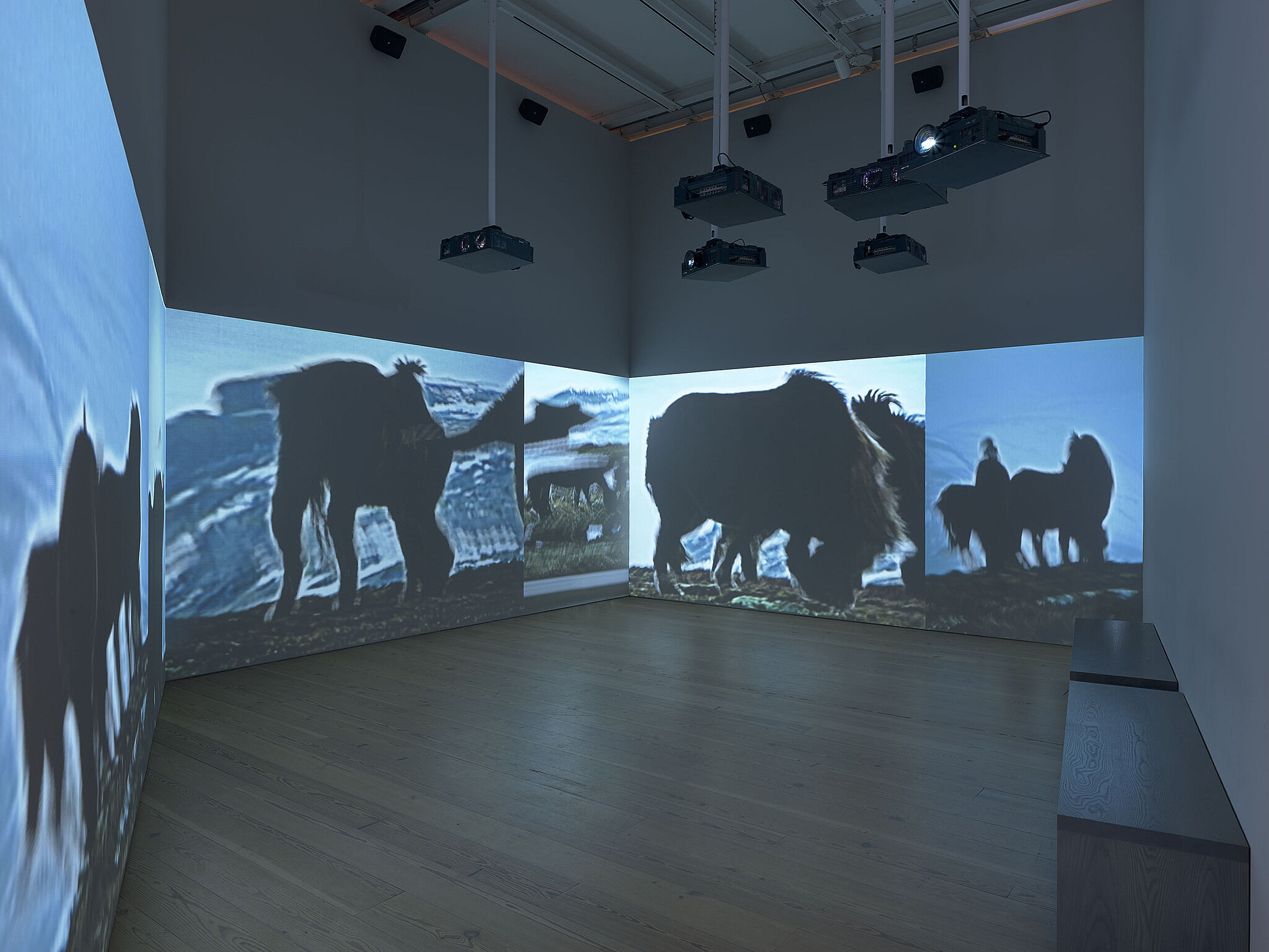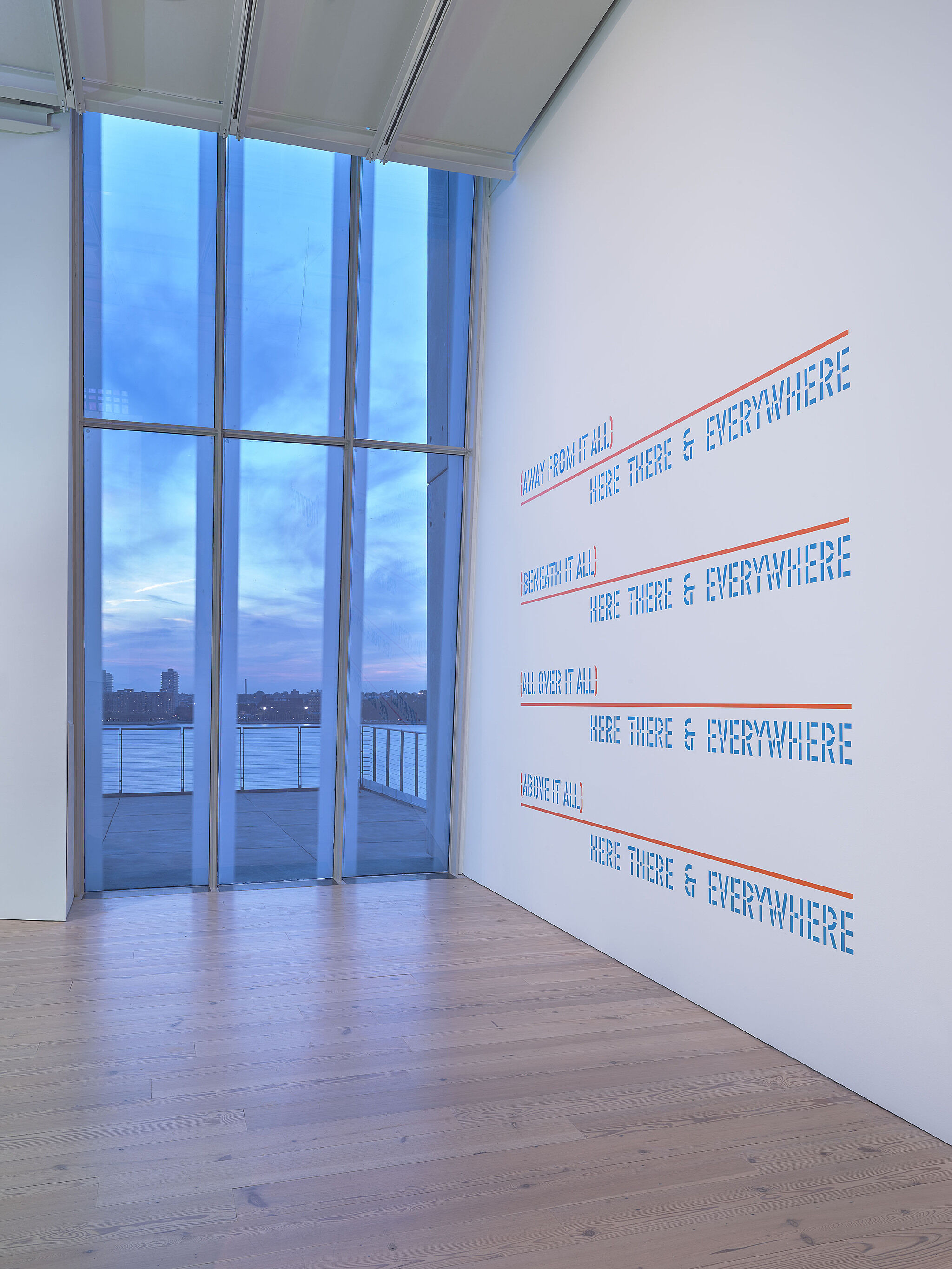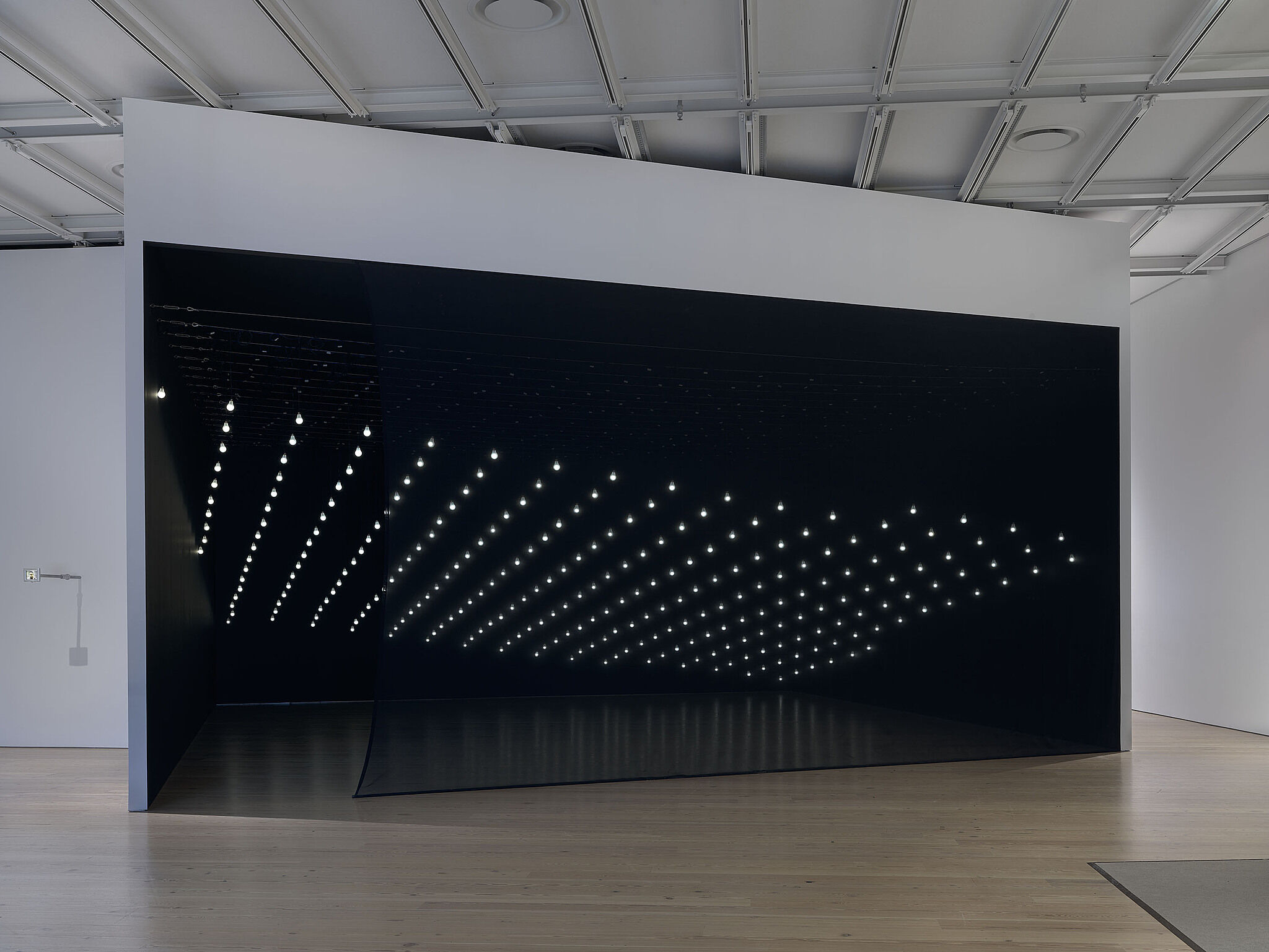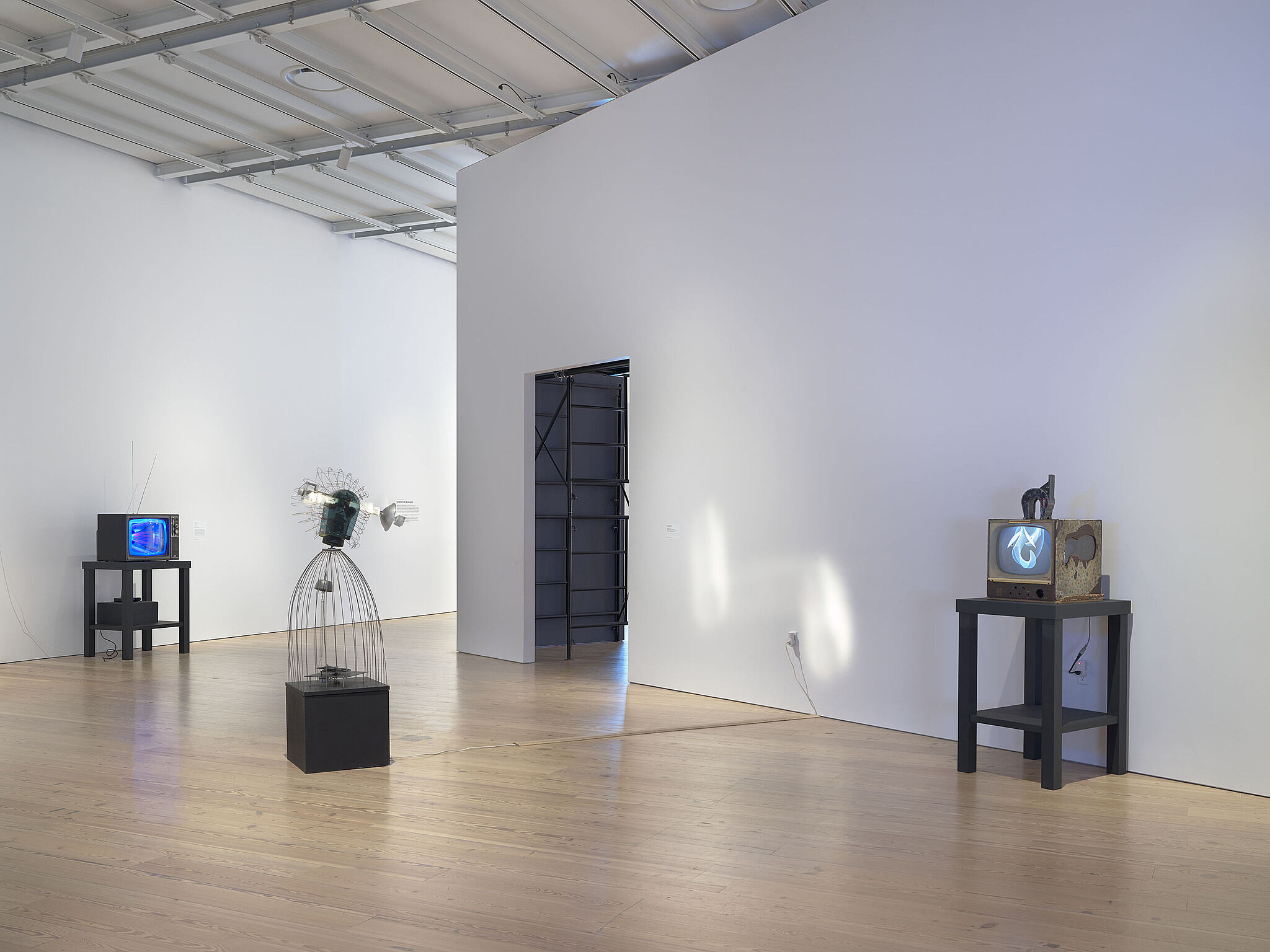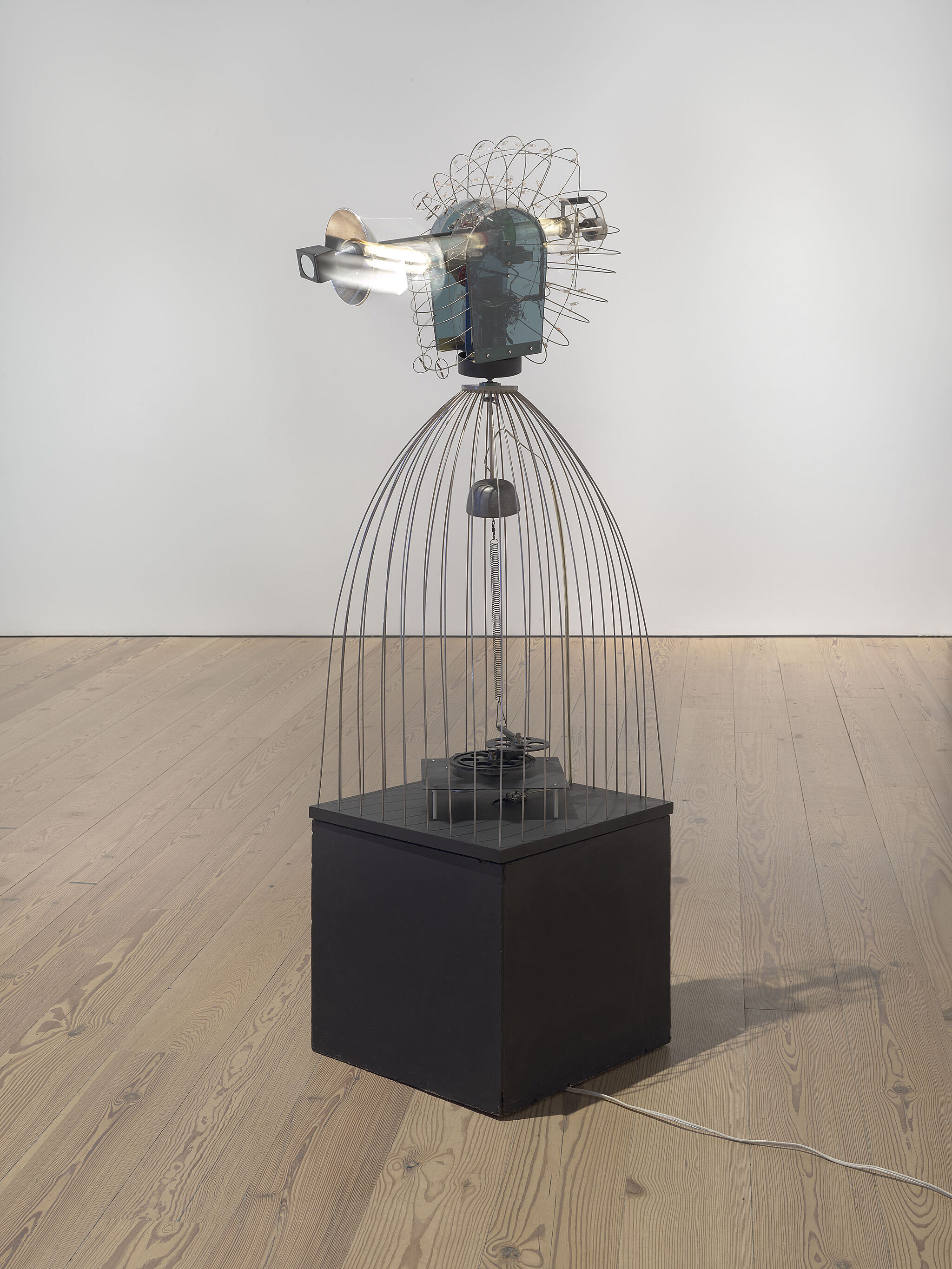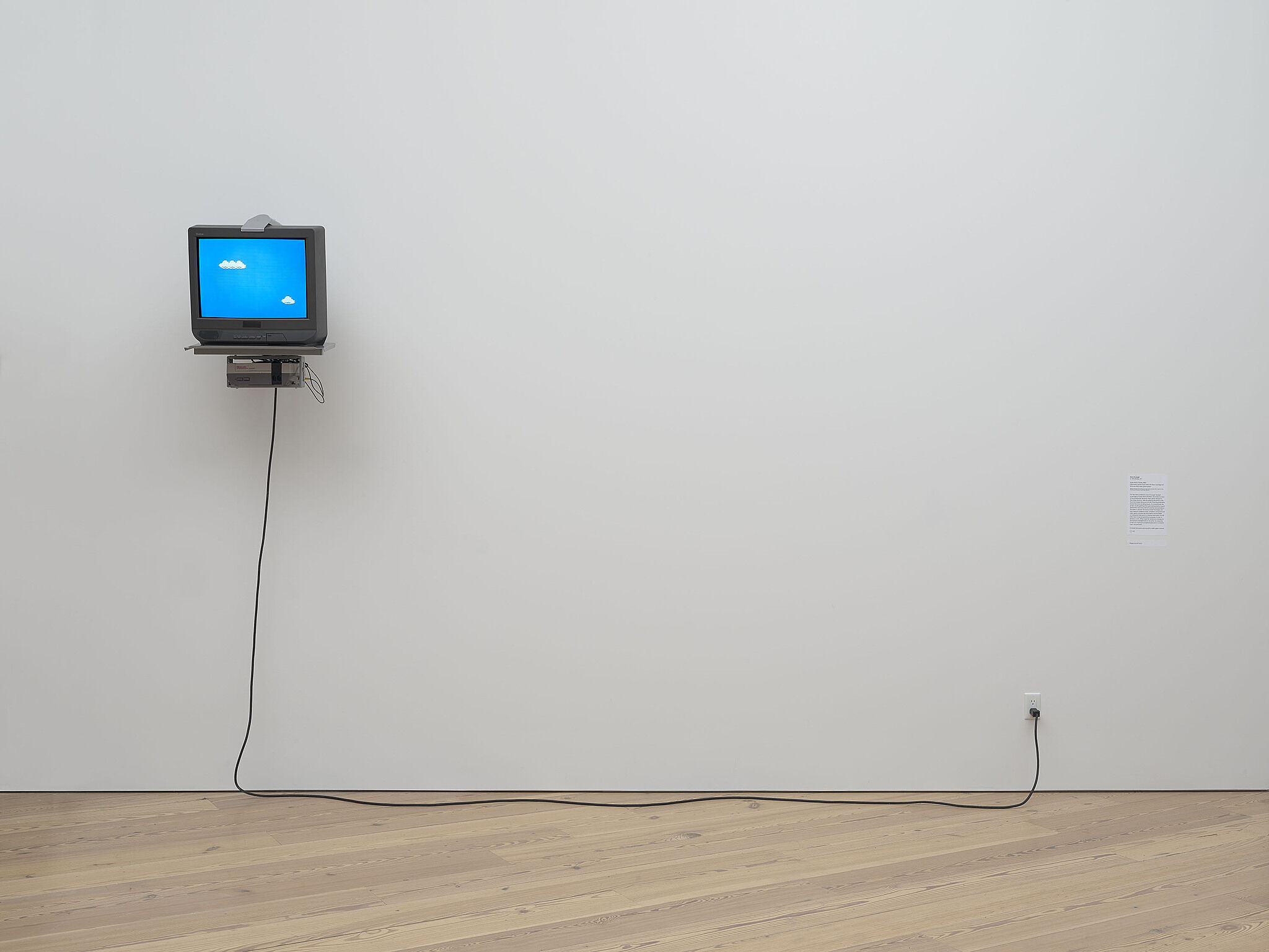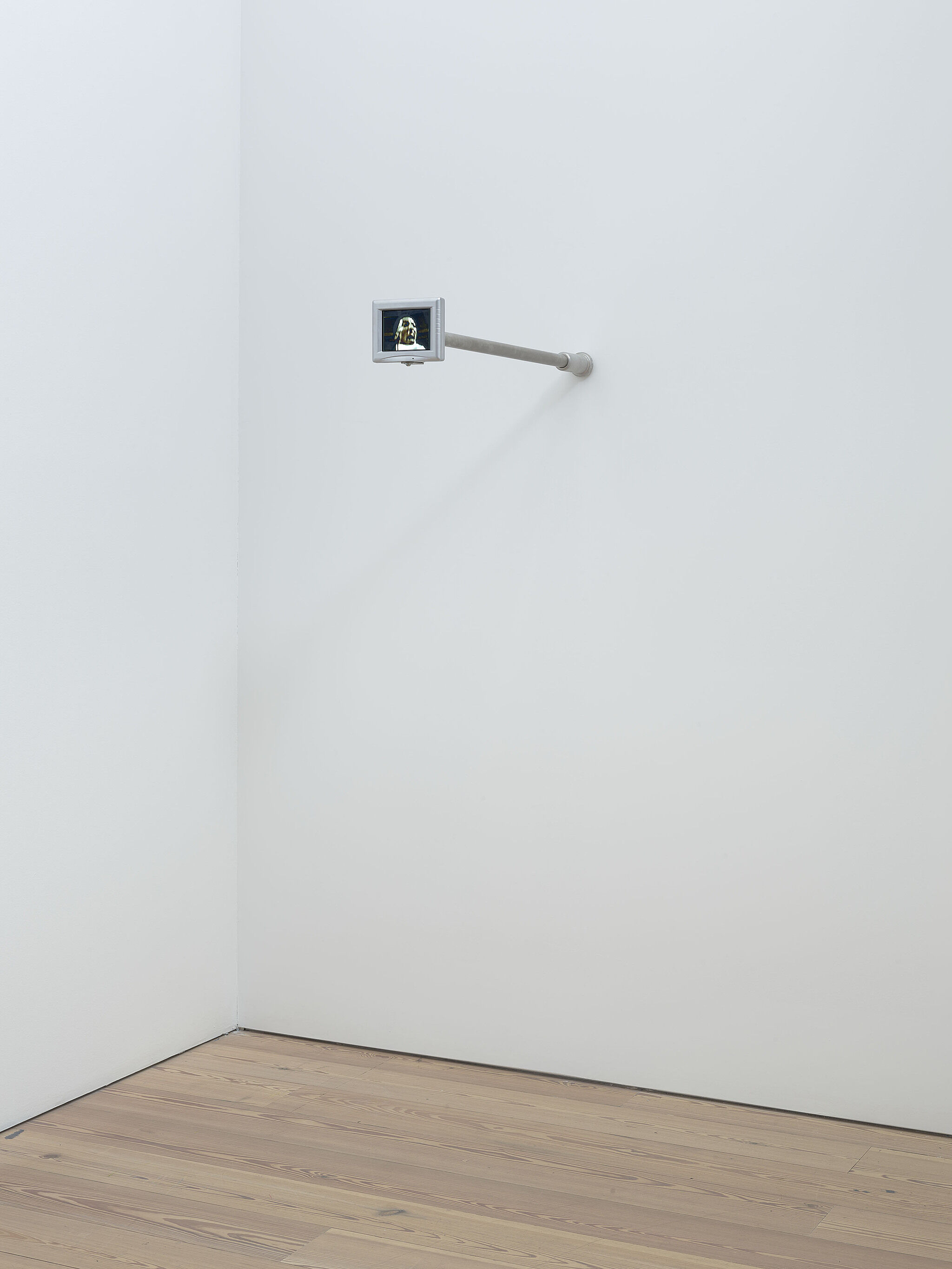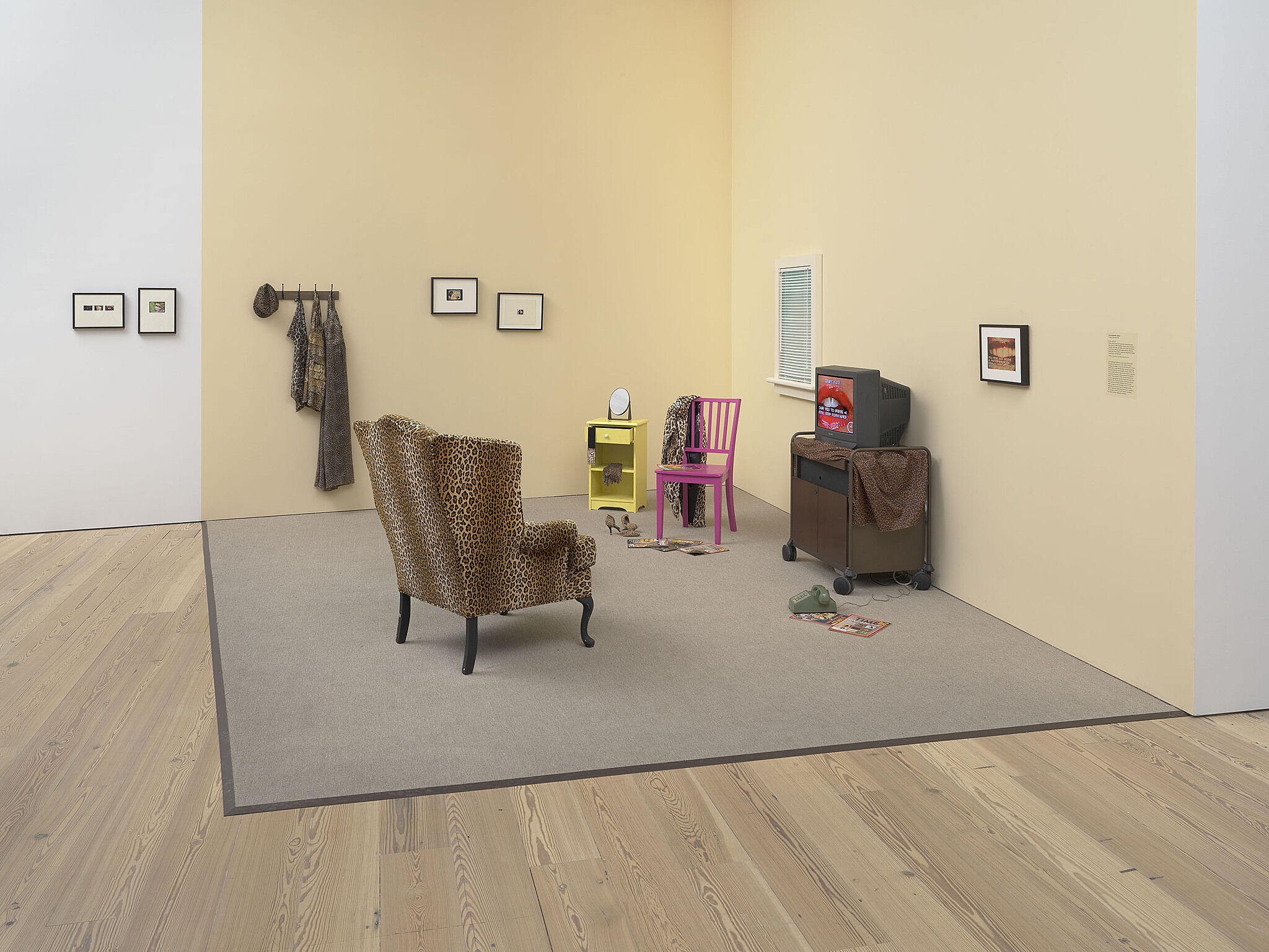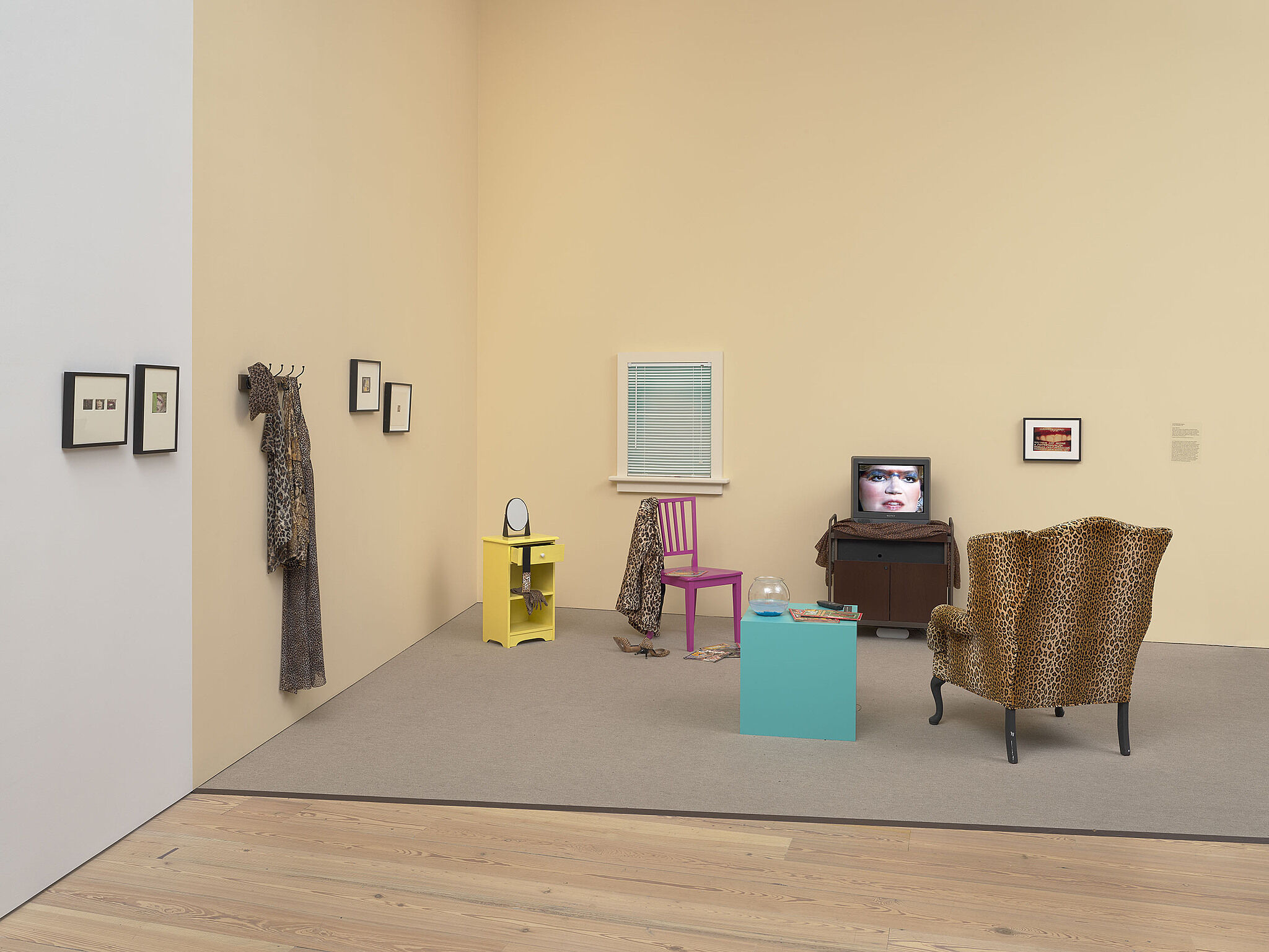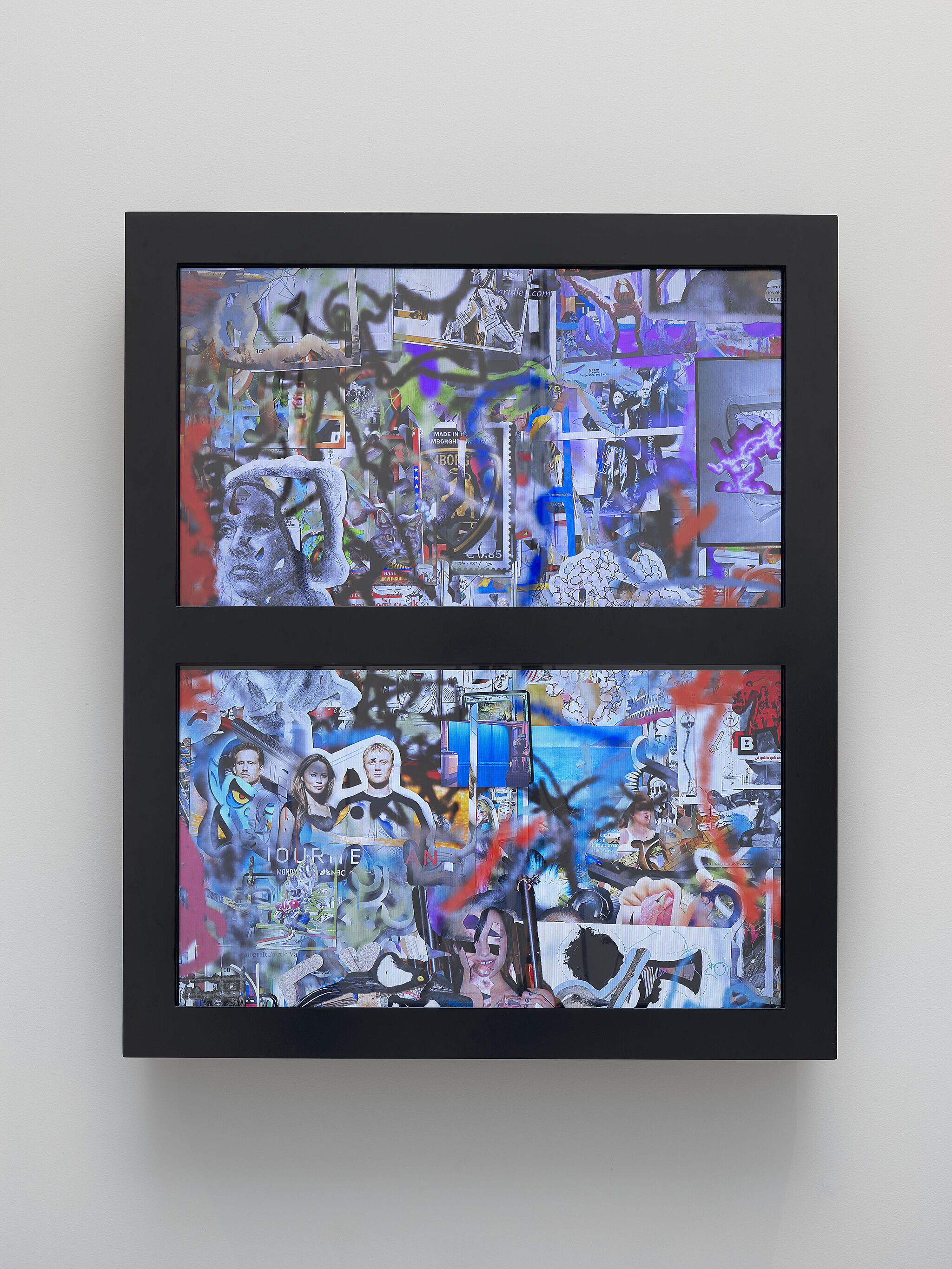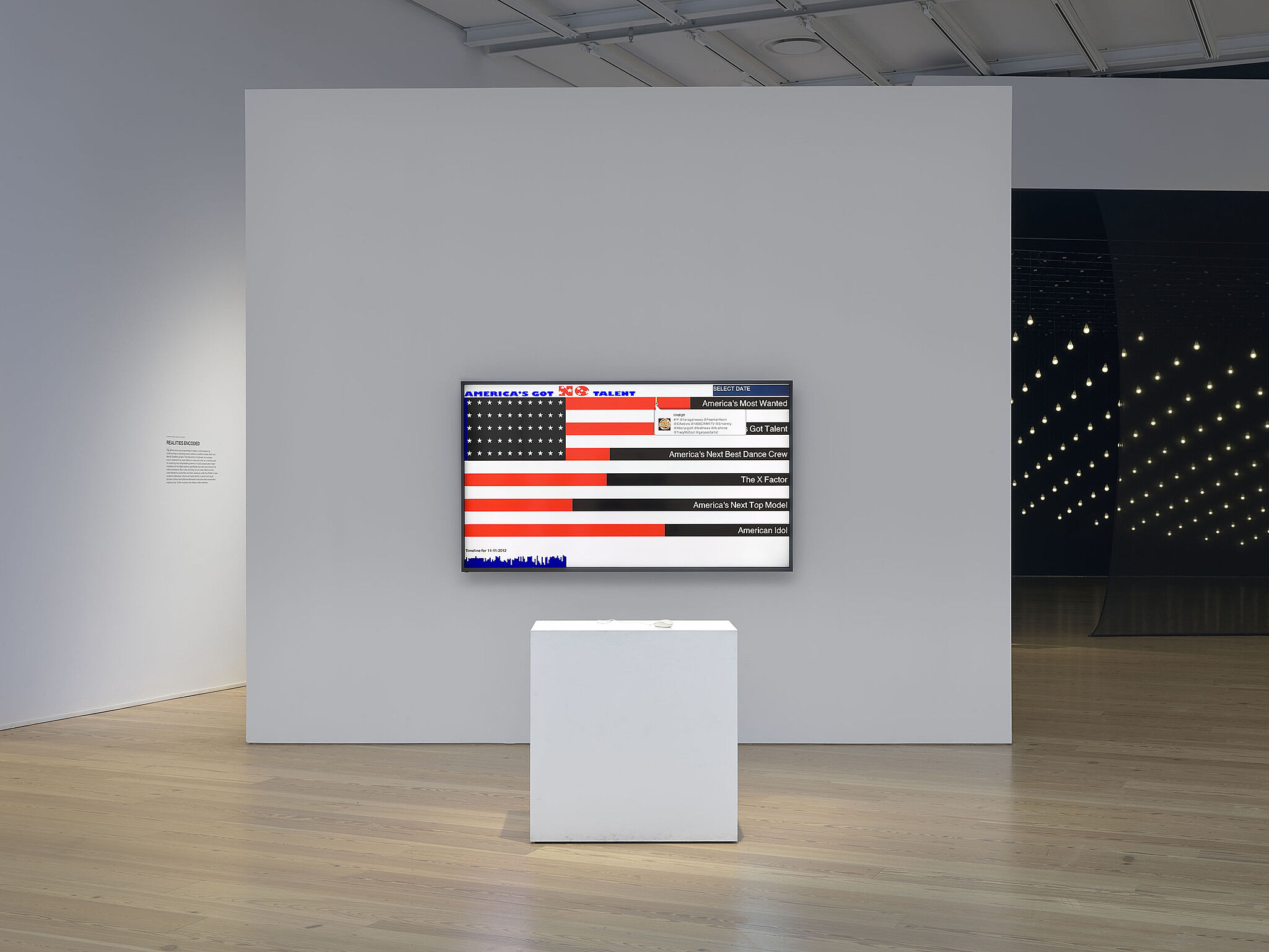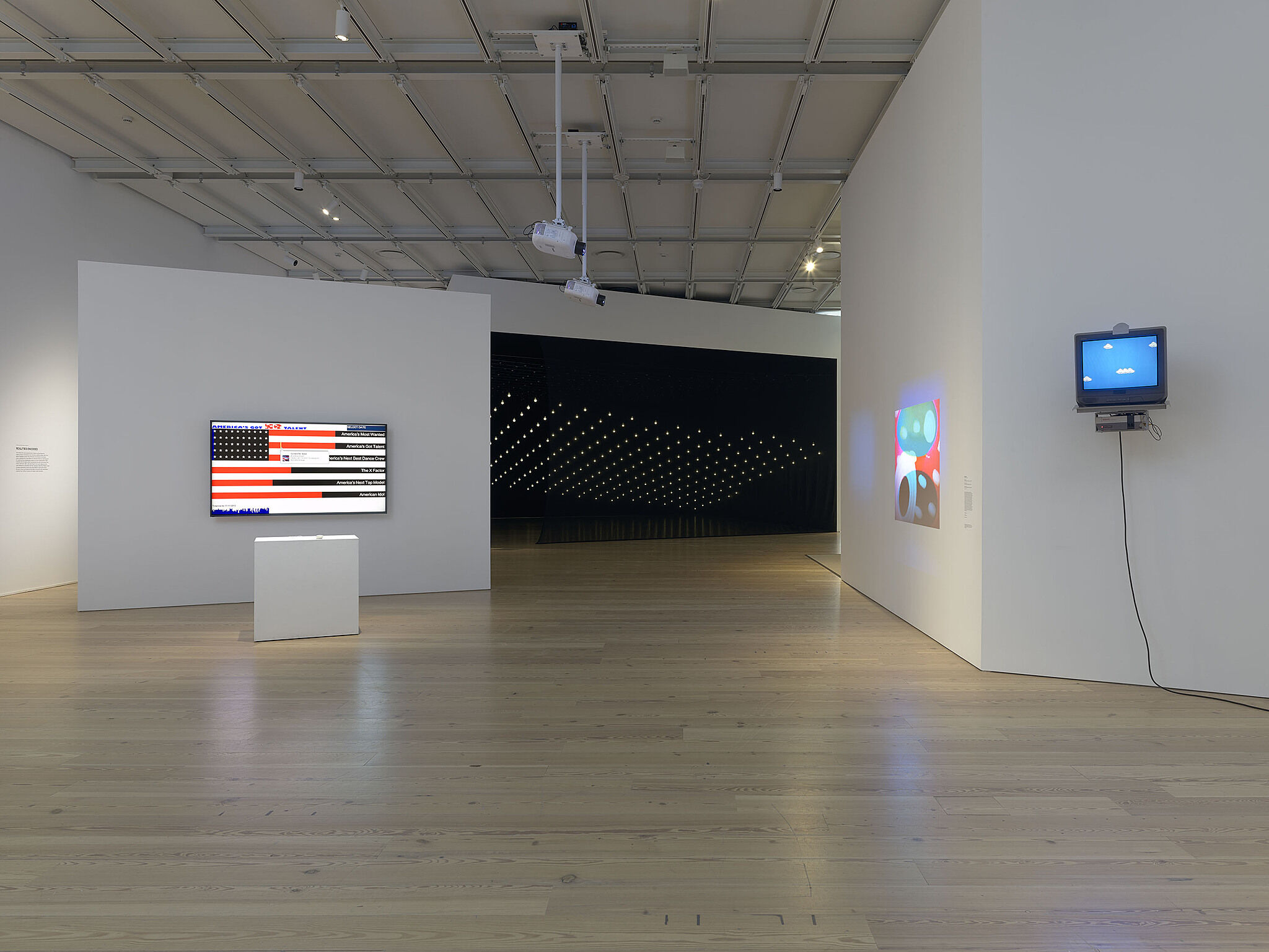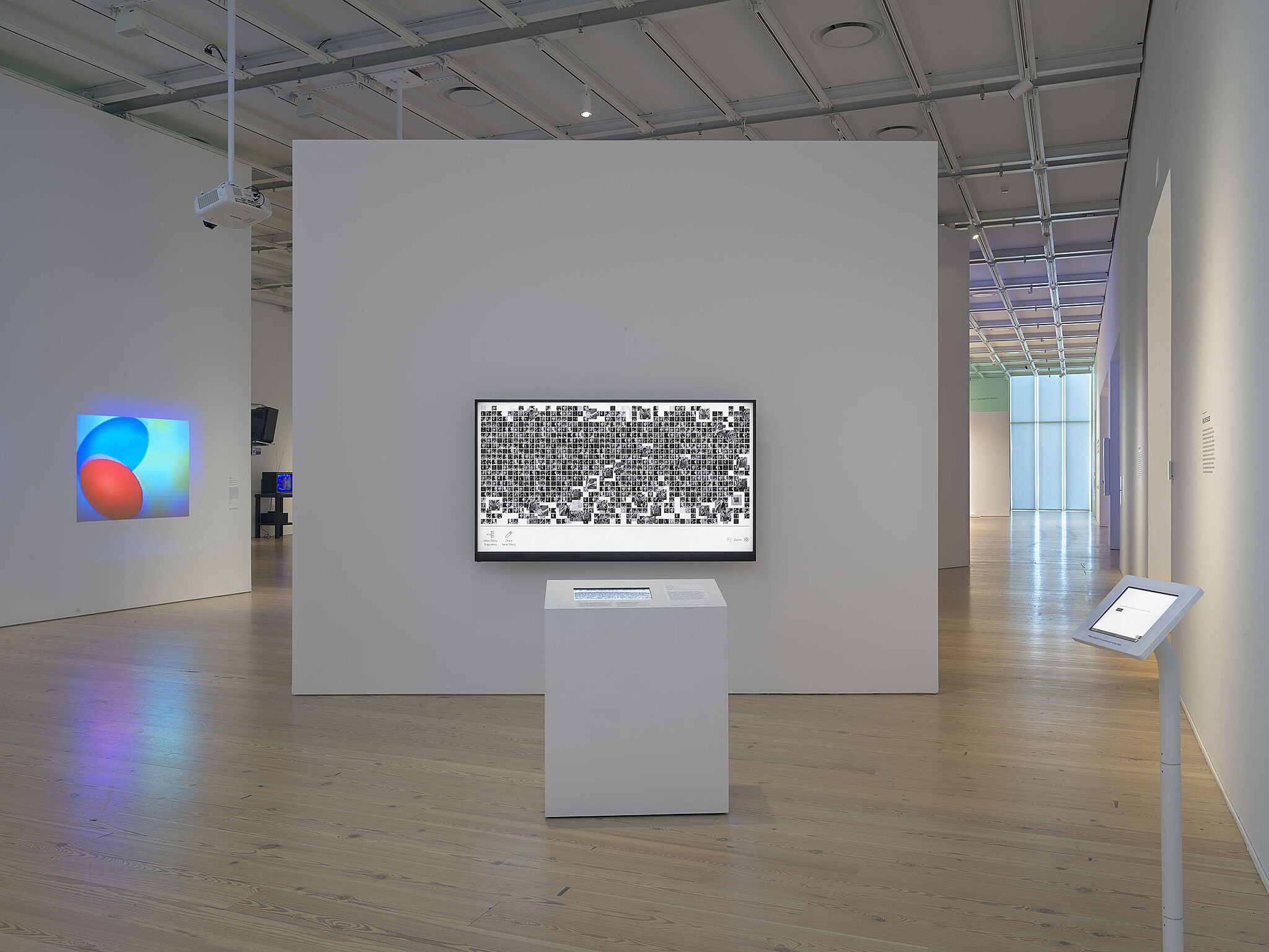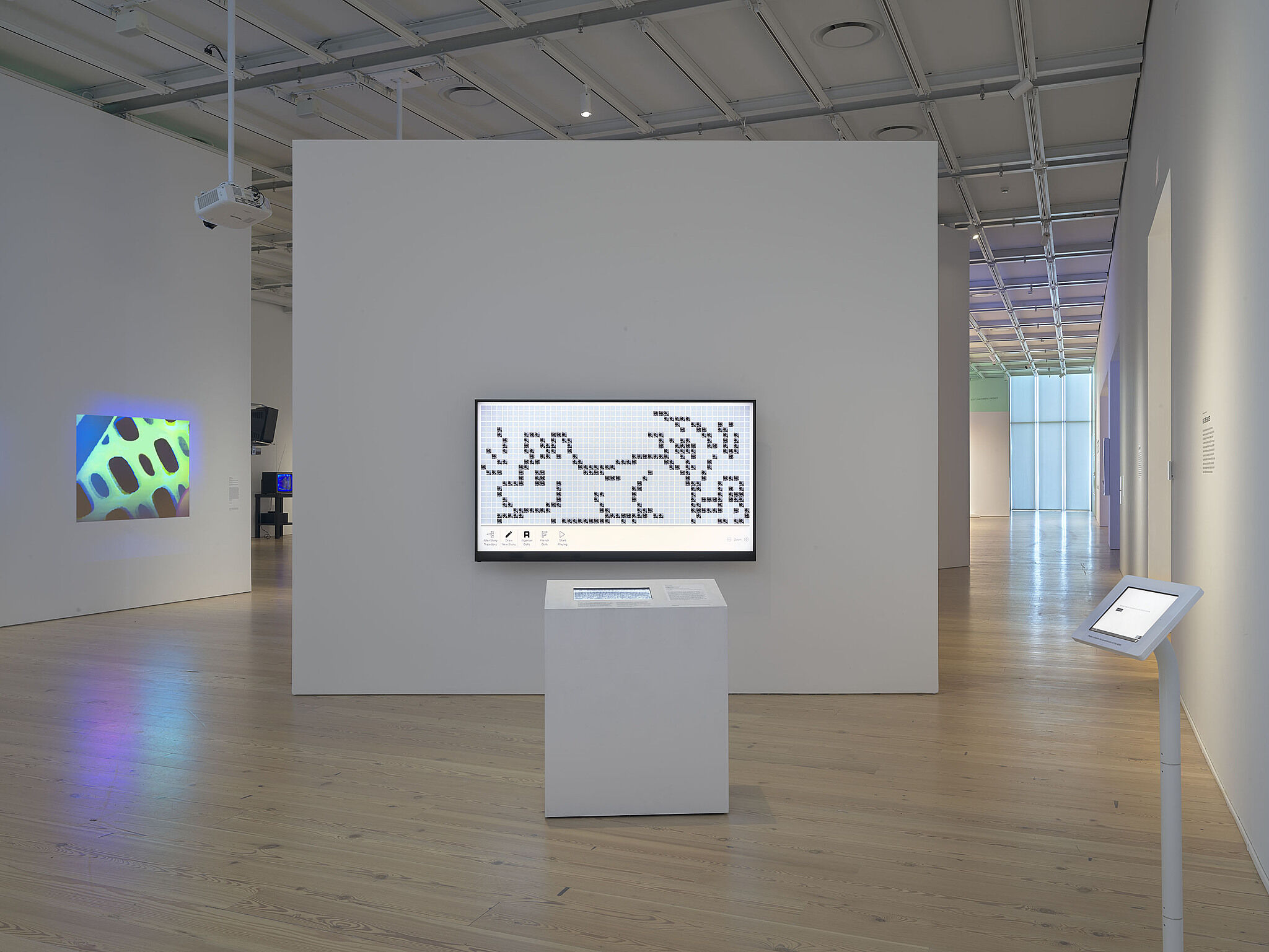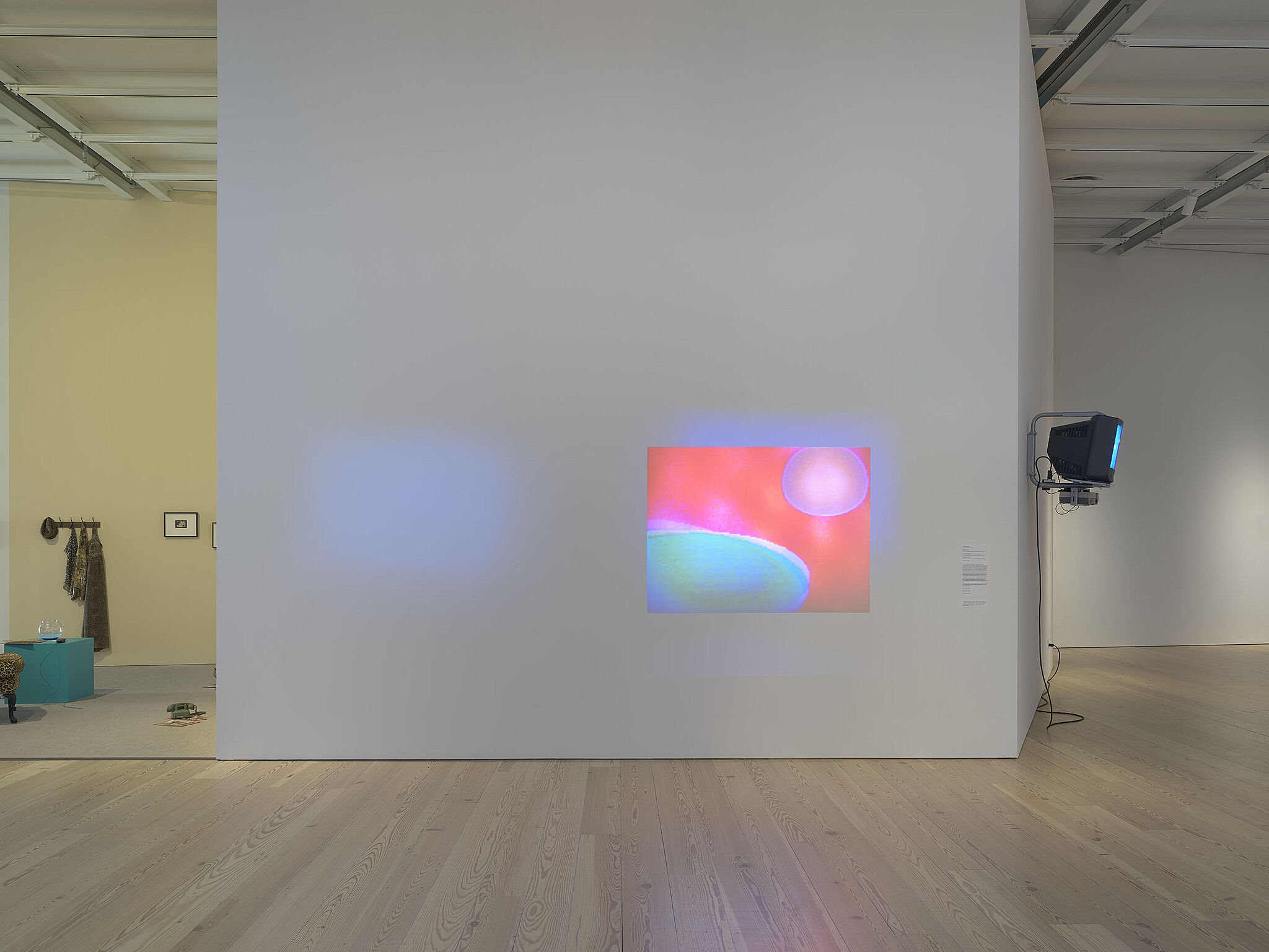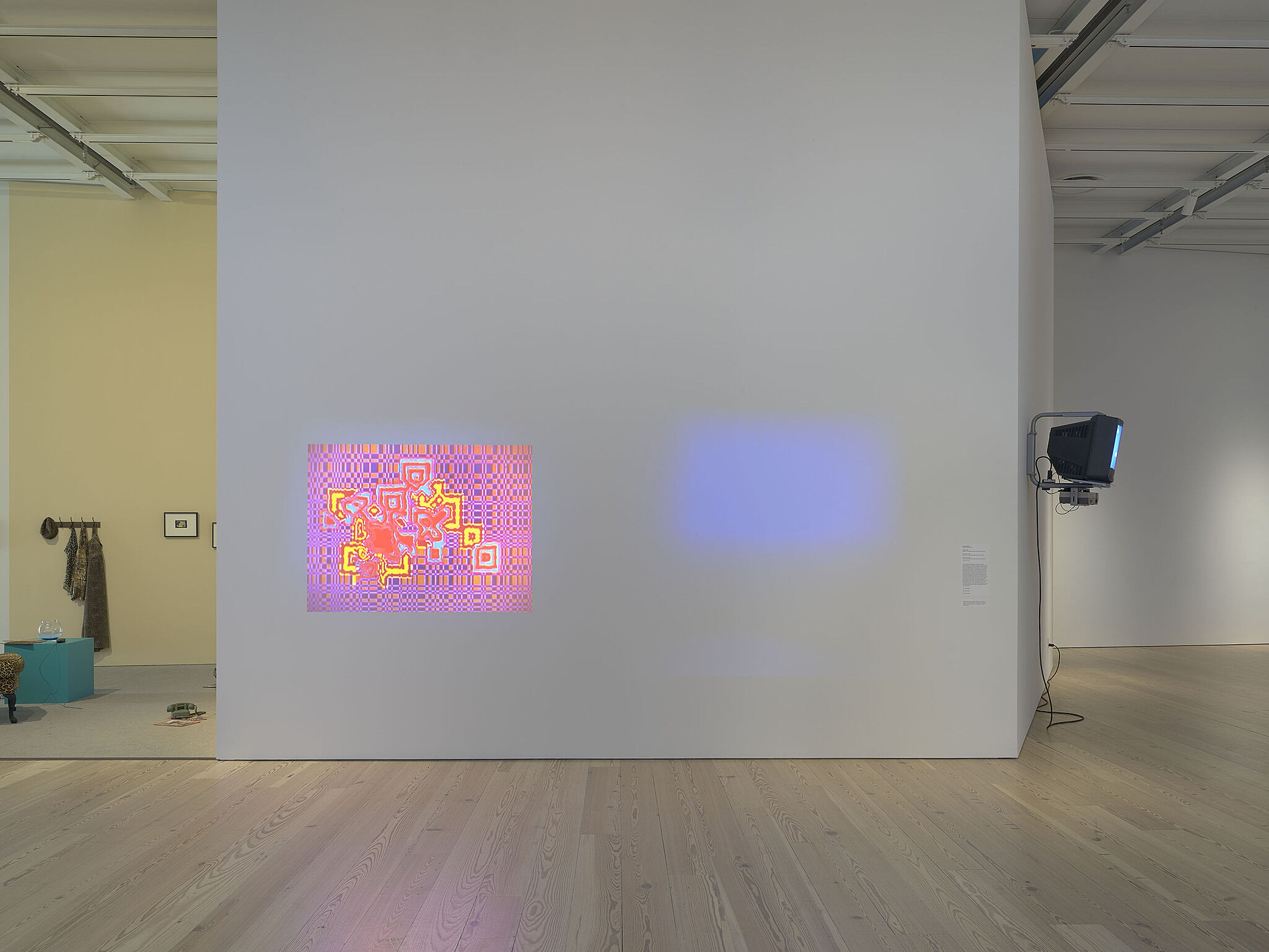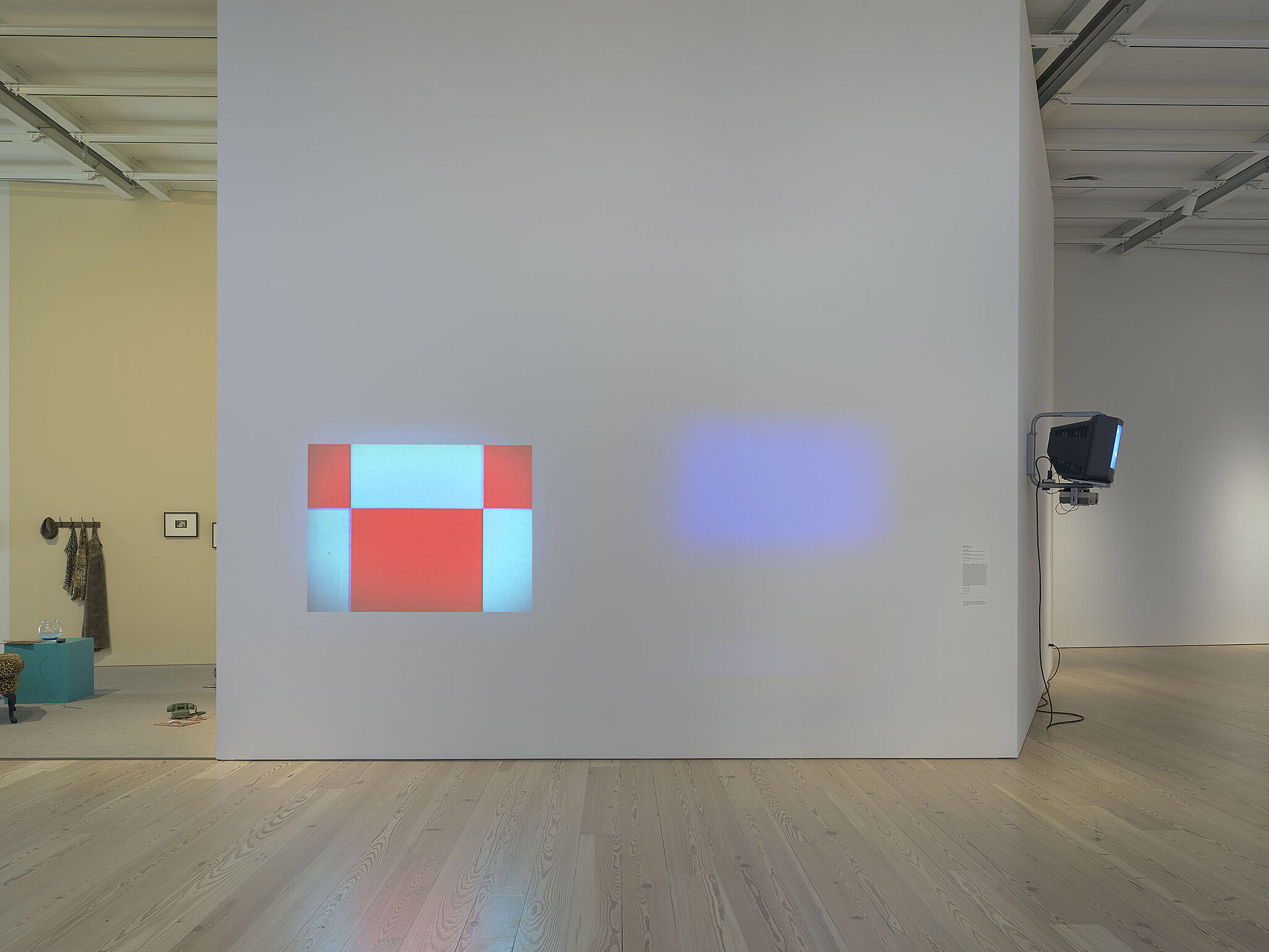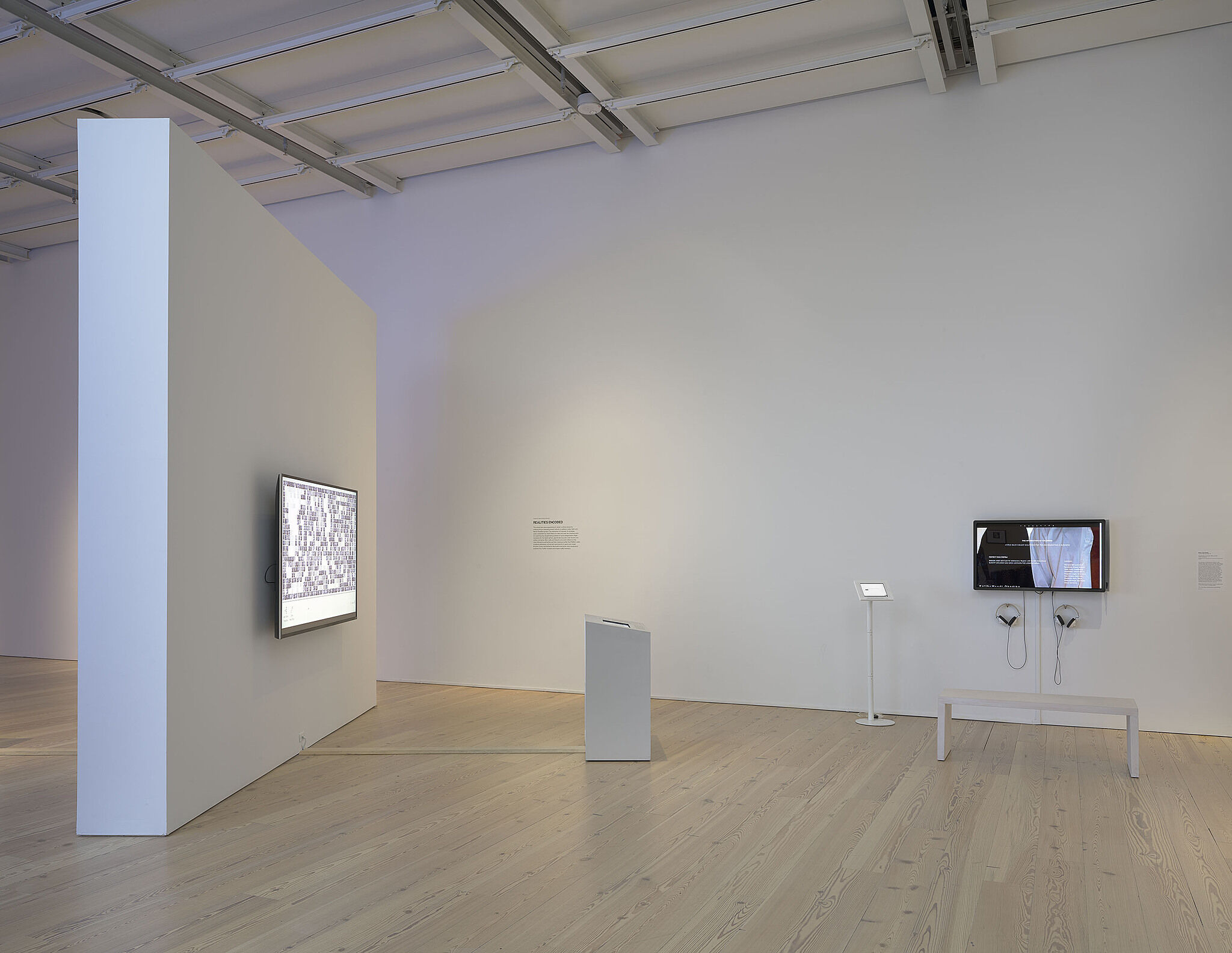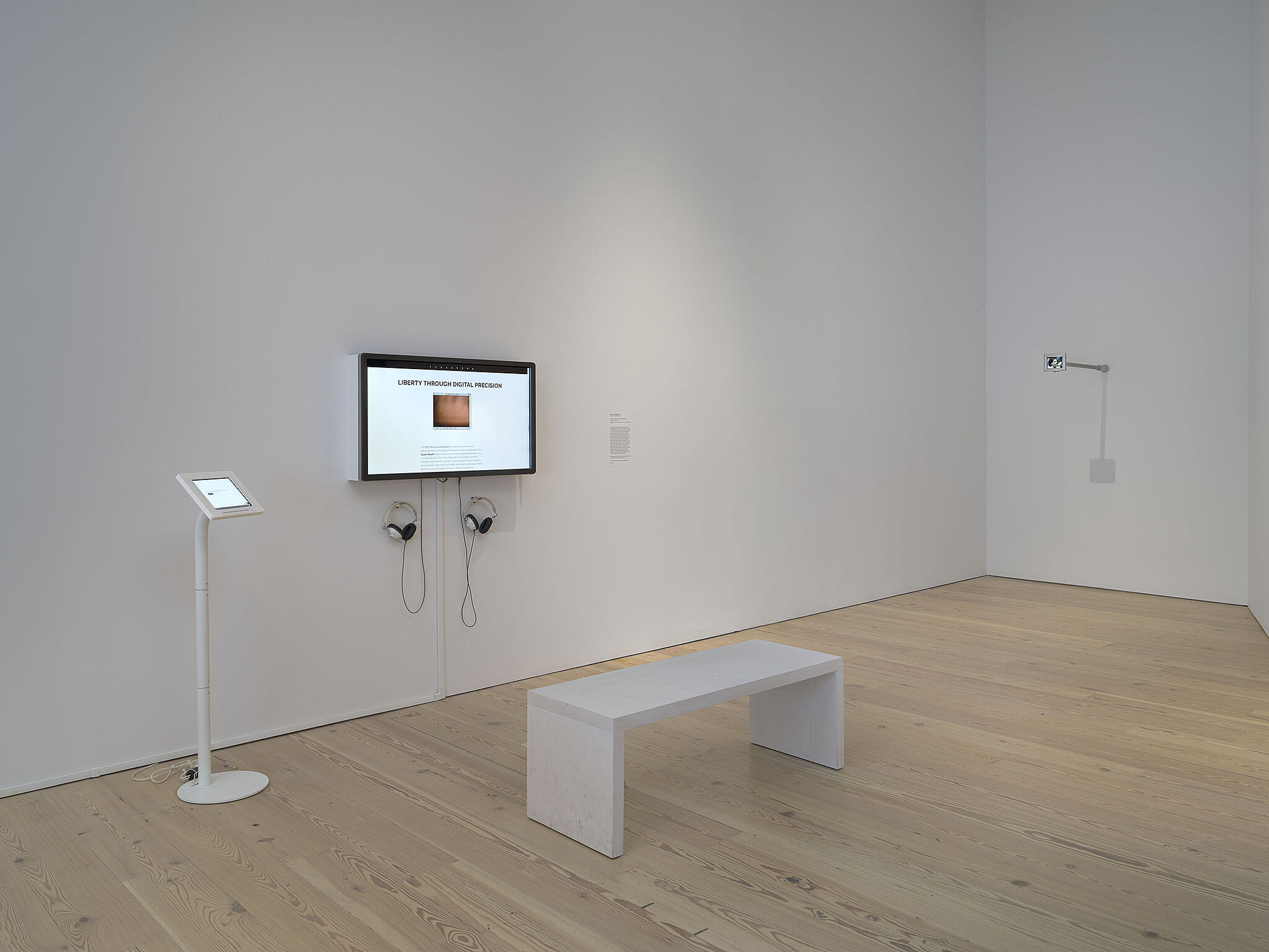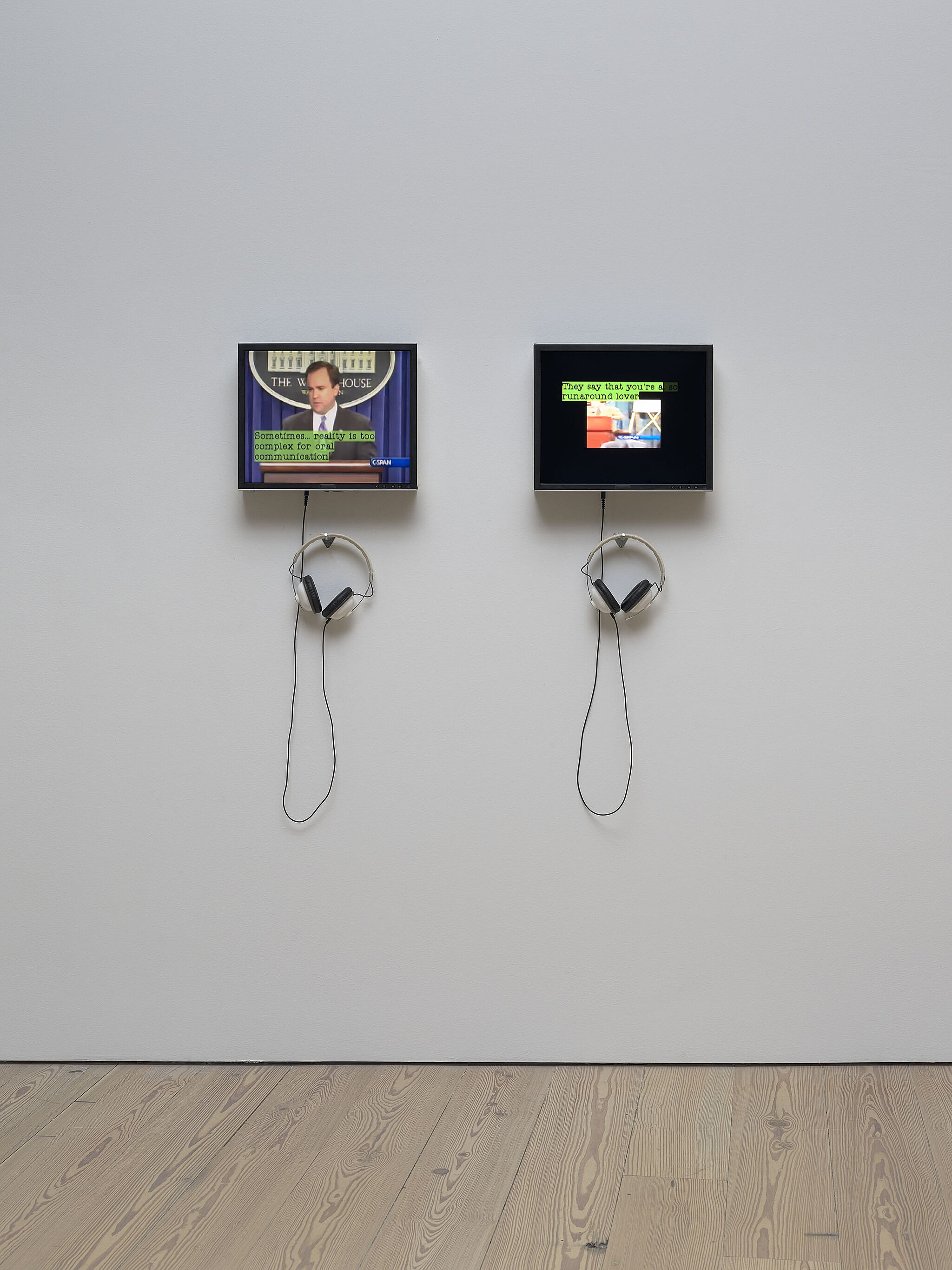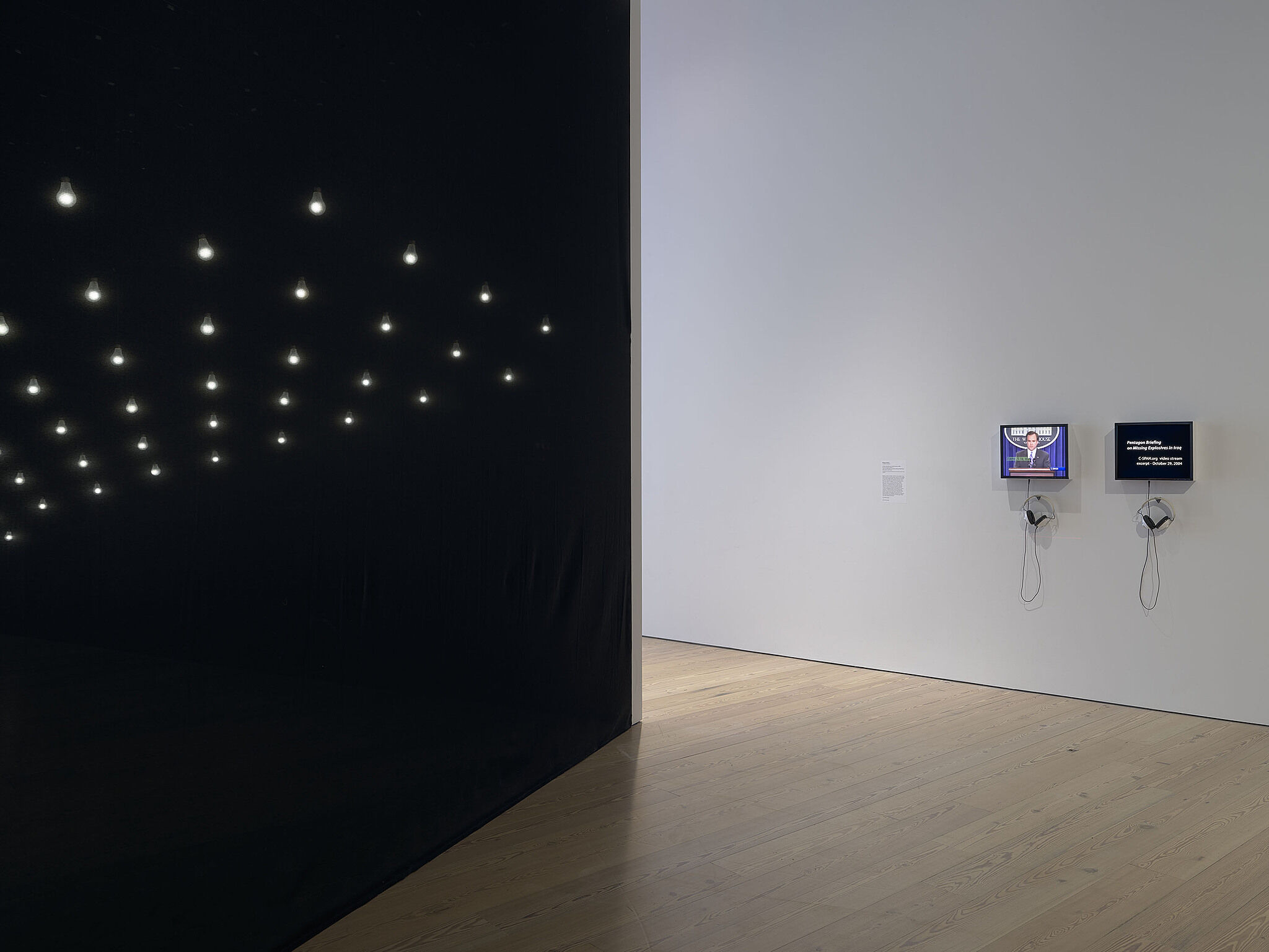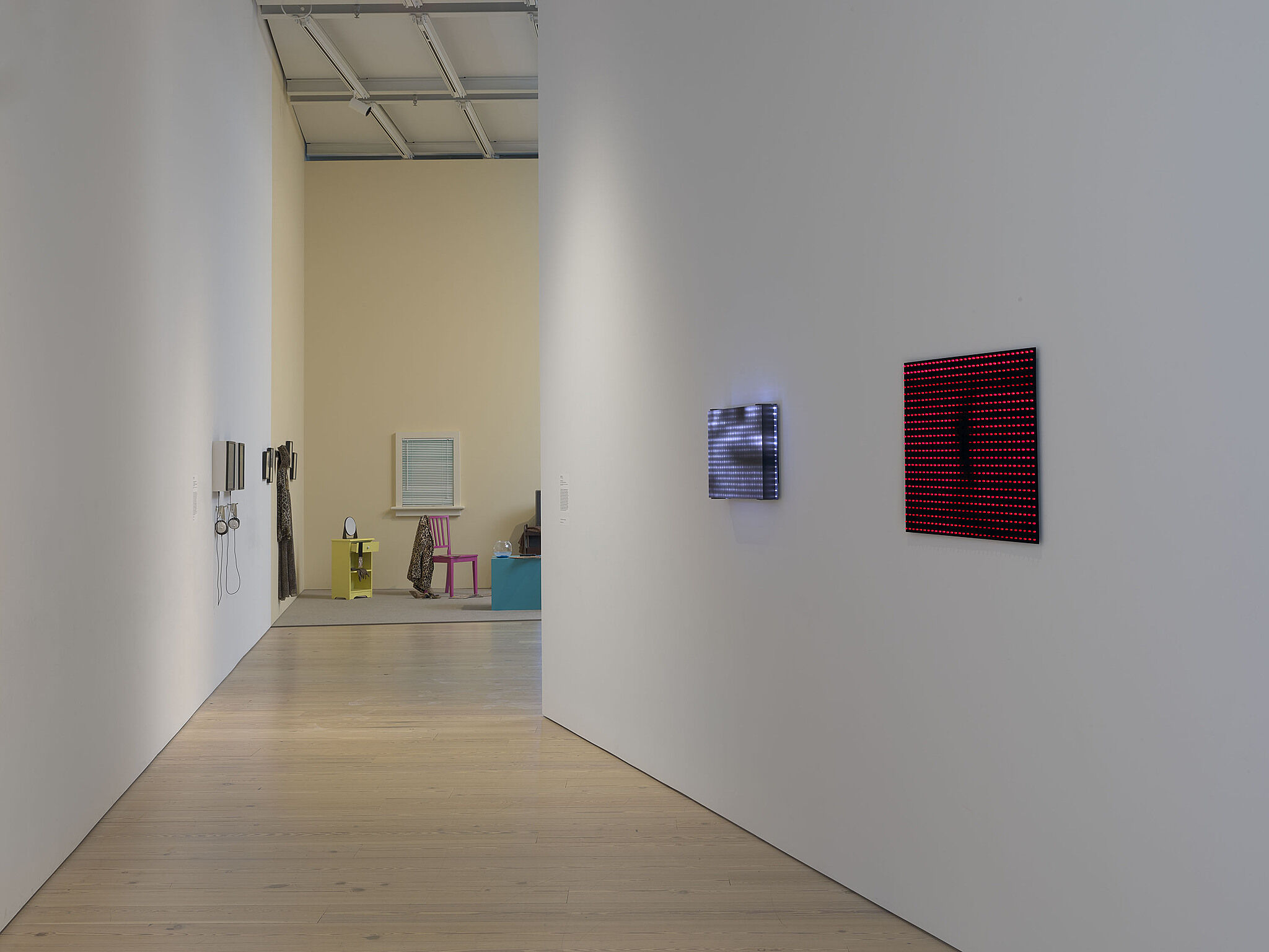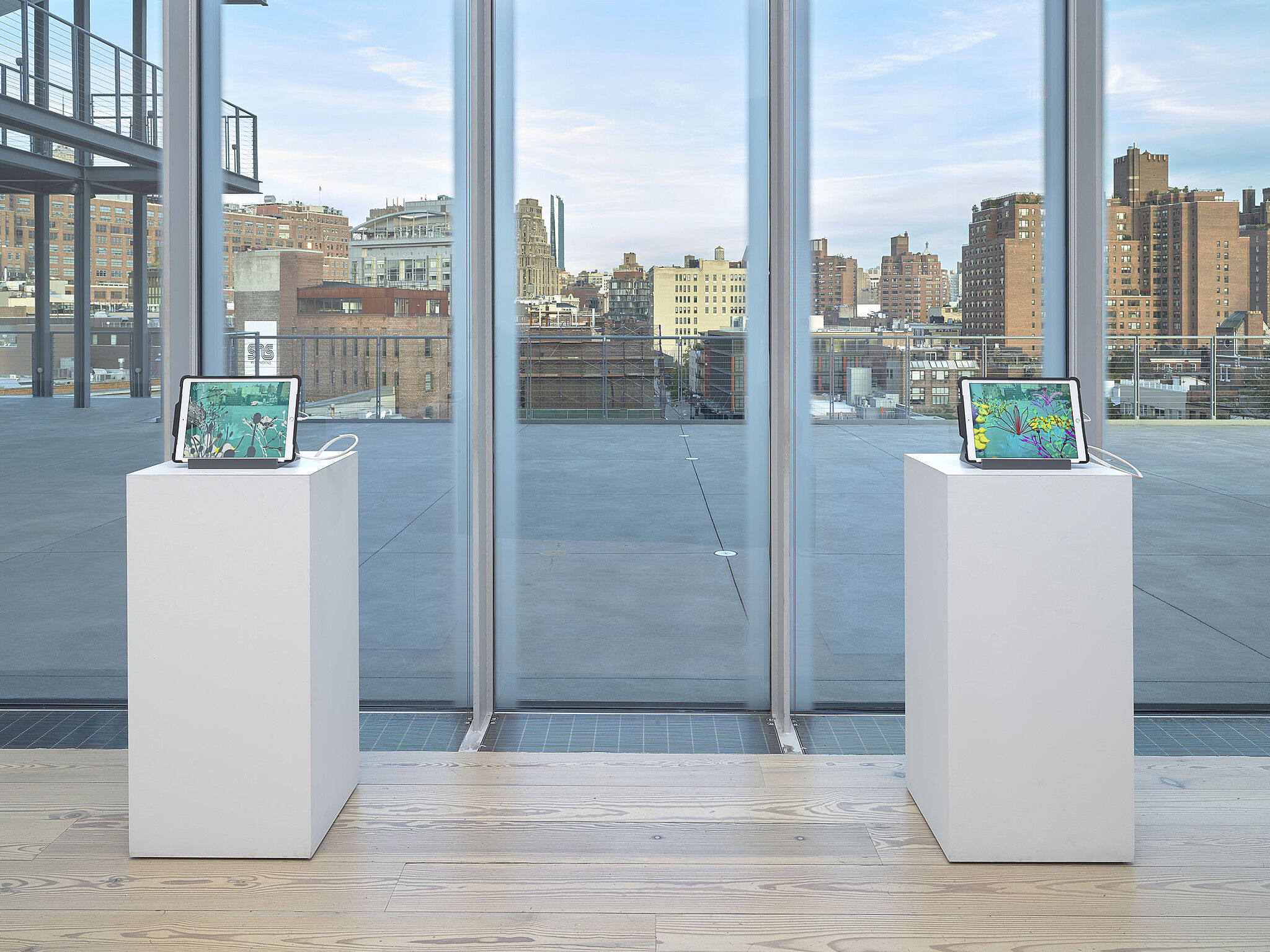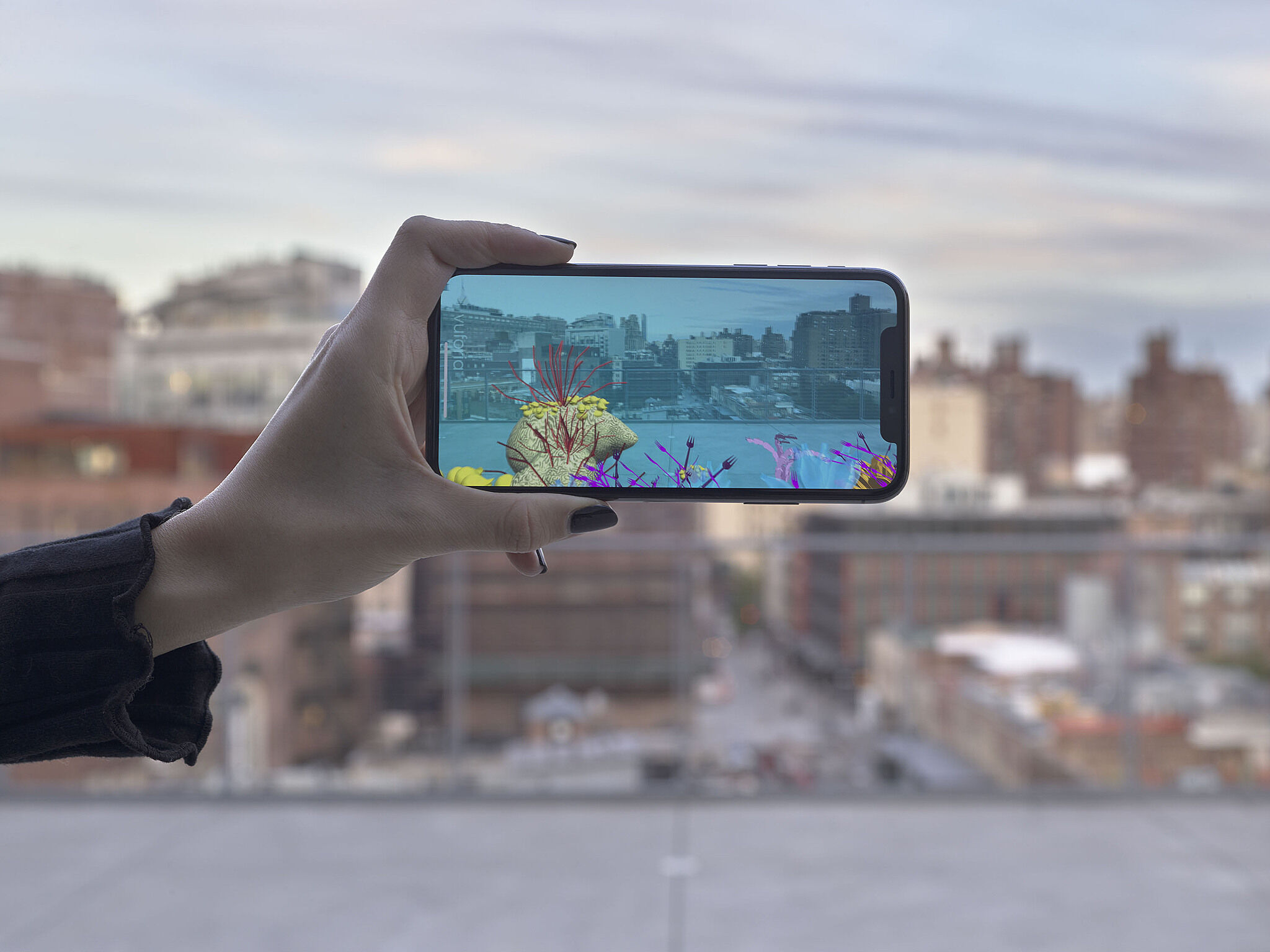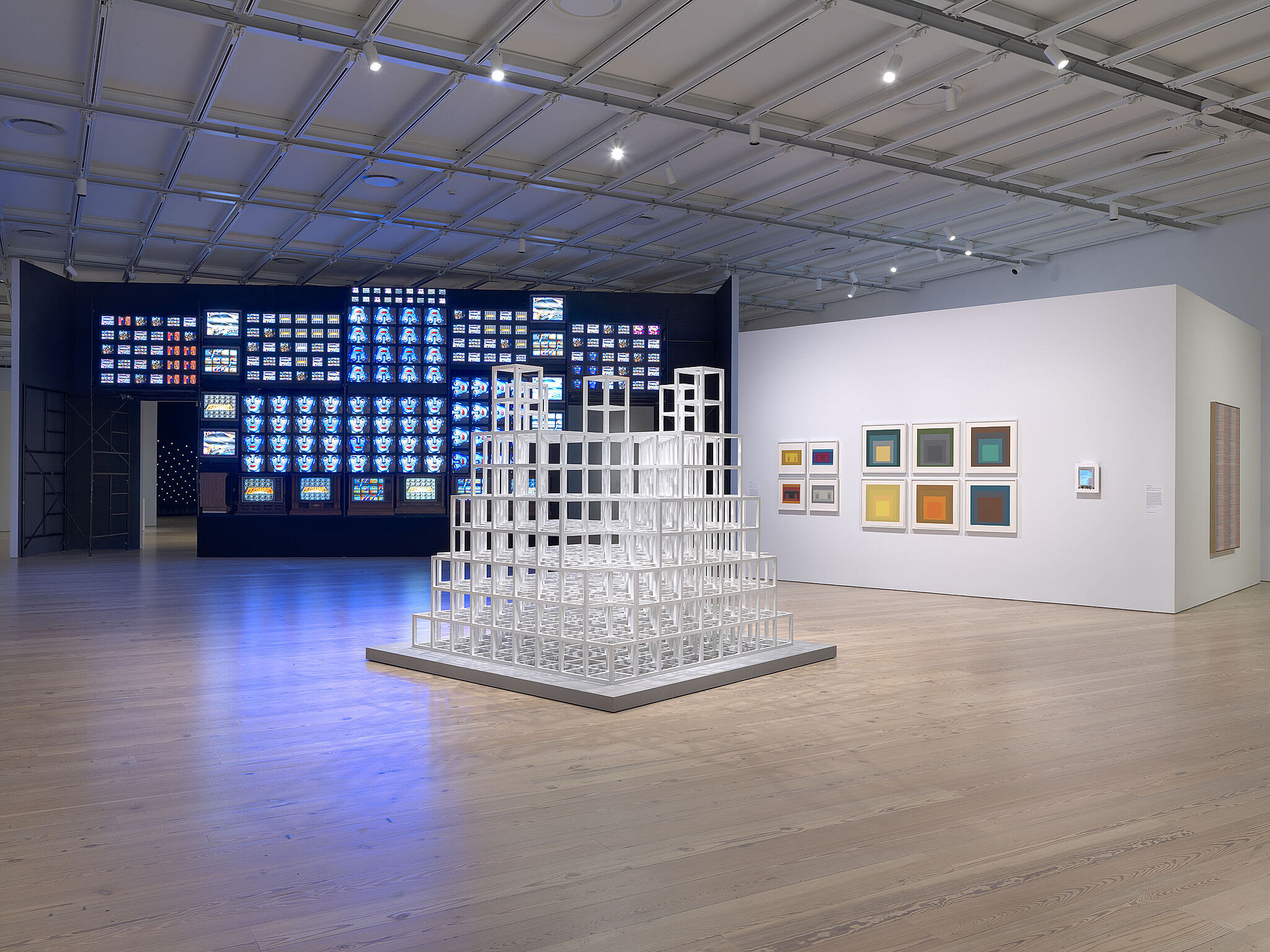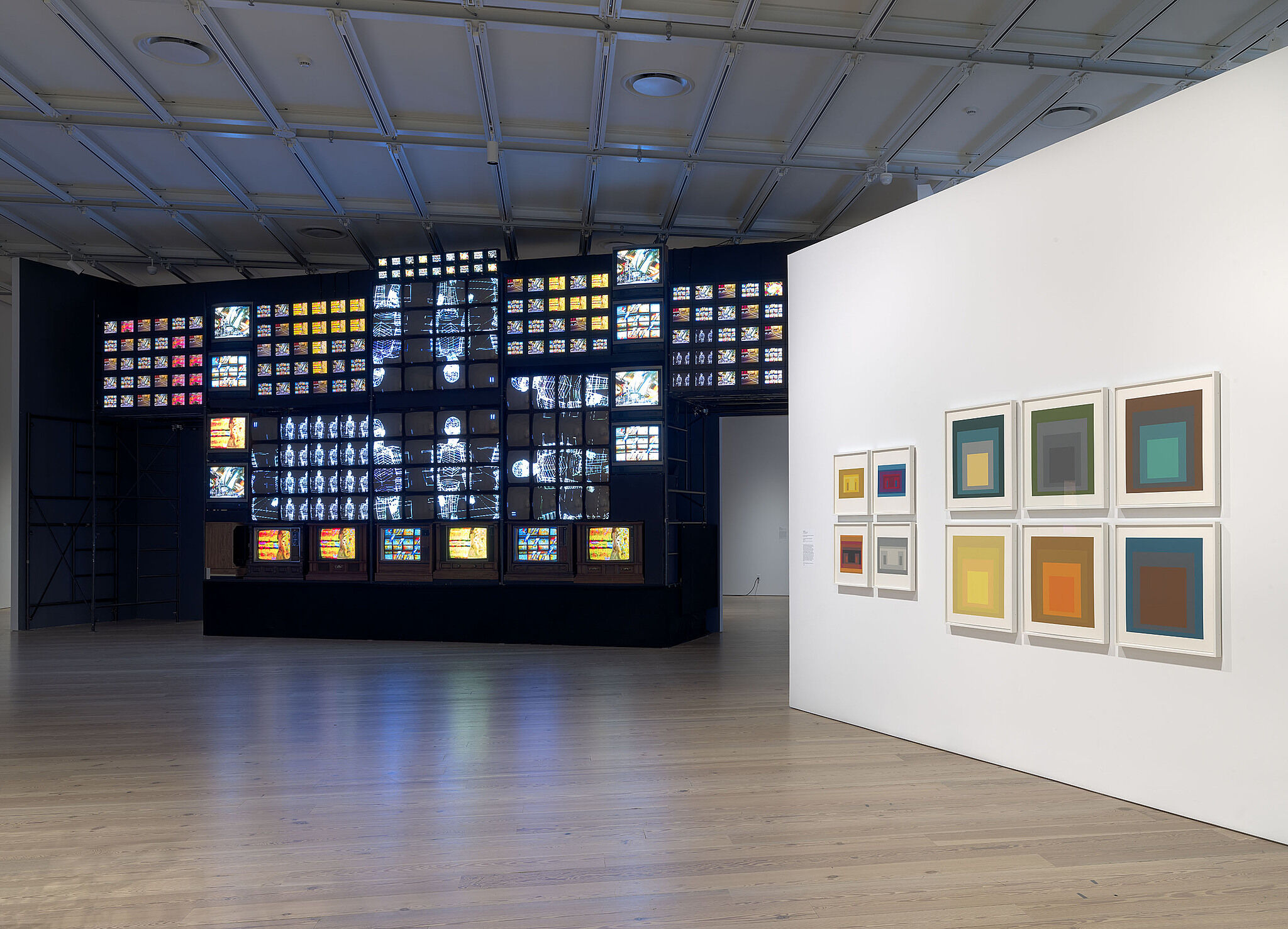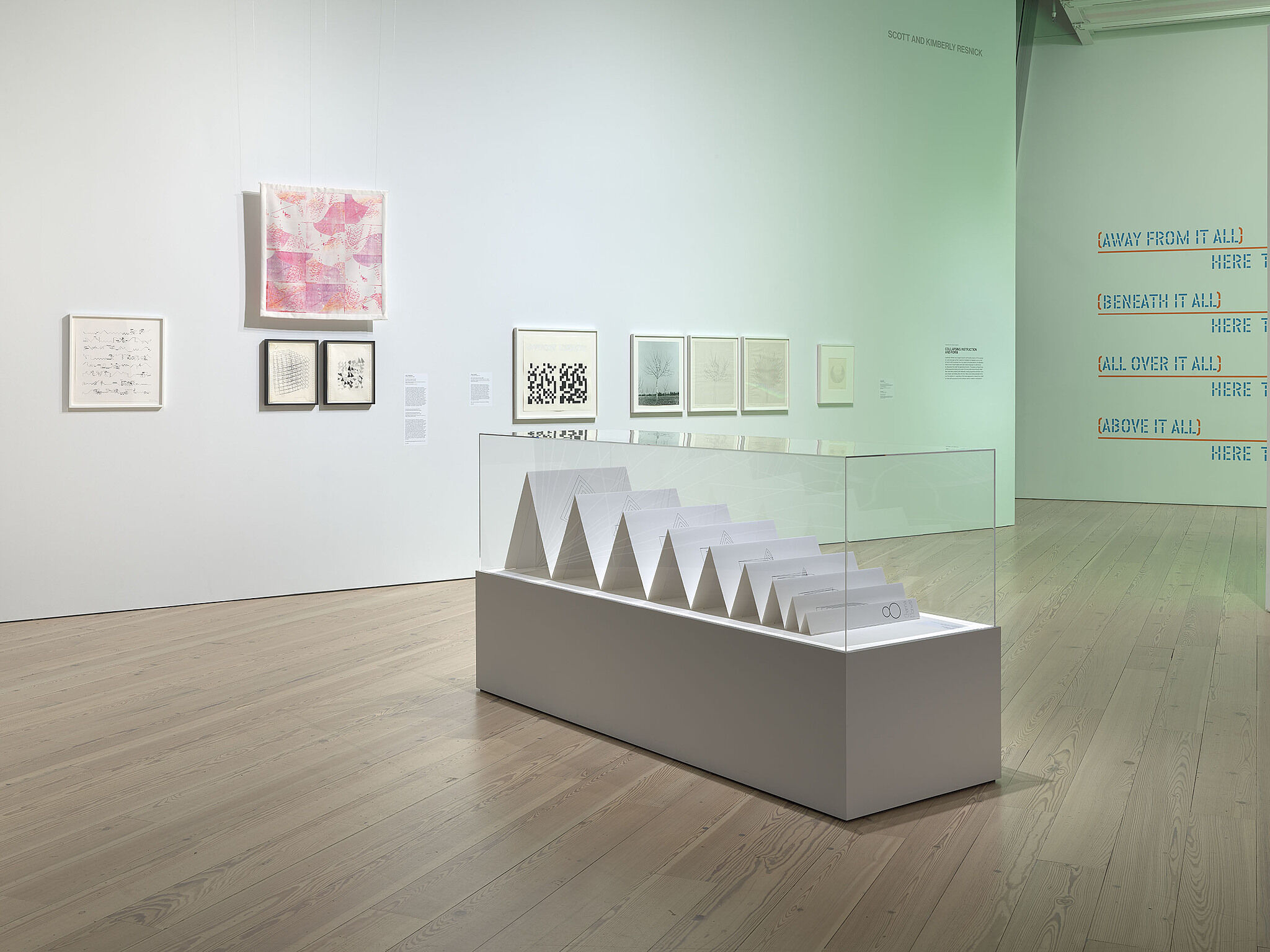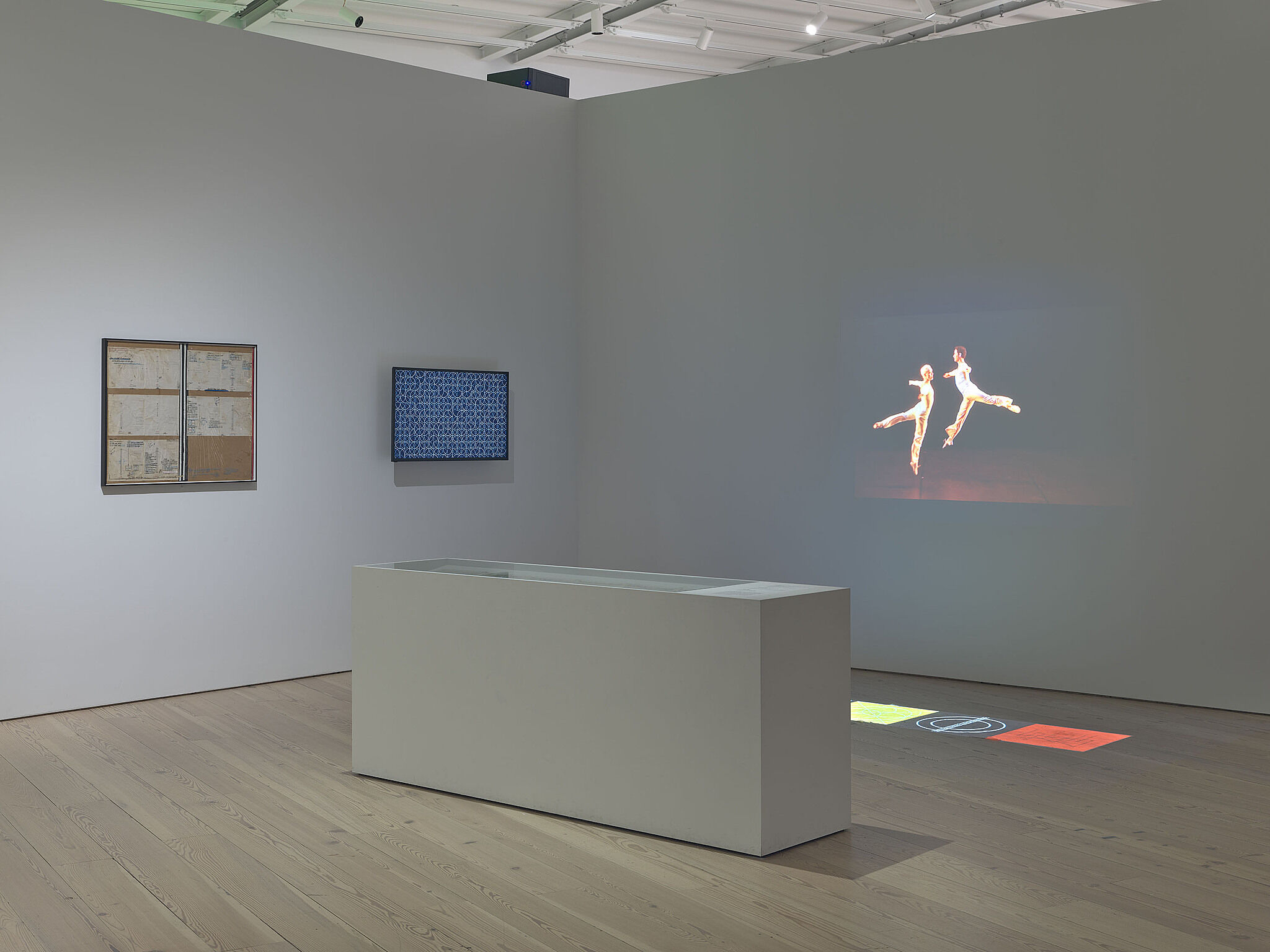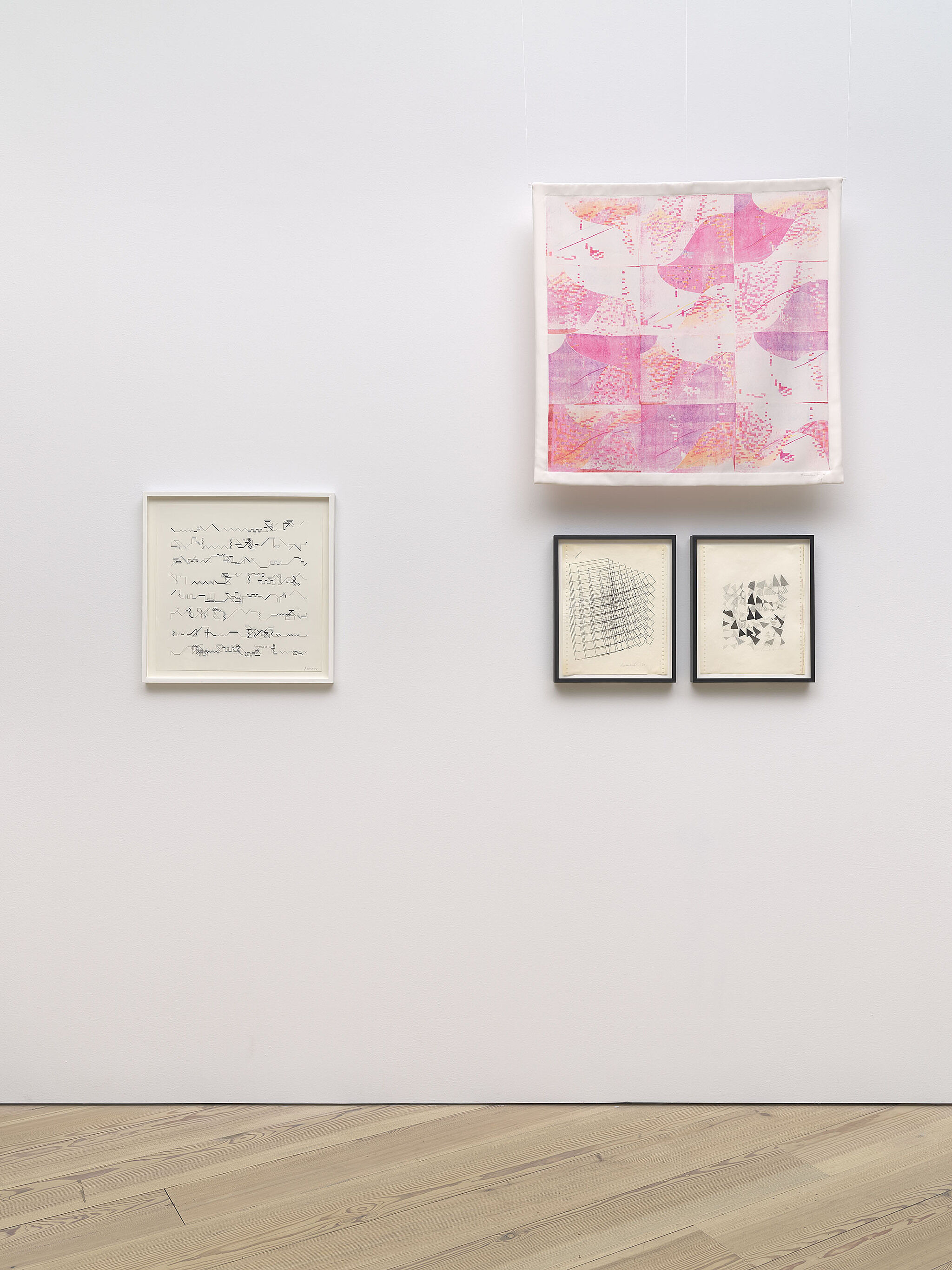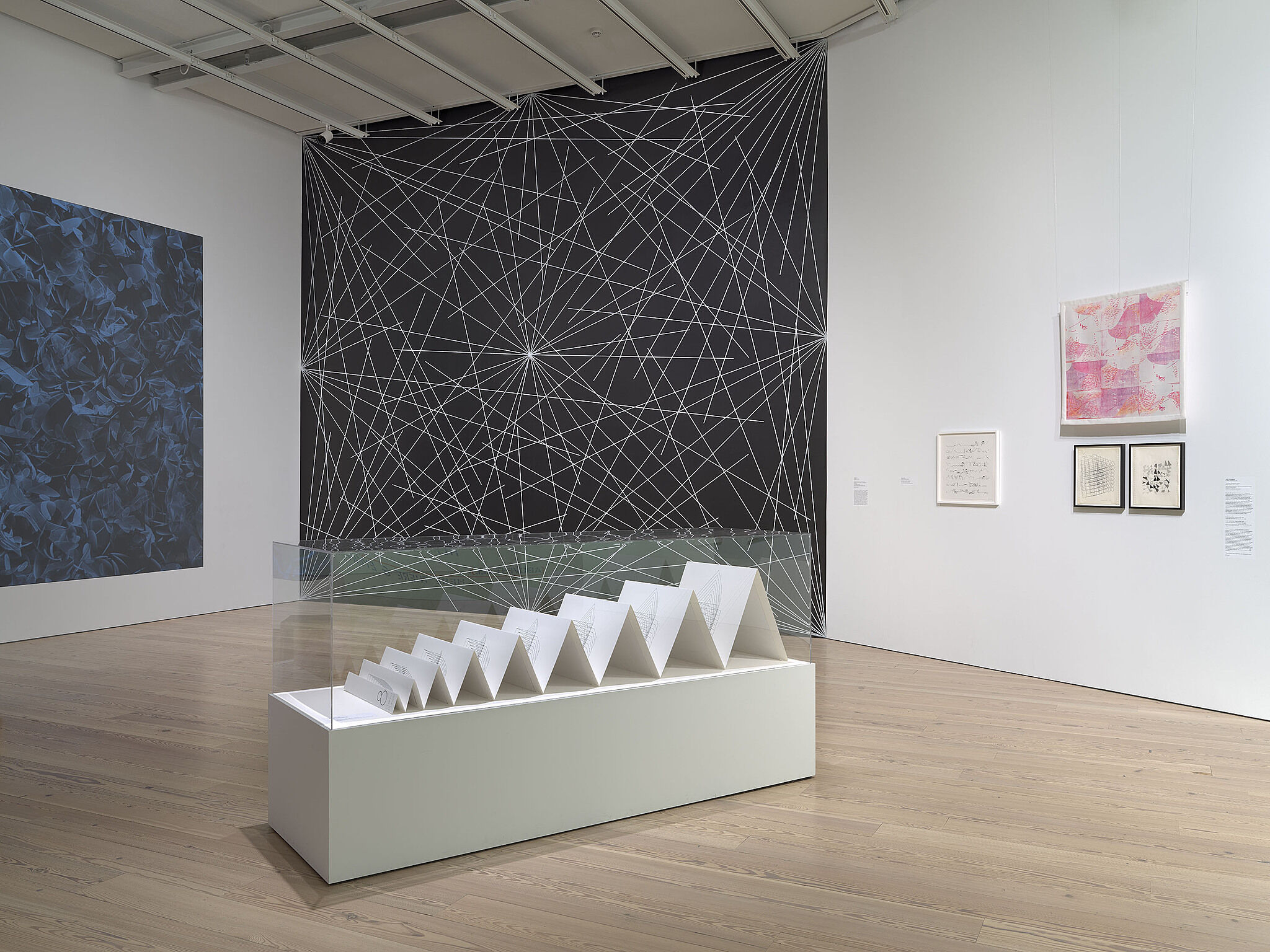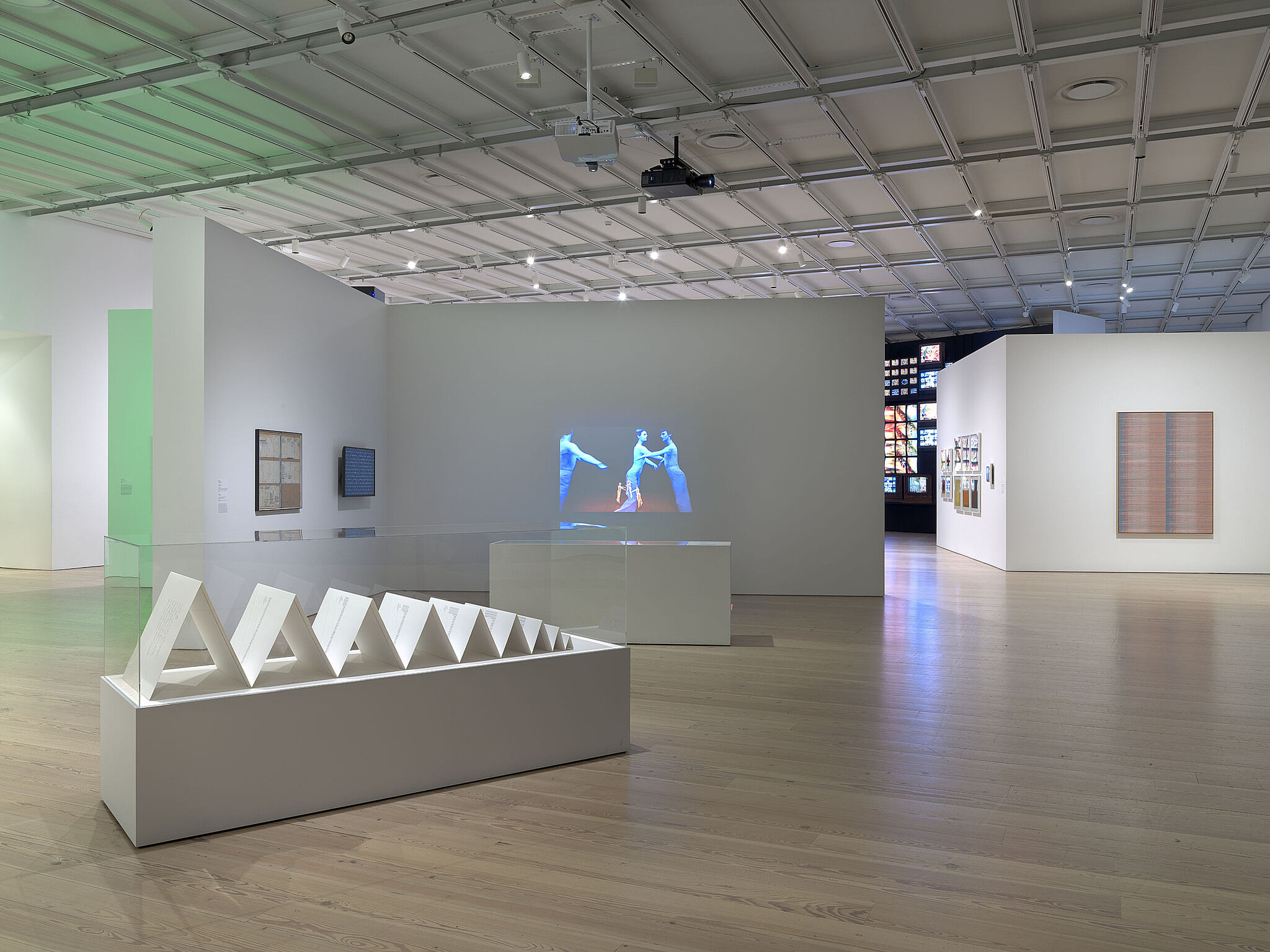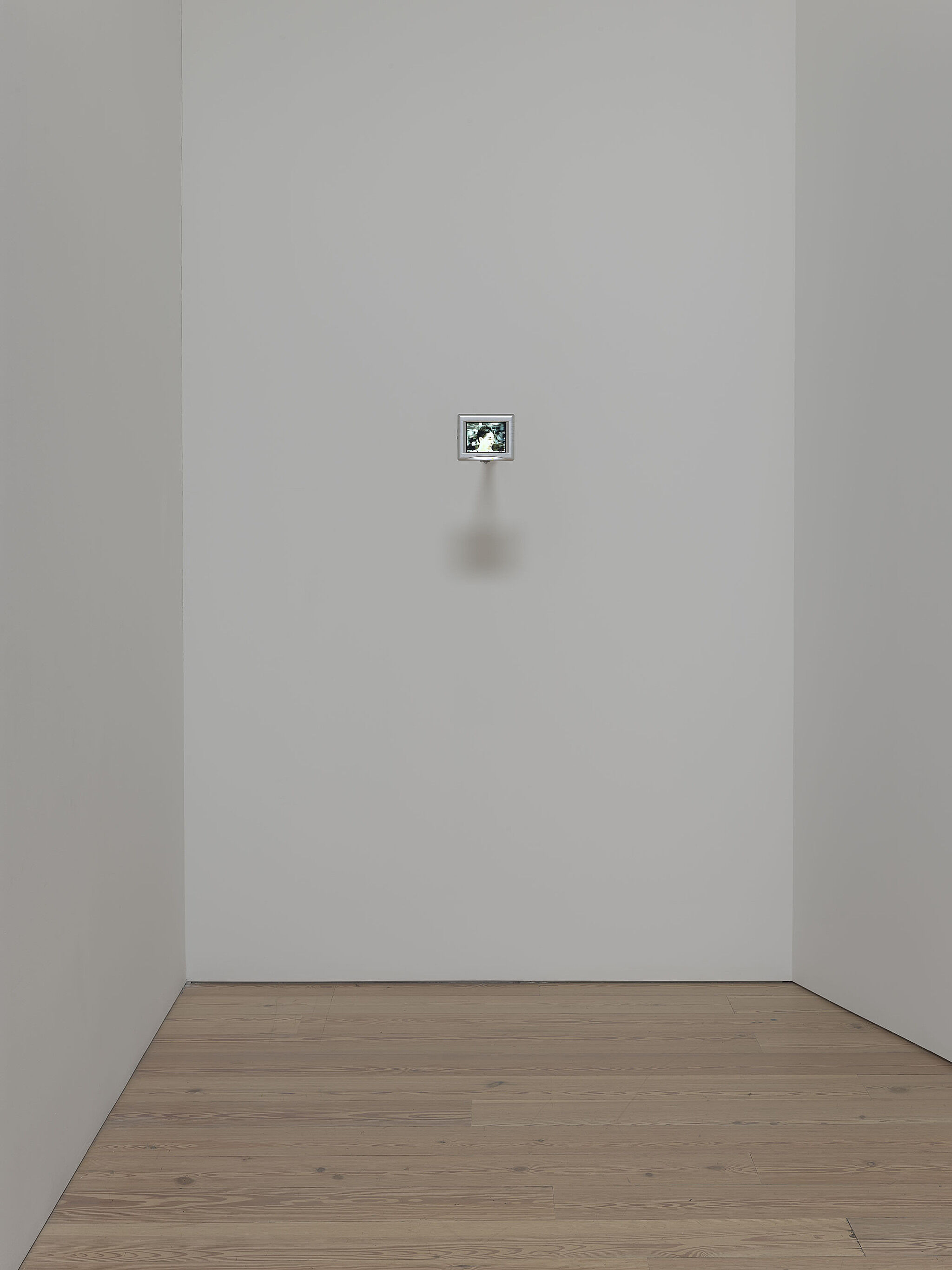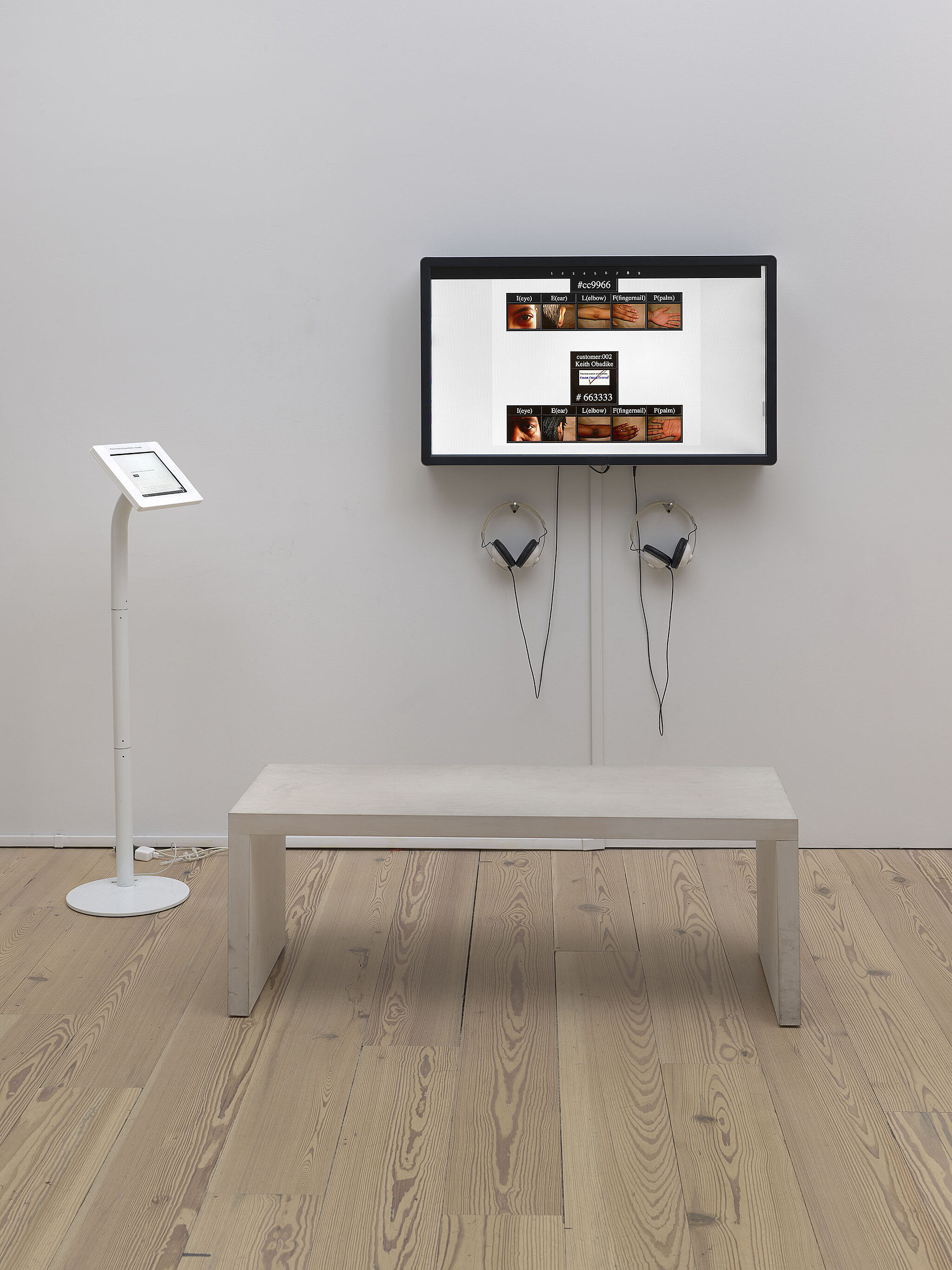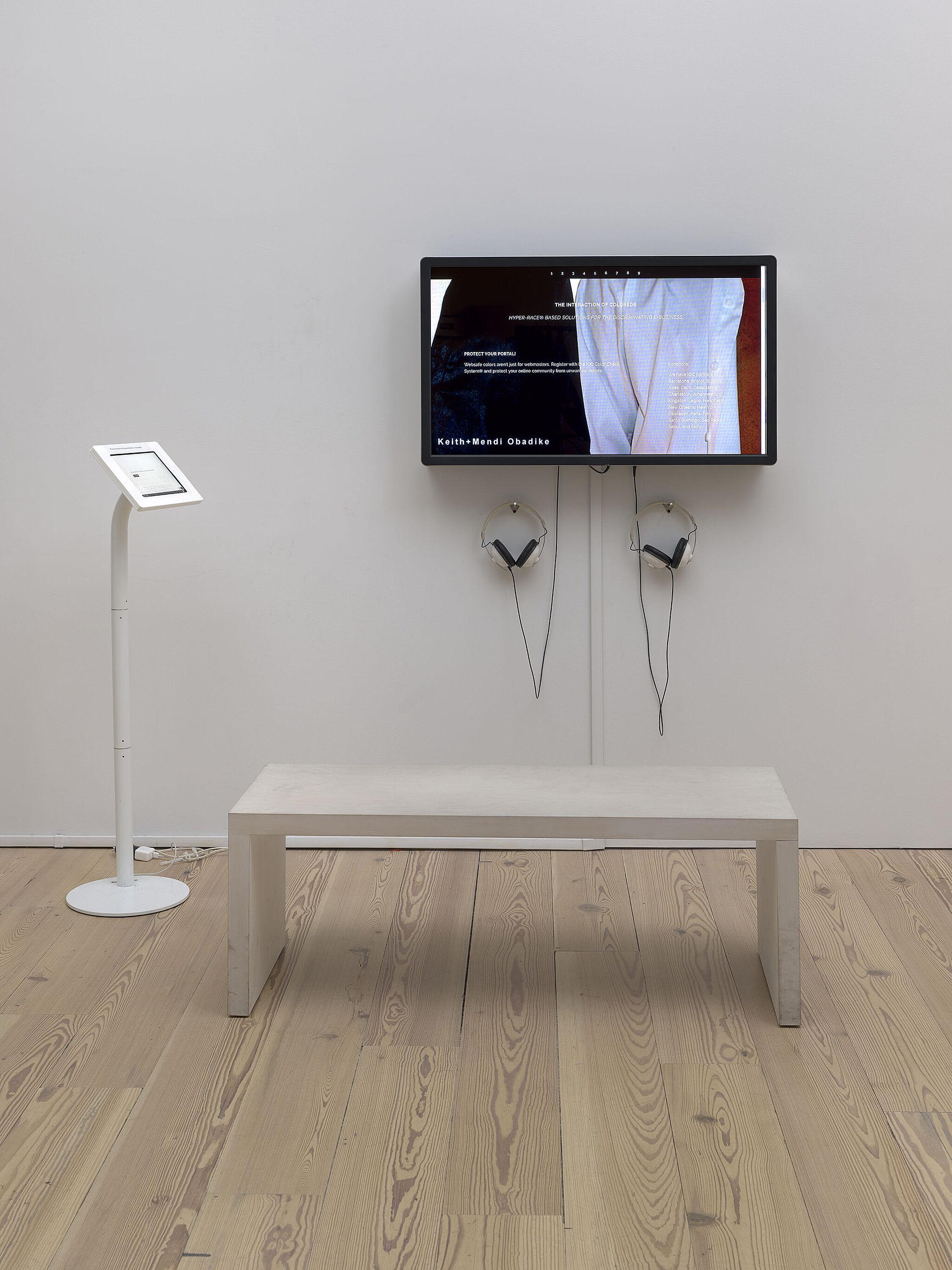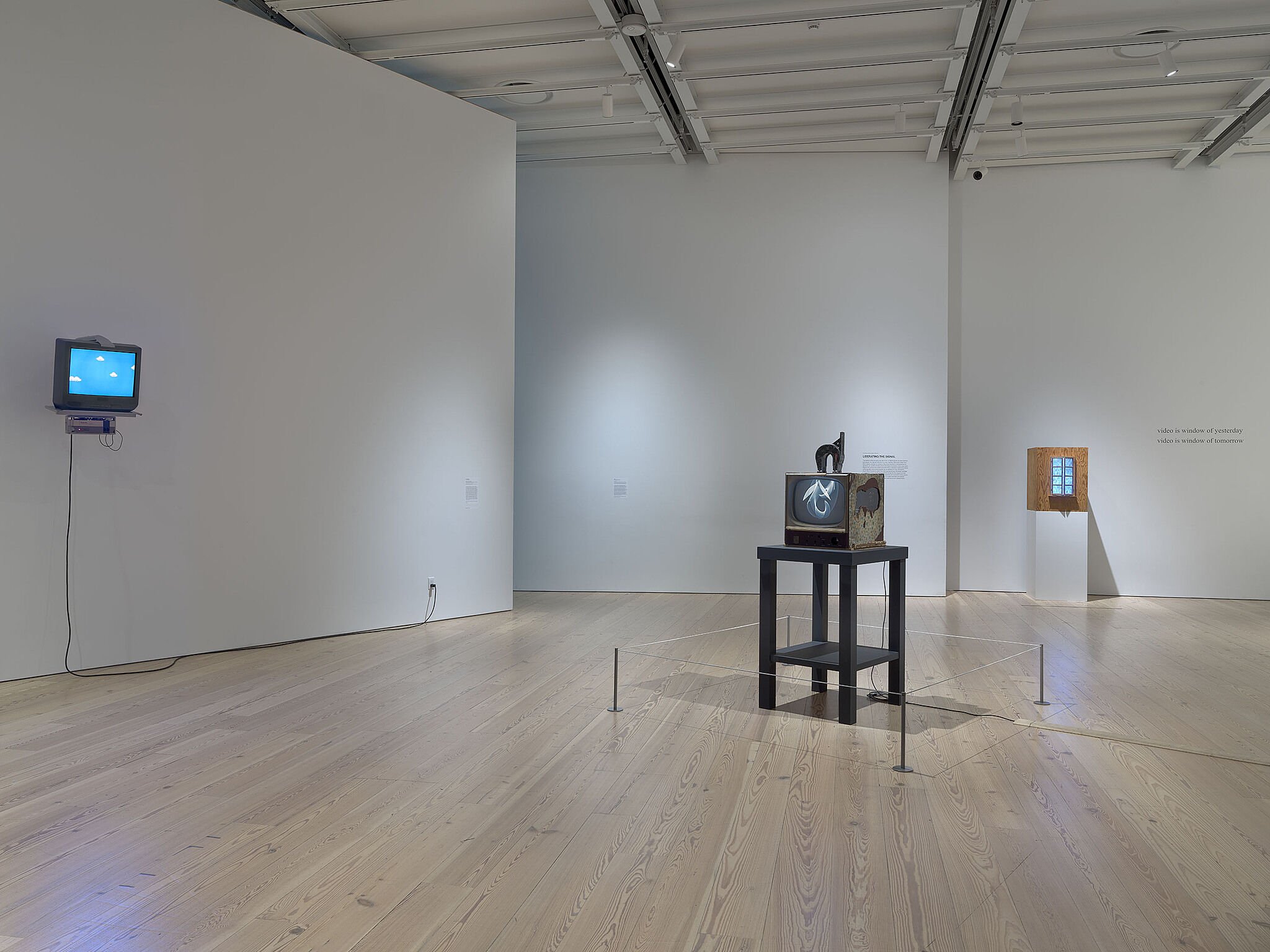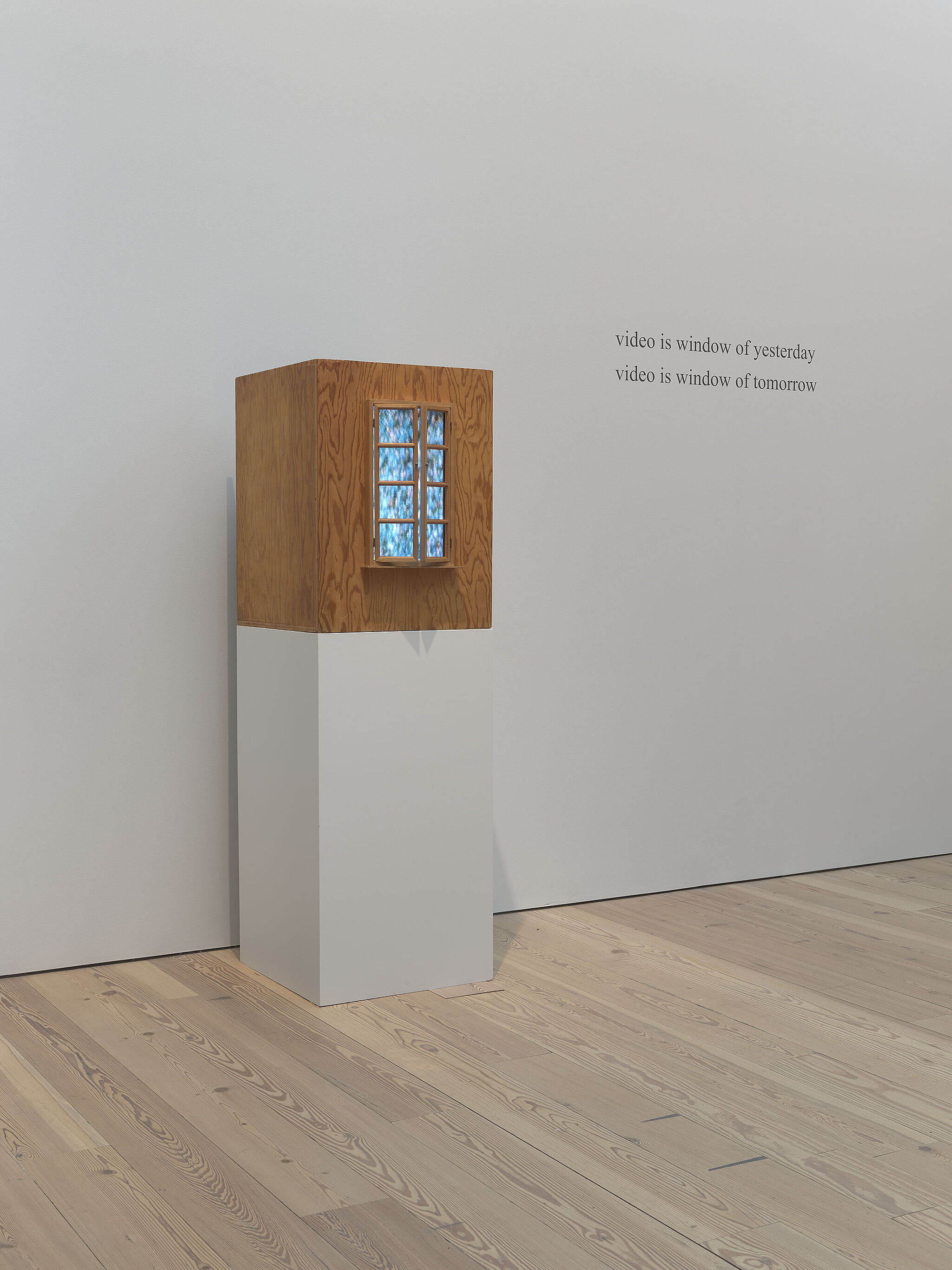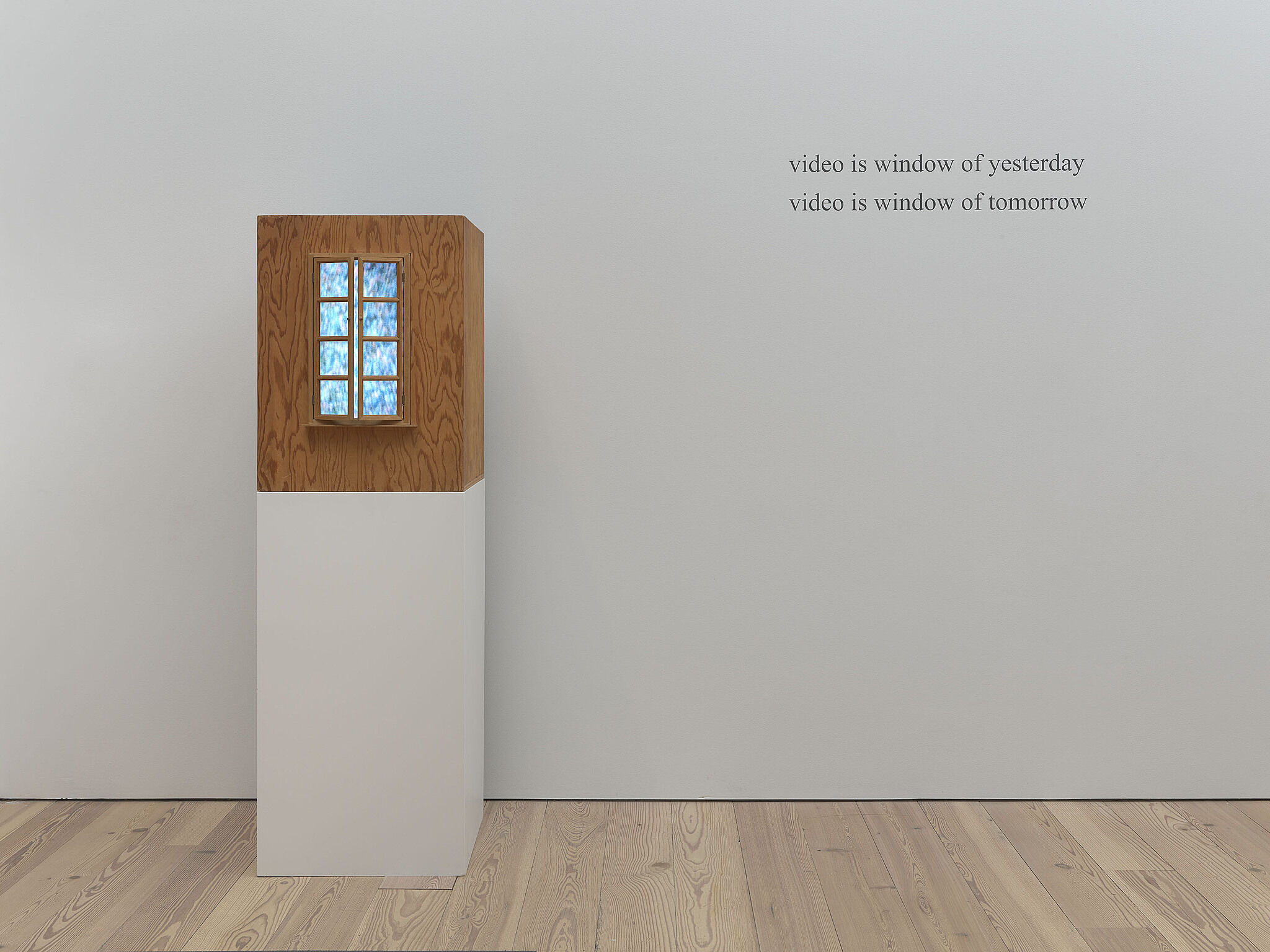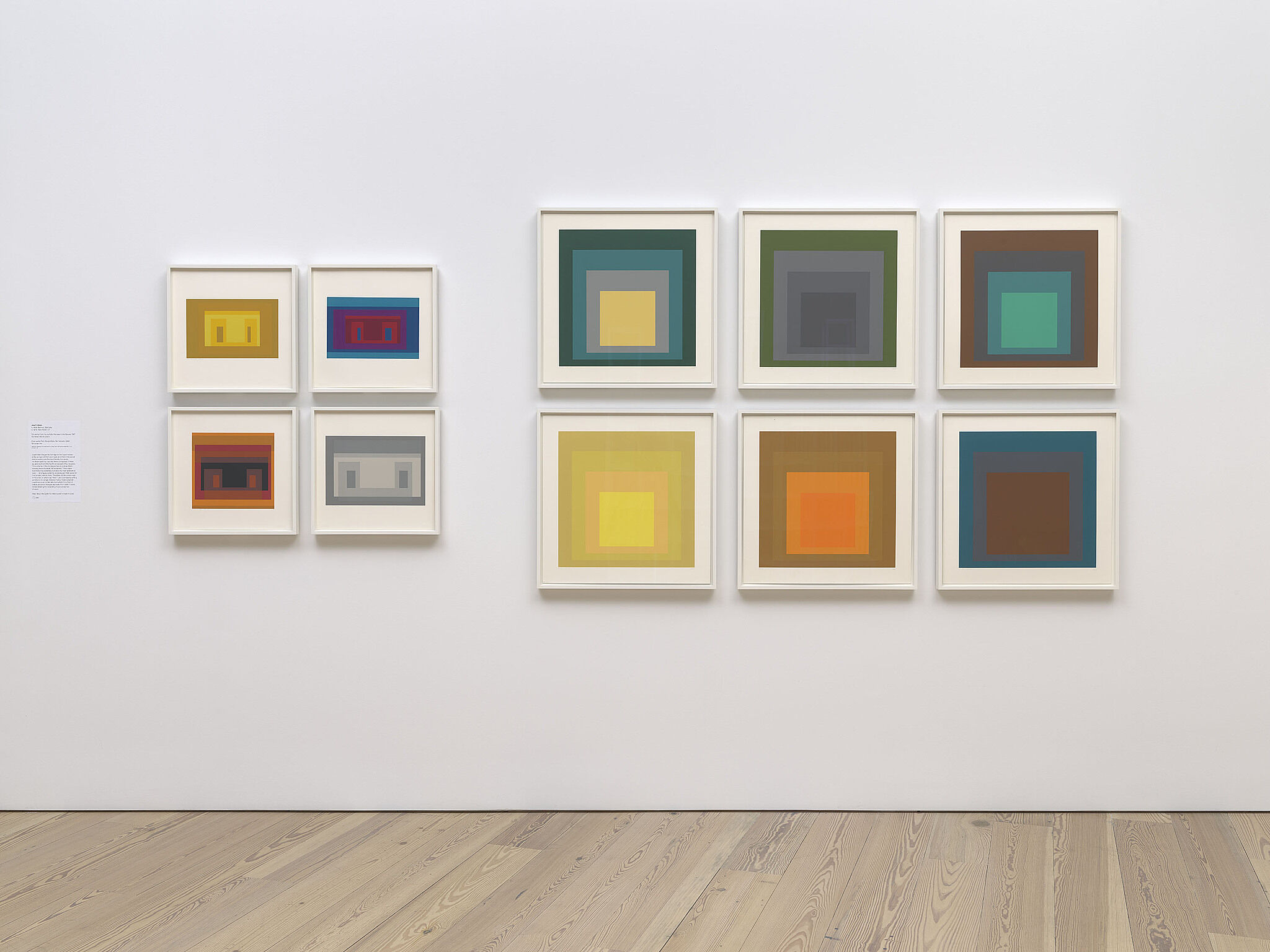Programmed: Rules, Codes, and Choreographies in Art, 1965–2018
Sept 28, 2018–Apr 14, 2019
Programmed: Rules, Codes, and Choreographies in Art, 1965–2018 establishes connections between works of art based on instructions, spanning over fifty years of conceptual, video, and computational art. The pieces in the exhibition are all “programmed” using instructions, sets of rules, and code, but they also address the use of programming in their creation. The exhibition links two strands of artistic exploration: the first examines the program as instructions, rules, and algorithms with a focus on conceptual art practices and their emphasis on ideas as the driving force behind the art; the second strand engages with the use of instructions and algorithms to manipulate the TV program, its apparatus, and signals or image sequences. Featuring works drawn from the Whitney’s collection, Programmed looks back at predecessors of computational art and shows how the ideas addressed in those earlier works have evolved in contemporary artistic practices. At a time when our world is increasingly driven by automated systems, Programmed traces how rules and instructions in art have both responded to and been shaped by technologies, resulting in profound changes to our image culture.
The exhibition is organized by Christiane Paul, Adjunct Curator of Digital Art, and Carol Mancusi-Ungaro, Melva Bucksbaum Associate Director for Conservation and Research, with Clémence White, curatorial assistant.
Please be warned this exhibition includes video and projection with a flashing light effect.
Programmed: Rules, Codes, and Choreographies in Art, 1965–2018 is sponsored by Audi
Major support is provided by the Alfred P. Sloan Foundation.
Generous support is provided by the Carl & Marilynn Thoma Art Foundation, the Korea Foundation and the Jon and Mary Shirley Foundation.
Additional support is provided by Hearst.
In-kind support is provided by the Hakuta Family.

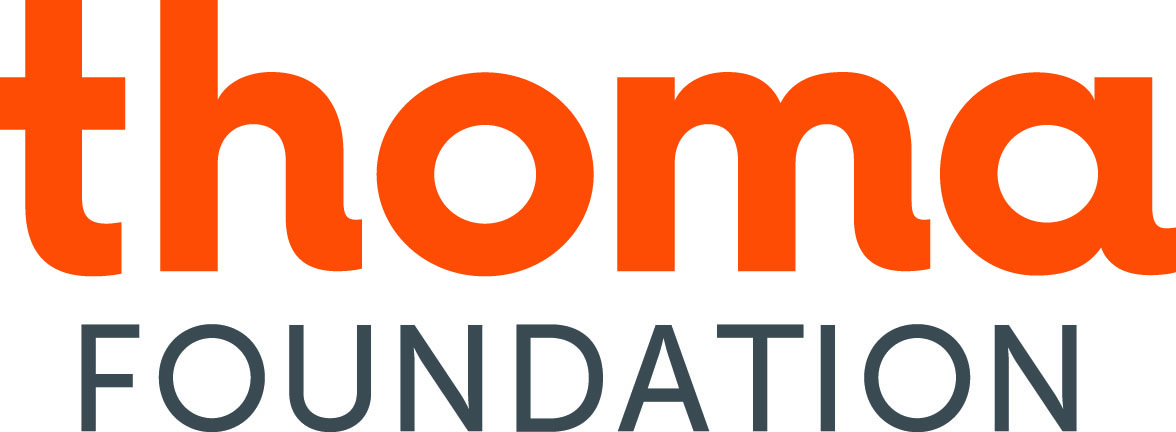
Rule, Instruction, Algorithm:
Ideas as Form
1
Artists have long used instructions and abstract concepts to produce their work, employing mathematical principles, creating thought diagrams, or establishing rules for variations of color. Conceptual art—a movement that began in the late 1960s—went a step further, explicitly emphasizing the idea as the driving force behind the form of the work. In his “Paragraphs on Conceptual Art” (1967), Sol LeWitt wrote: “The plan would design the work. Some plans would require millions of variations, and some a limited number, but both are finite. Other plans imply infinity.” The works in this grouping—from Sol LeWitt’s large-scale wall drawing and Josef Albers’s series of nesting colored squares and rectangles to Lucinda Childs’s dances and Joan Truckenbrod’s computer drawings—all directly address the rules and instructions used in their creation. Essential to each is an underlying system that allows the artist to generate variable images and objects.
Casey Reas, {Software} Structures, Sol LeWitt Wall Drawing #358, August 2004/2016
Casey Reas’s Sol LeWitt Wall Drawing #358, part of his {Software} Structures series, is a software modification of a 1981 work by LeWitt that is not in this exhibition but was inspired by LeWitt’s collaboration with Lucinda Childs and Philip Glass on Dance (1979), on view nearby. Reas’s program updates itself four times per second, displaying a randomly selected composition of arcs. The arc, which features prominently in Dance, also dominates LeWitt’s Wall Drawing #358 and becomes a formal connection between Childs, Reas, and LeWitt.
Artists
- Josef Albers
- Cory Arcangel
- Tauba Auerbach
- Jonah Brucker-Cohen
- Jim Campbell
- Ian Cheng
- Lucinda Childs
- Charles Csuri
- Agnes Denes
- Alex Dodge
- Charles Gaines
- Philip Glass
- Frederick Hammersley
- Channa Horwitz
- Donald Judd
- Joseph Kosuth
- Shigeko Kubota
- Marc Lafia
- Barbara Lattanzi
- Lynn Hershman Leeson
- Sol LeWitt
- Fang-yu Lin
- Manfred Mohr
- Katherine Moriwaki
- Mendi + Keith Obadike
- Nam June Paik
- William Bradford Paley
- Paul Pfeiffer
- Casey Reas
- Earl Reiback
- Rafaël Rozendaal
- Lillian Schwartz
- James L. Seawright
- John F. Simon Jr.
- Steina
- Mika Tajima
- Tamiko Thiel
- Cheyney Thompson
- Joan Truckenbrod
- Siebren Versteeg
- Lawrence Weiner
Events
View all-
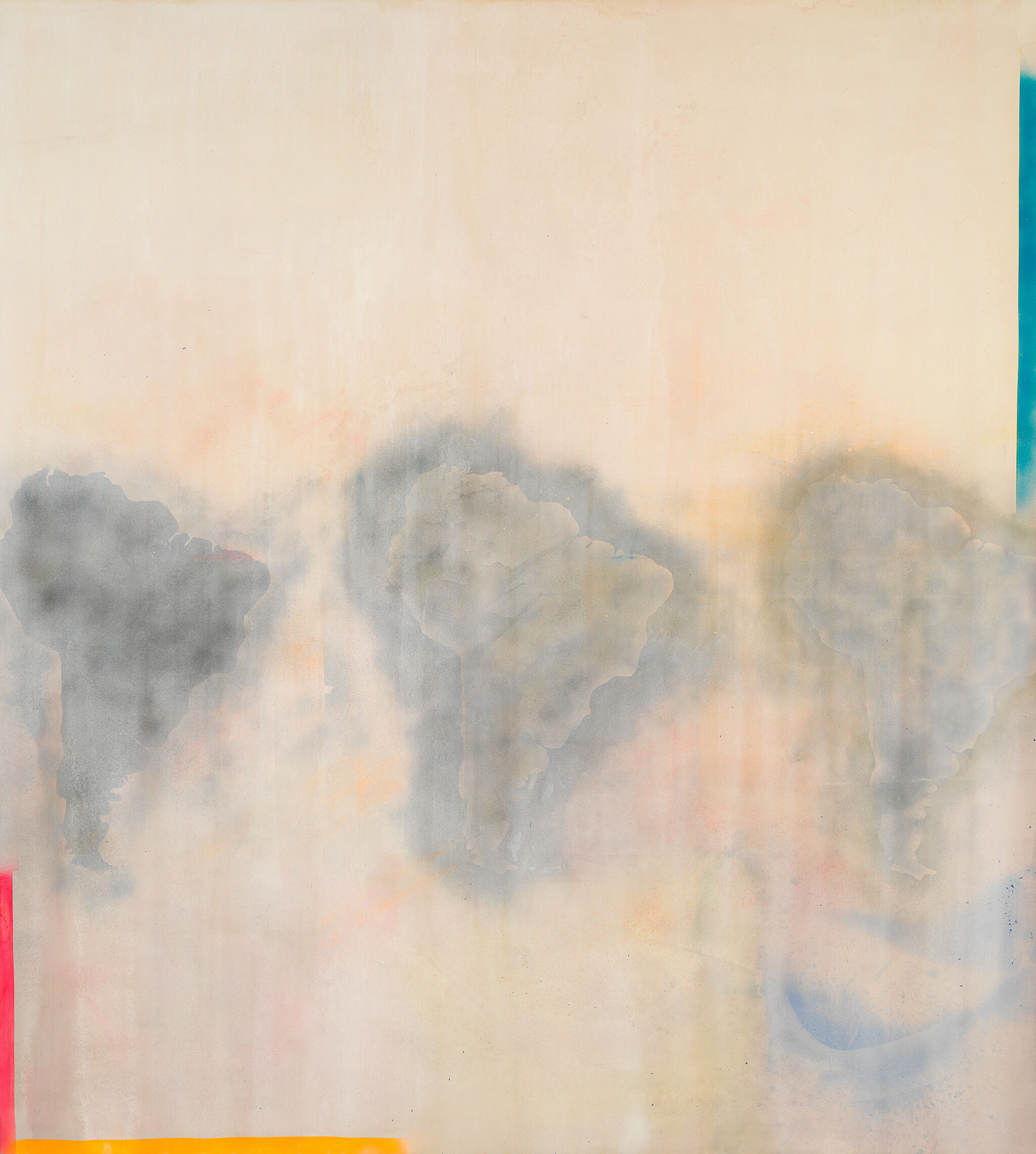
Ethics of Looking
Repeats
Saturday, April 27, 2019
4:30 pm -
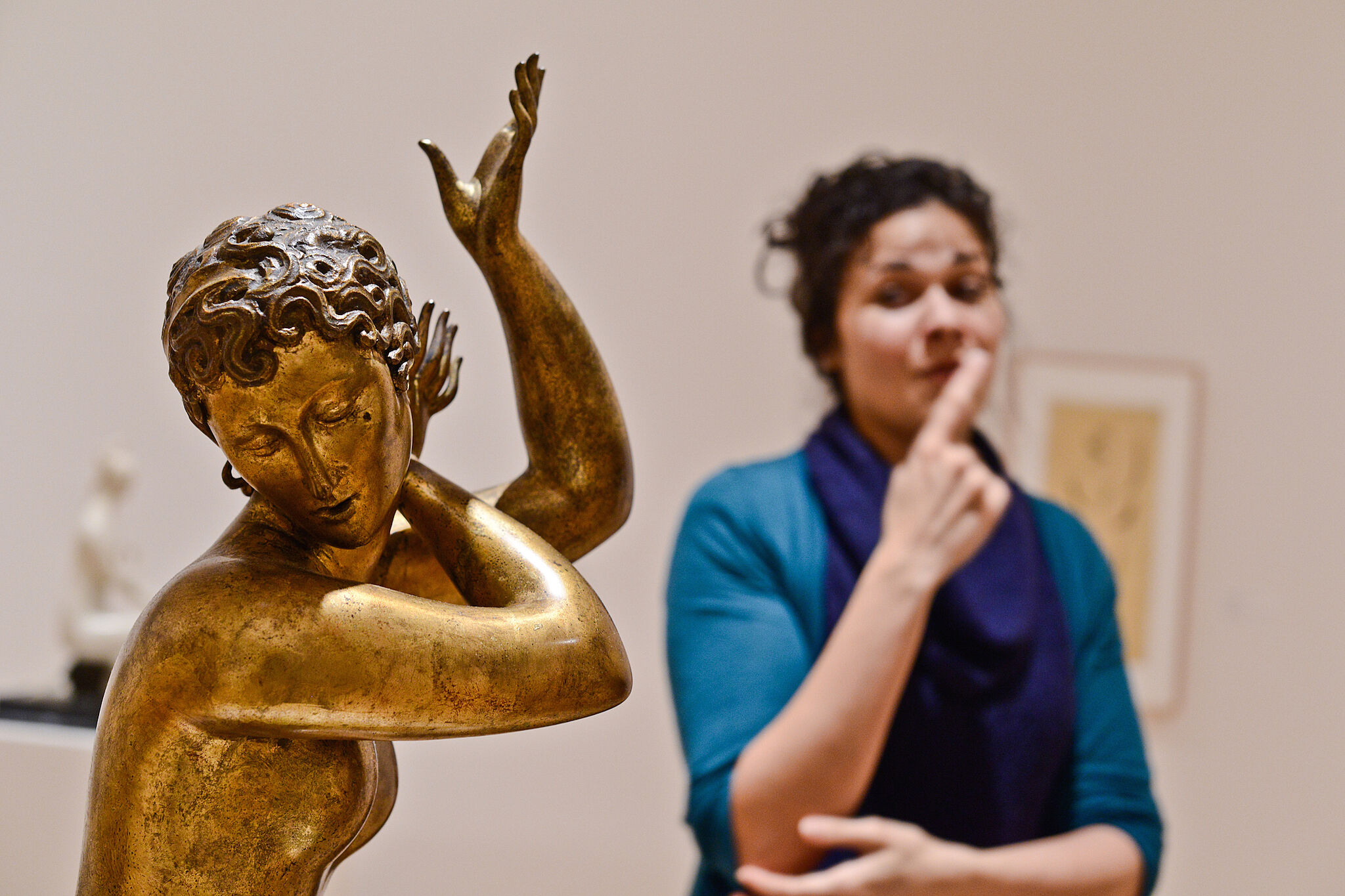
Whitney Signs: Programmed: Rules, Codes, and Choreographies in Art, 1965–2018
Saturday, April 6, 2019
4–6 pm -
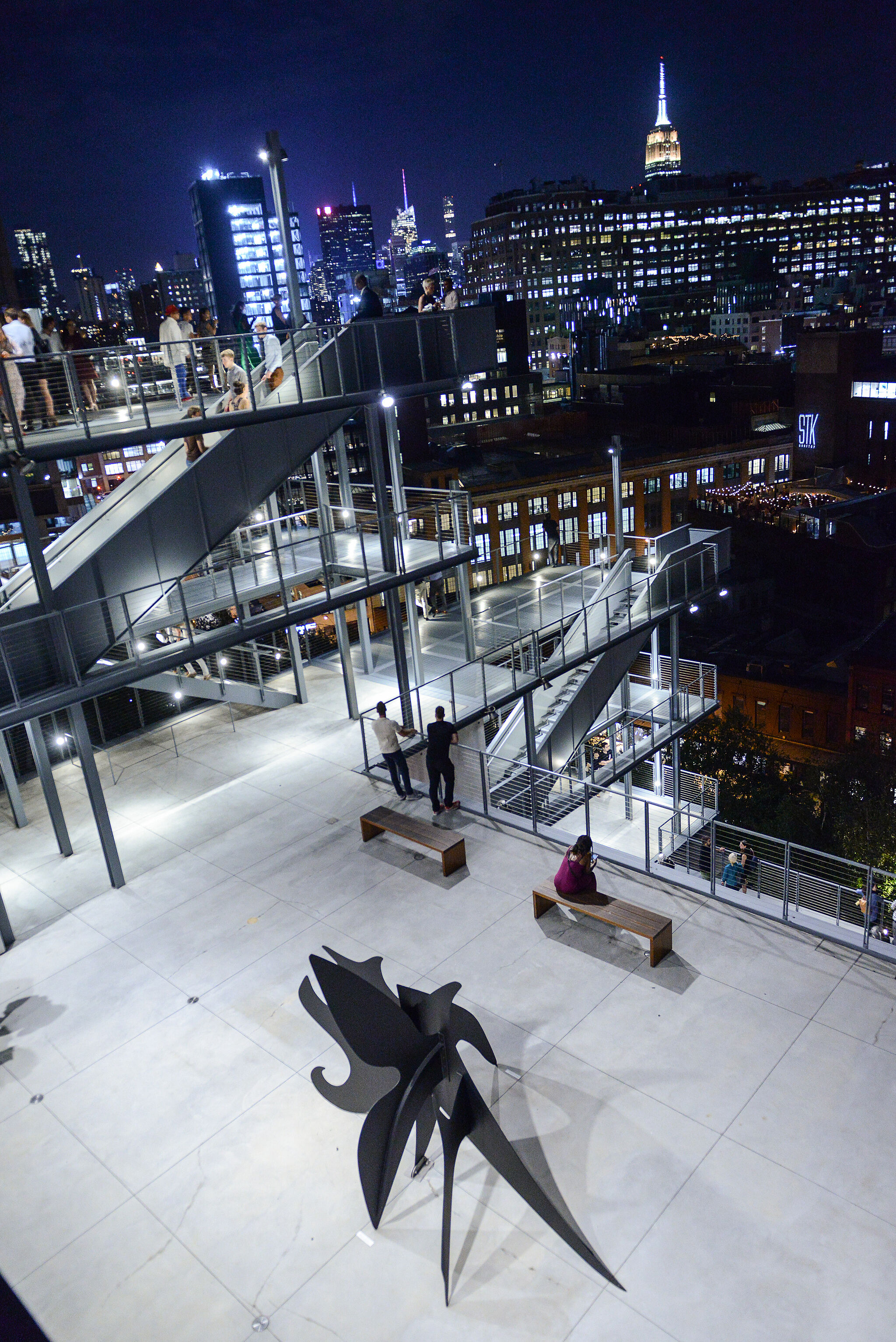
Member Night
Thursday, March 28, 2019
7:30–10 pm -
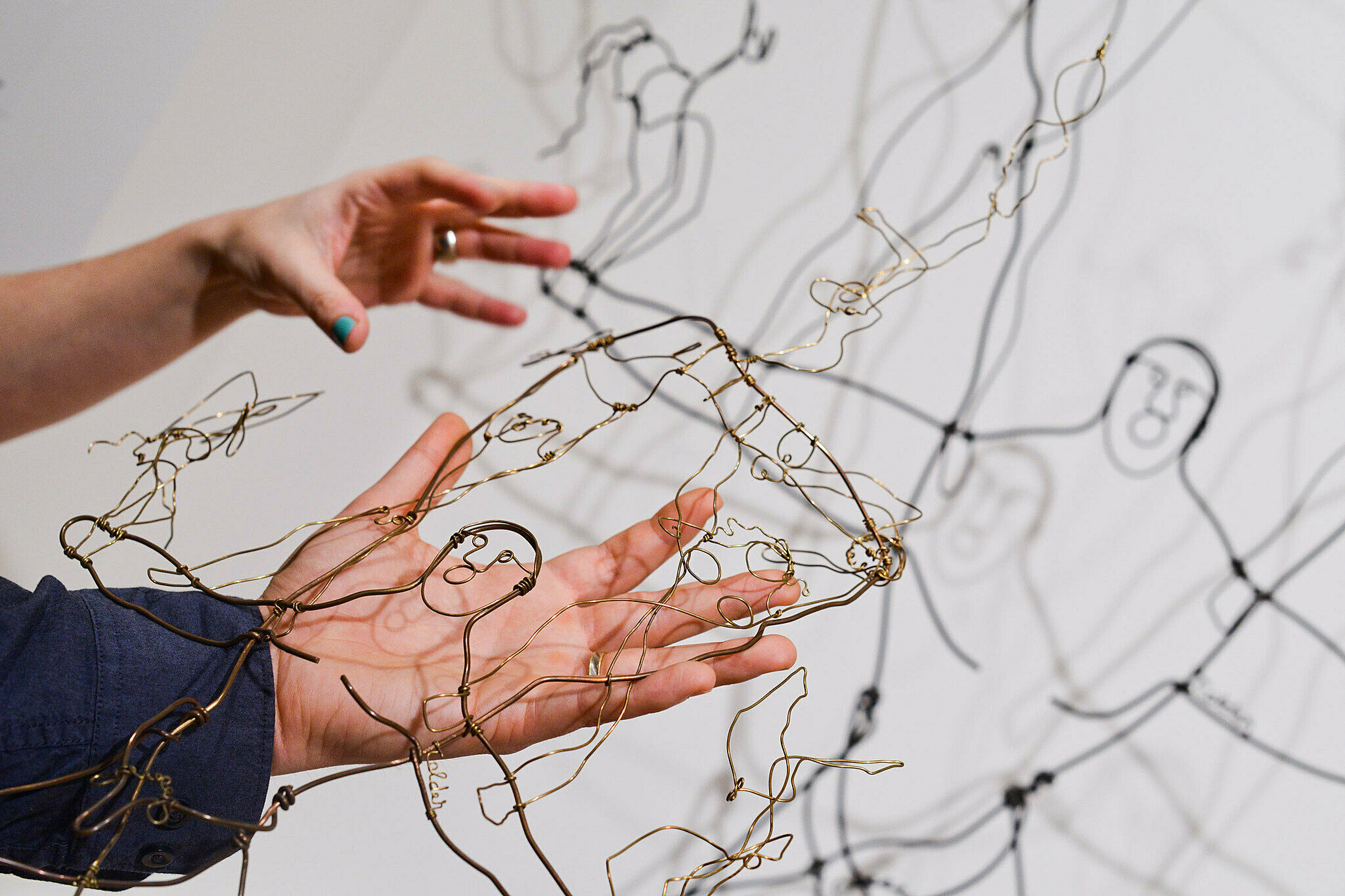
Verbal Description and Touch Tour: Programmed: Rules, Codes, and Choreographies in Art, 1965–2018
Friday, March 22, 2019
10–11:30 am
Mobile guides
“The hope was for me as an artist to lose control, and to have my control exist at the level of setting up the experiment.” —Ian Cheng
Hear directly from artists and curators on selected works from Programmed: Rules, Codes, and Choreographies in Art, 1965–2018.
Explore works from this exhibition
in the Whitney's collection
View 67 works
In the News
"How Artists Made Code Their Paintbrush"
—Science Friday
"Tamiko Thiel’s 'Unexpected Growth' is an augmented reality installation on the future of oceans and climate change."
—Hyperallergic
"The exhibit uses the Whitney’s own collection to explore how computational art has evolved and changed over the decades based on technology."
—Smithsonian
"Is a particularly urgent, relevant exhibition and a perfect setting in which to consider some of the most pressing questions of our time.”
—Sotheby’s Museum Network
"Programmed explores the limits of code-based art, looking at past generations of computational art and illustrating how the ideas of earlier works have developed to form new contemporary styles.”
—SVA NYC
“From early mathematical works, to Generative art, to digital art in a variety of media, the works in Programmed take many forms.”
—Art and Object
"Artists play and experiment with algorithms and technology, working within limits but achieving effects greater than the sum of their codes or instructions. The duality at play in this exhibition is as separable as the wave and particle natures of light. To recognize only one explanation would be reductive; to see both is beautiful.”
—Scientific American
“Paik captured both the allure and the futility of following events that happen so quickly they don't register before they're outdated.”
—Forbes


